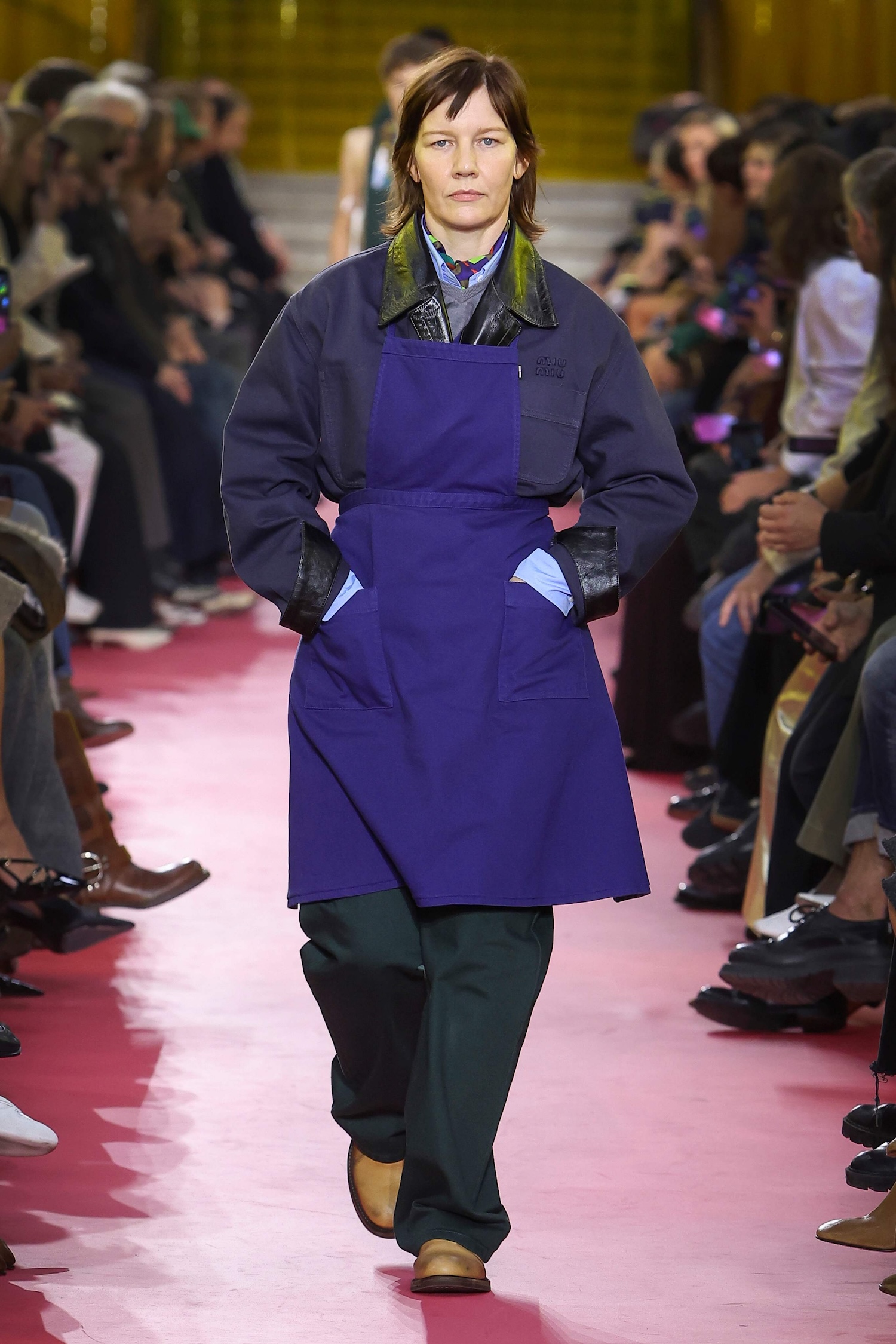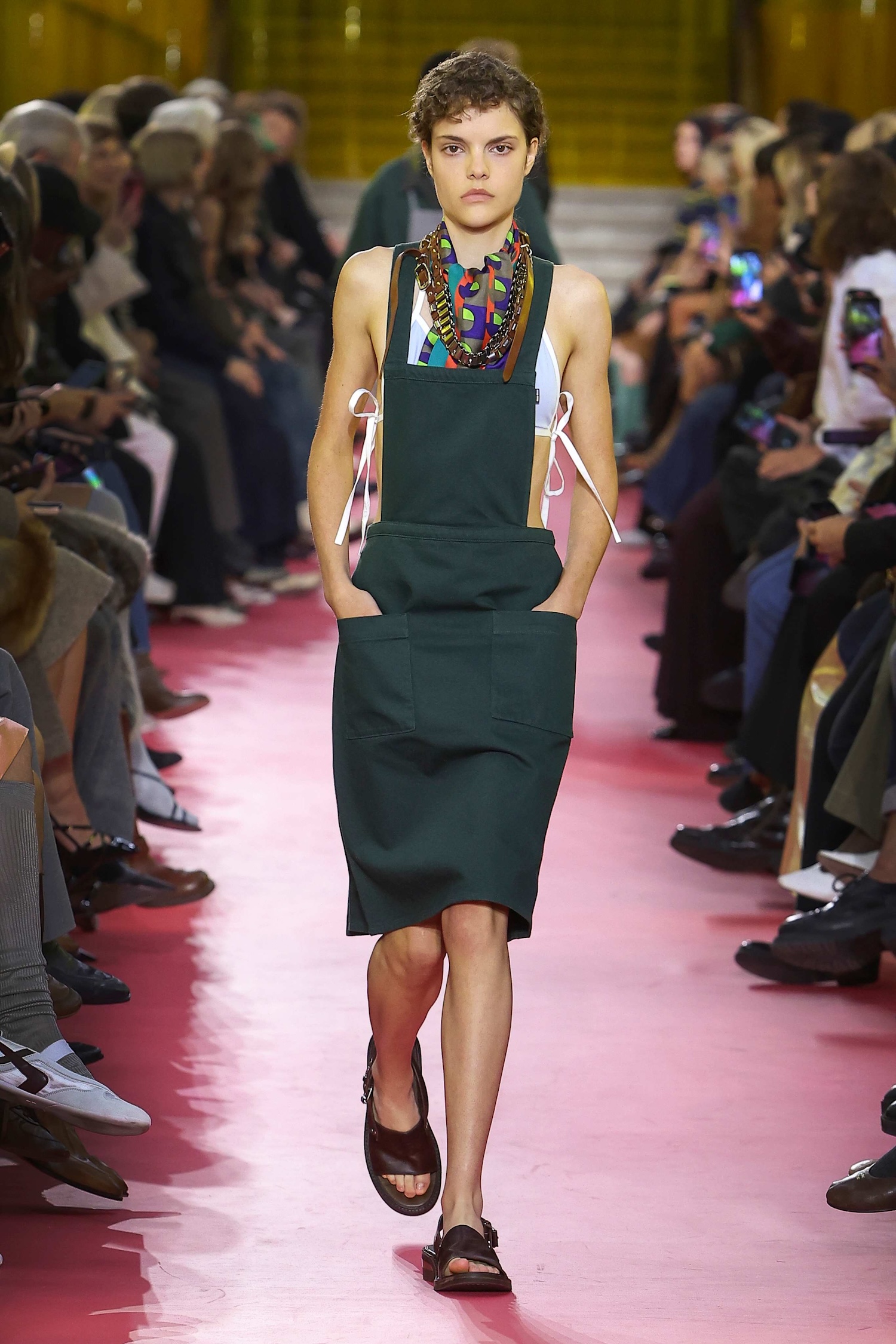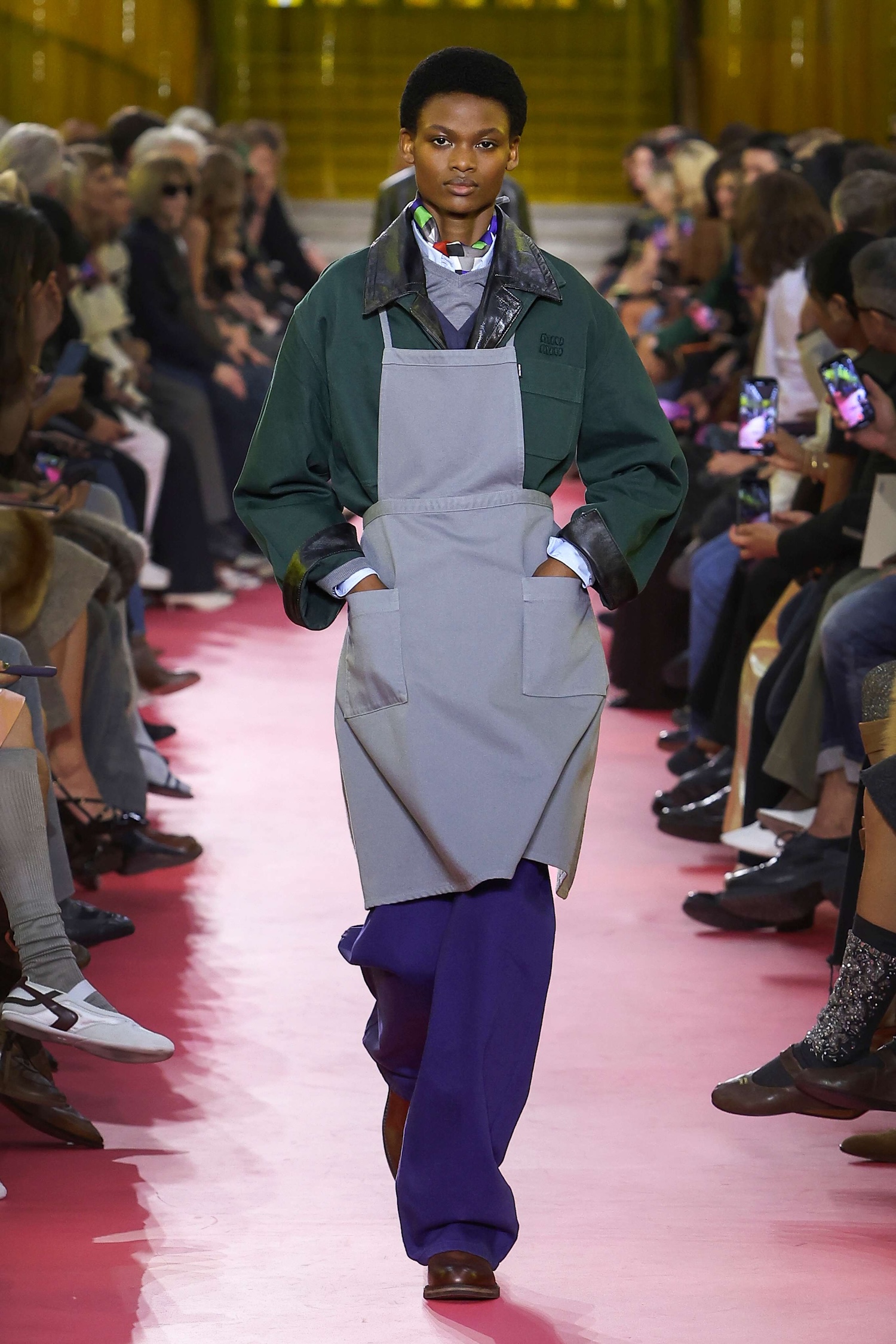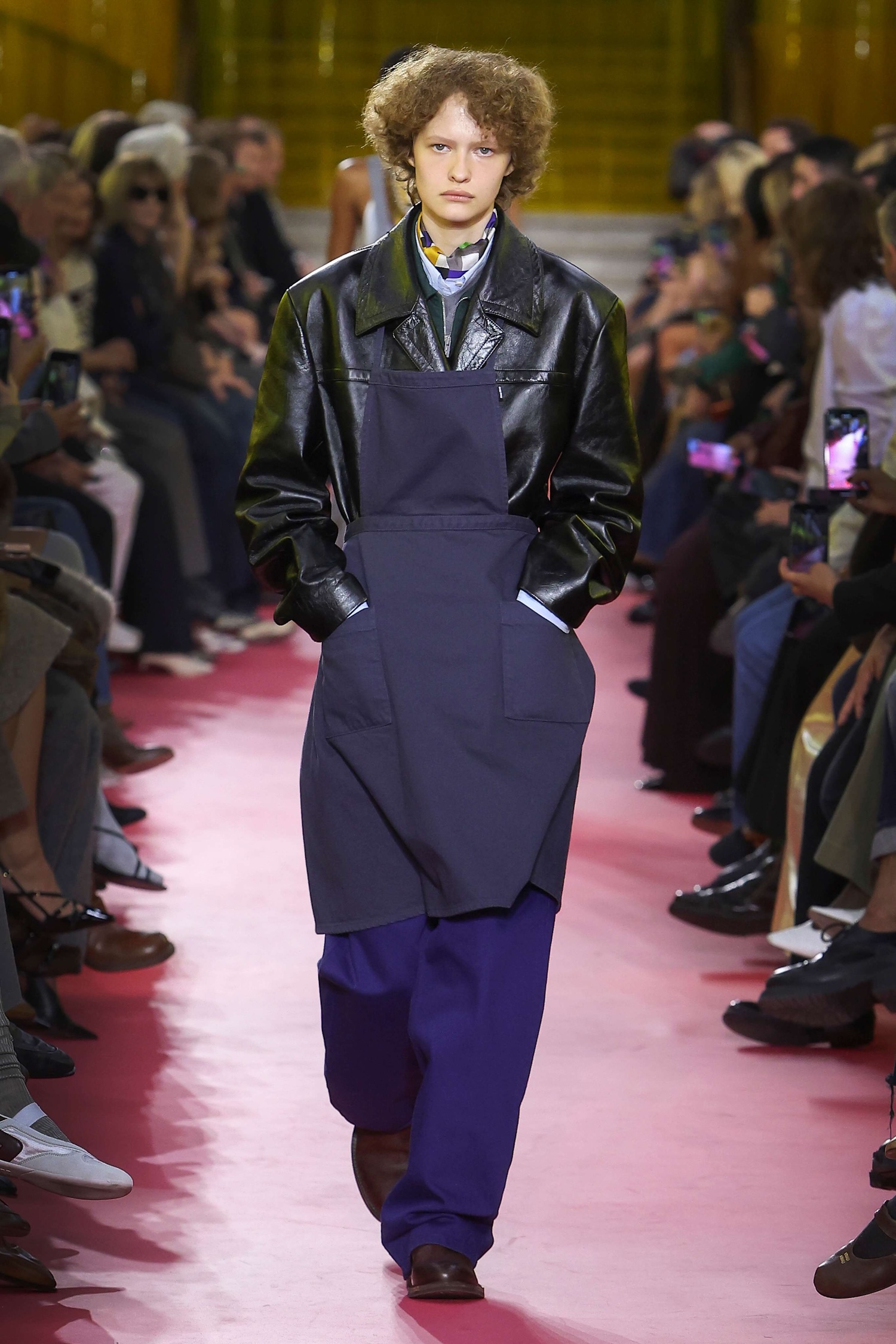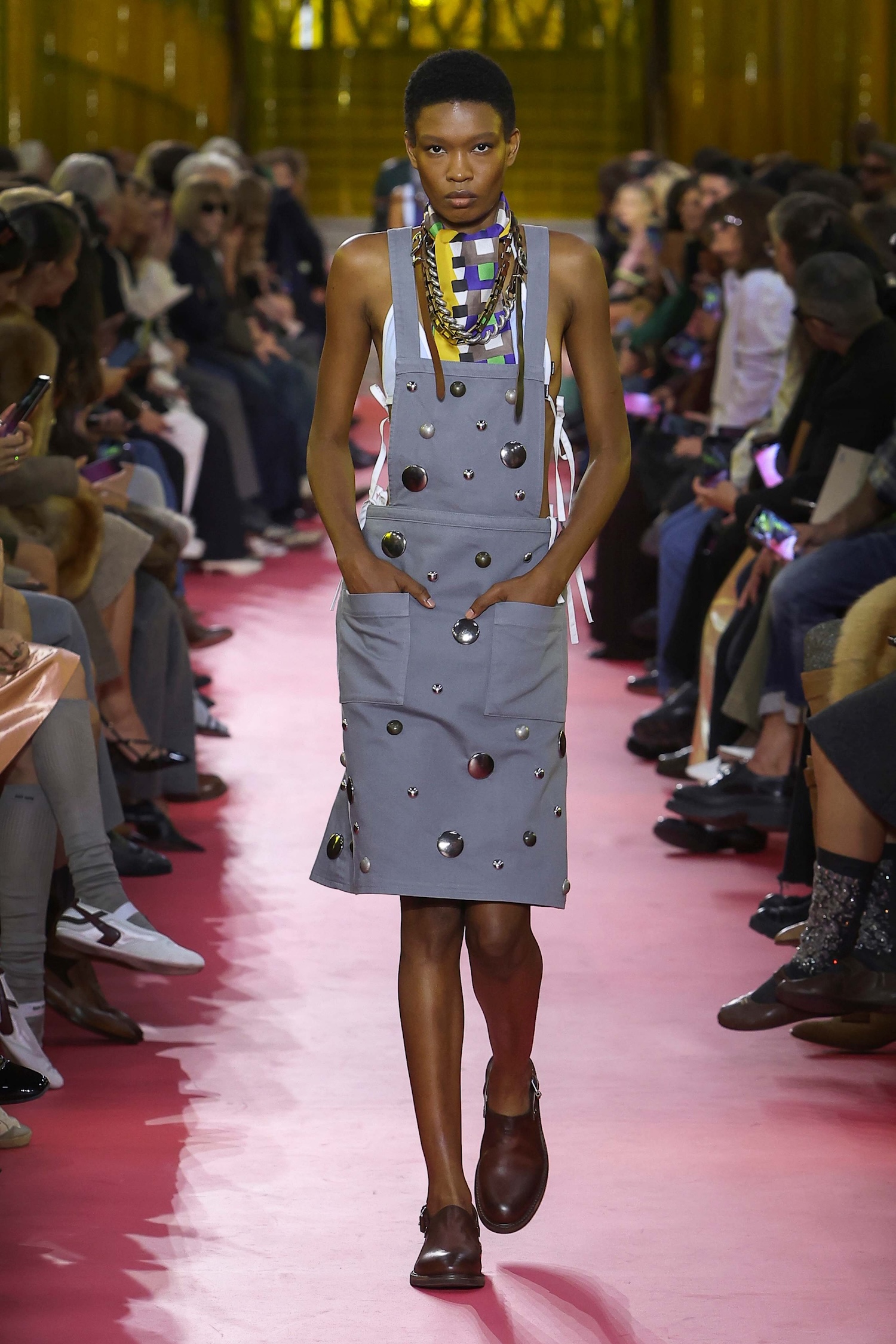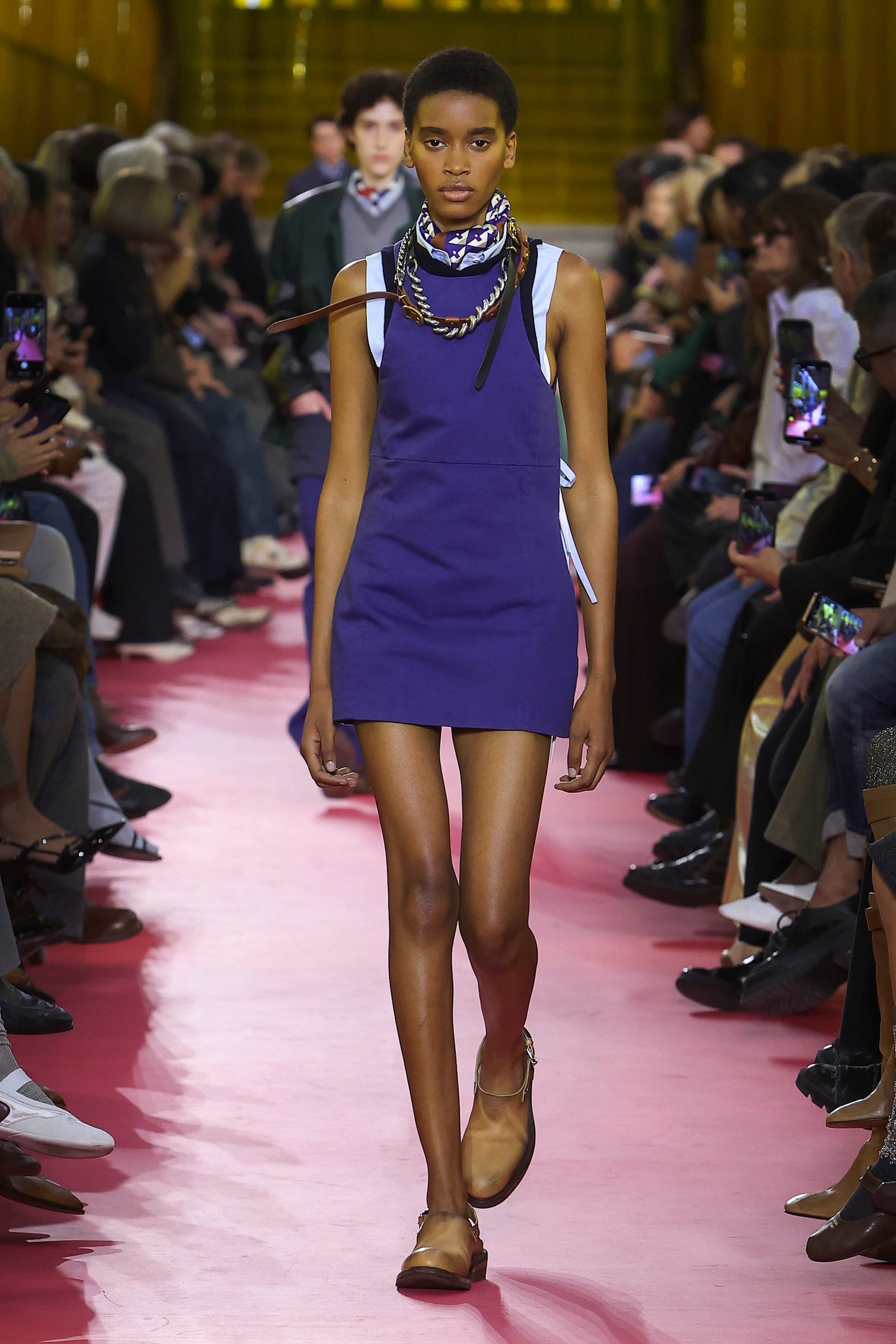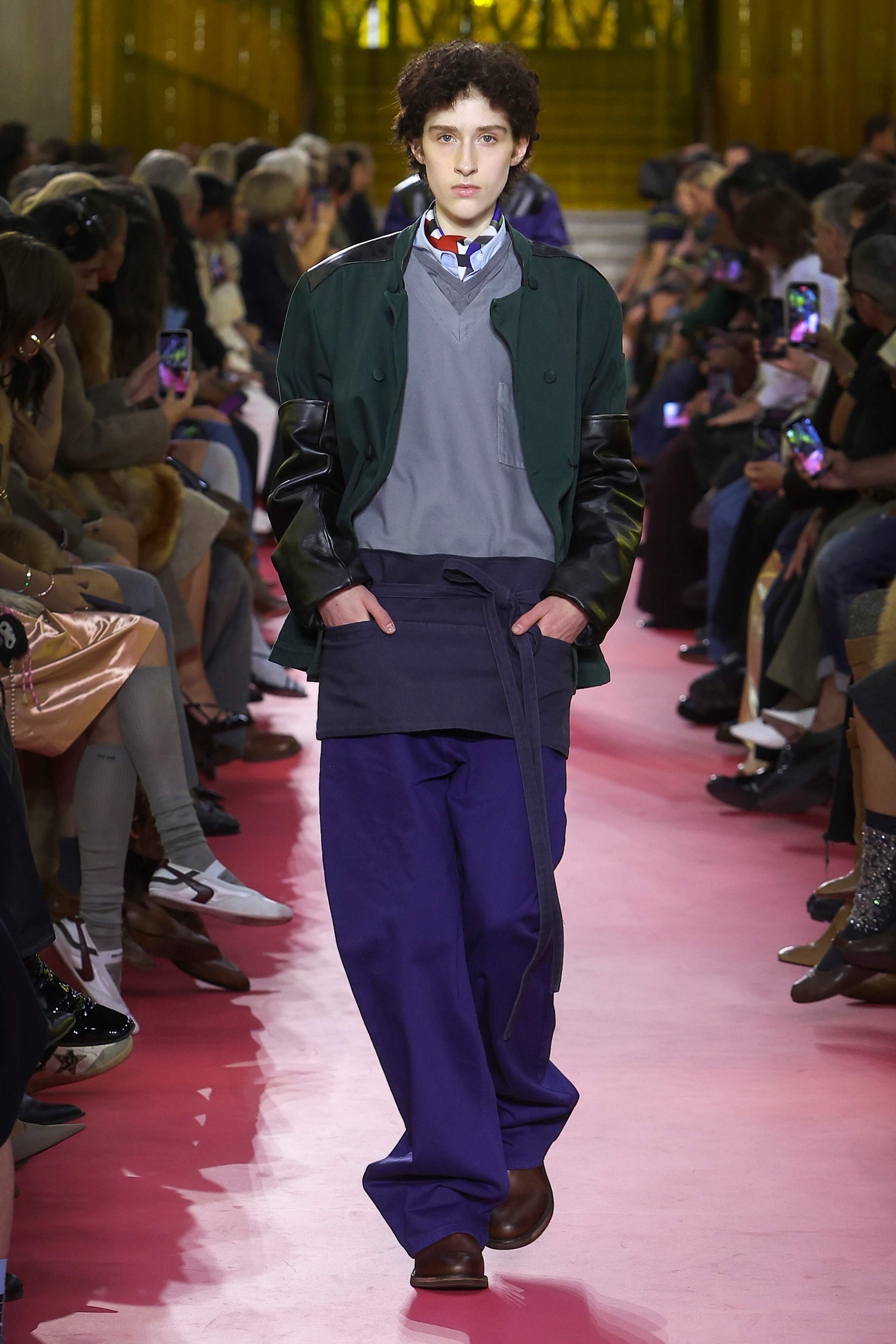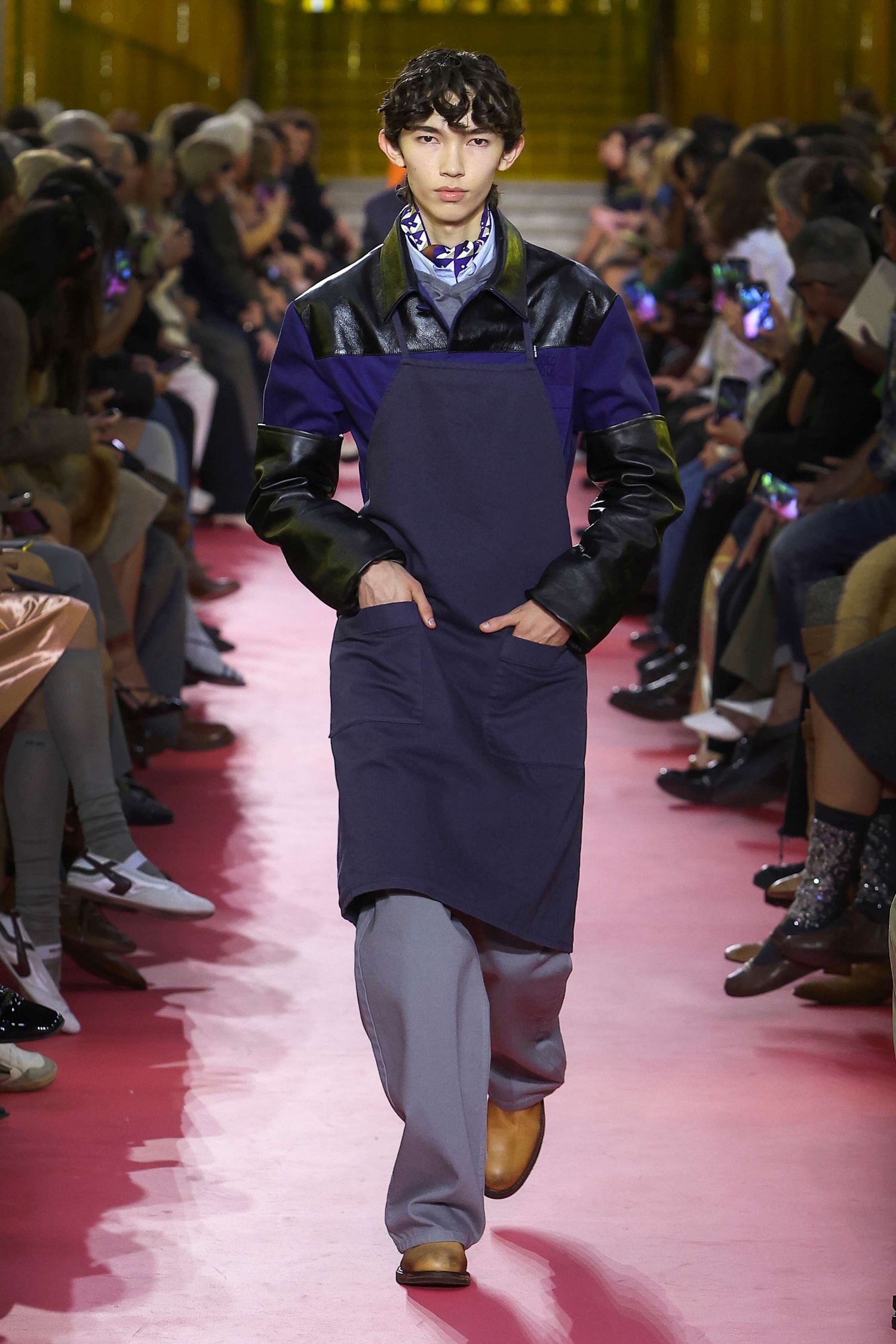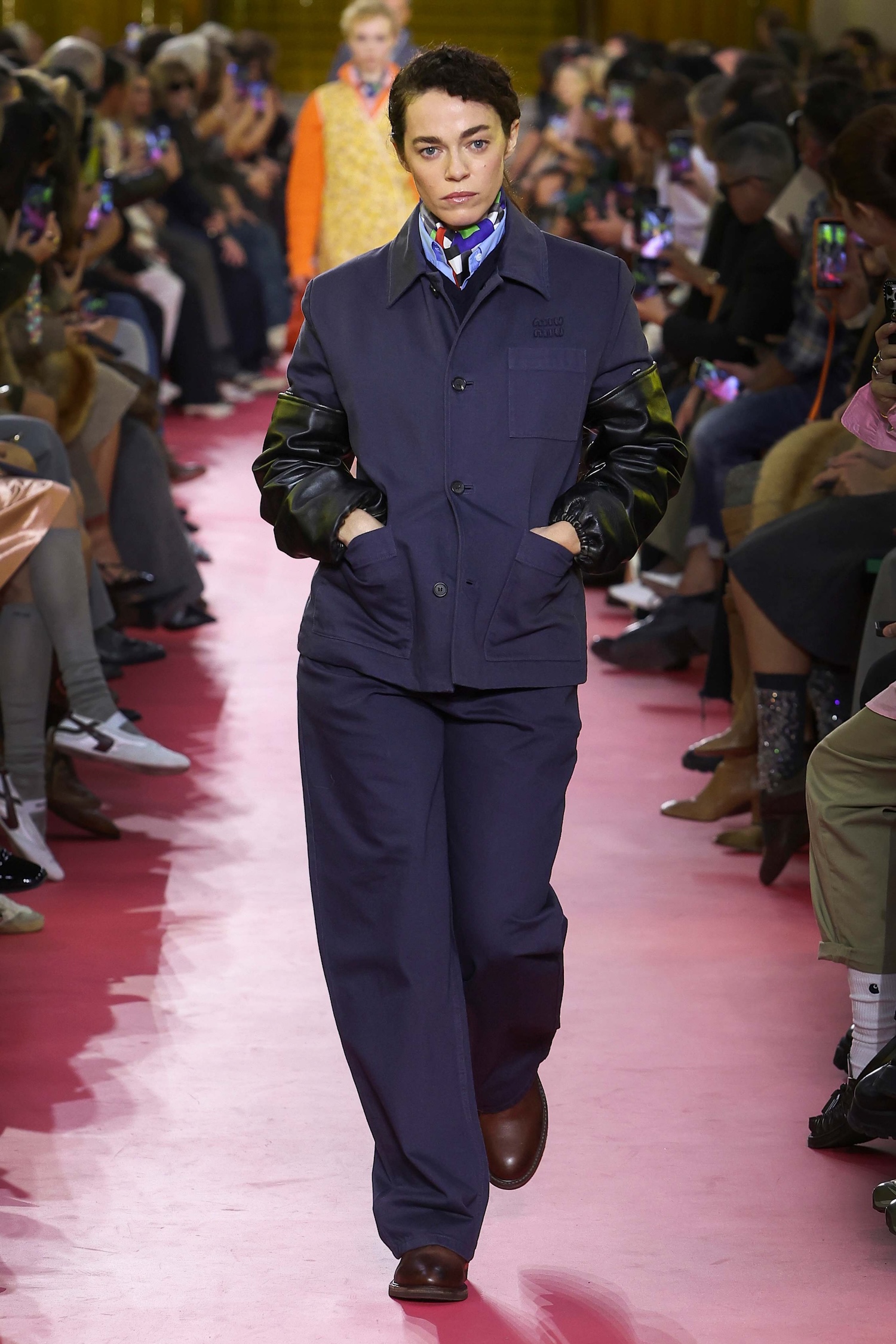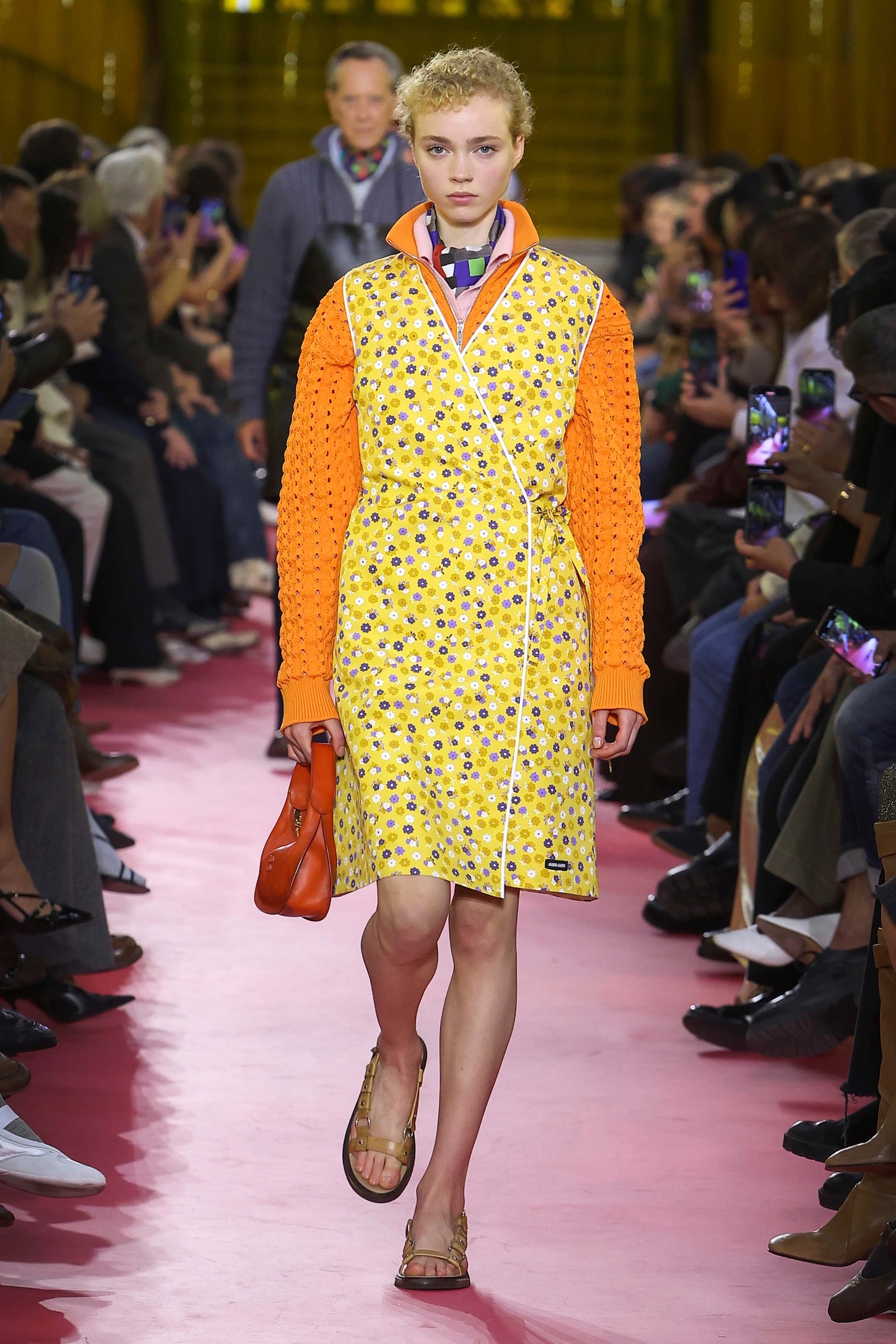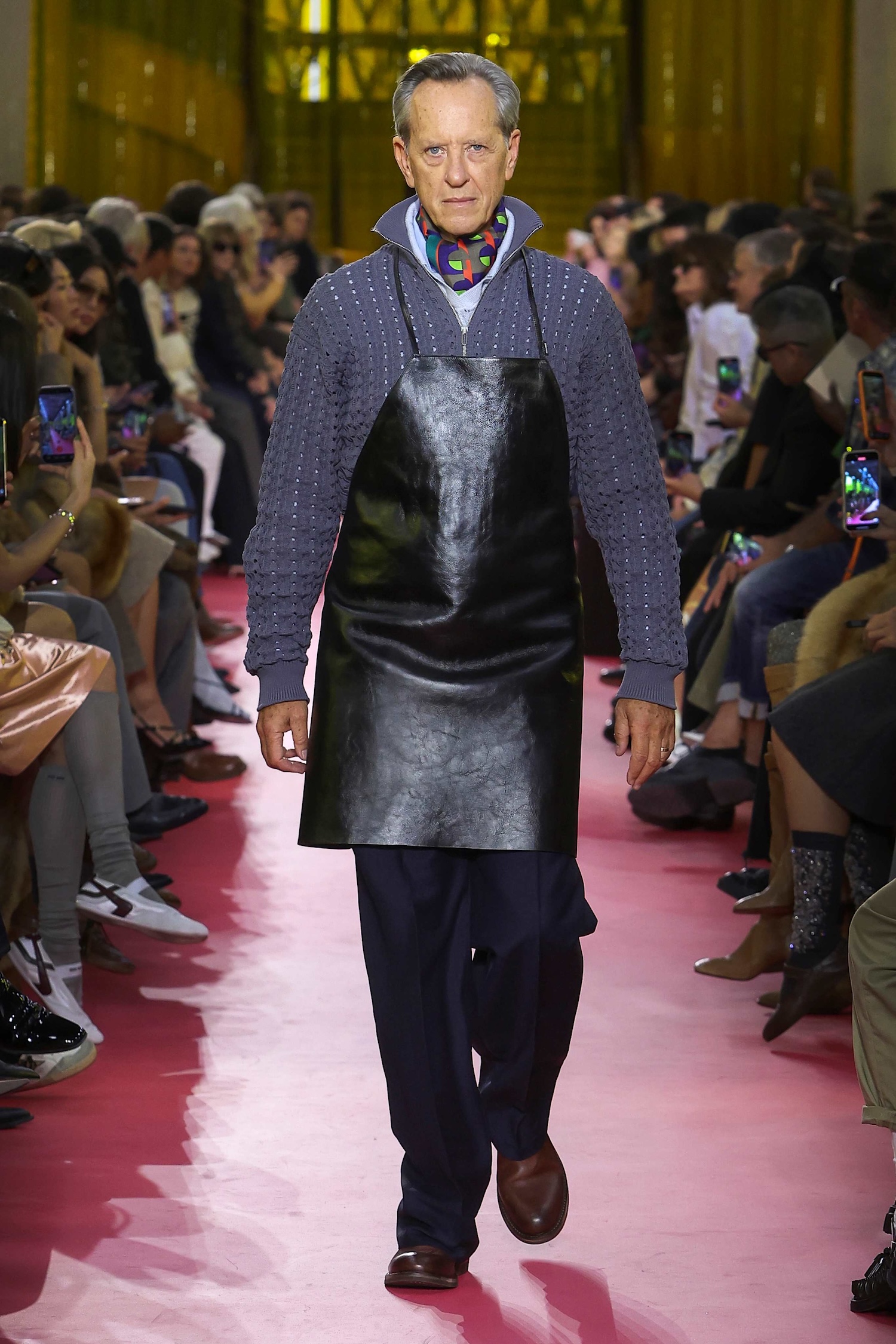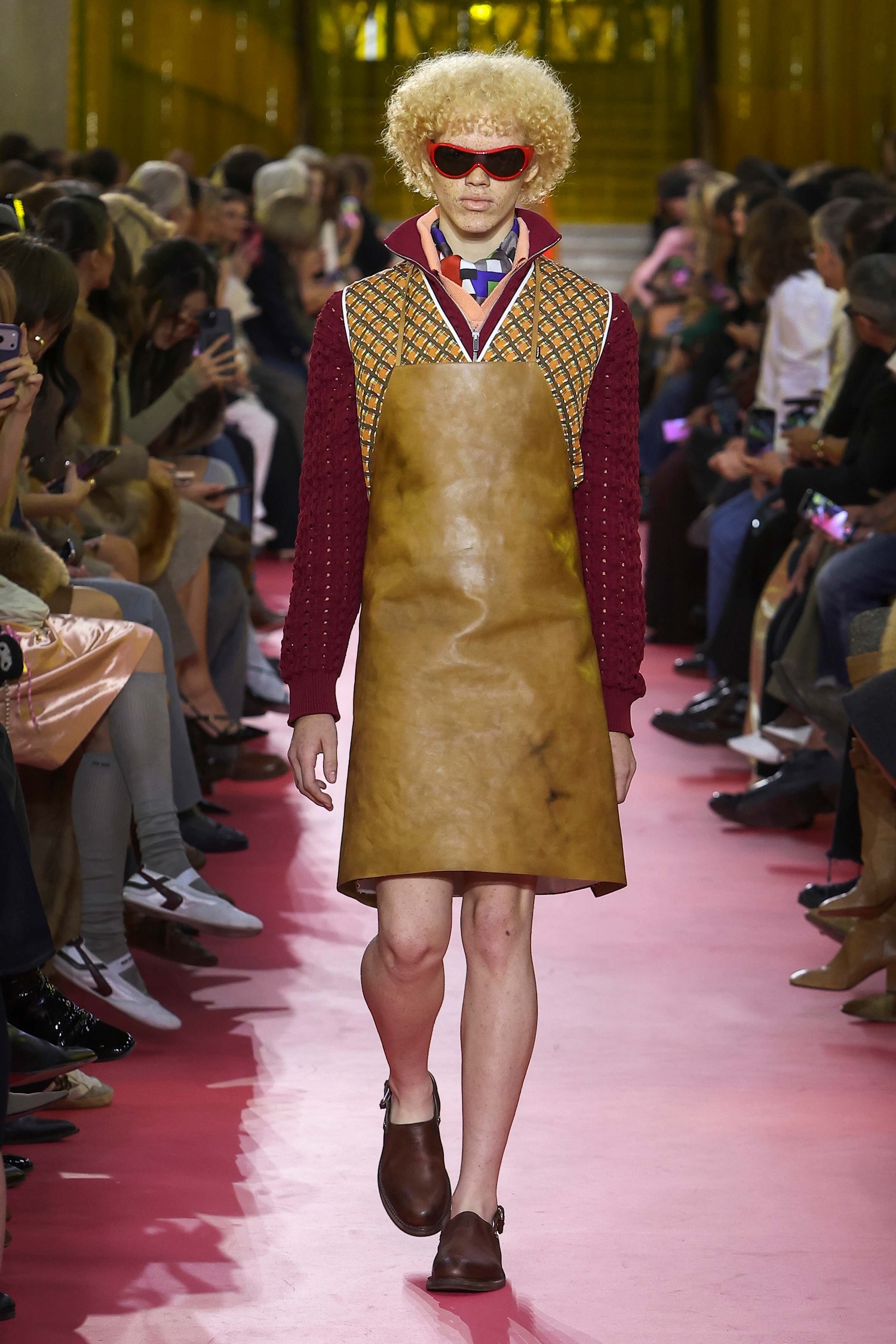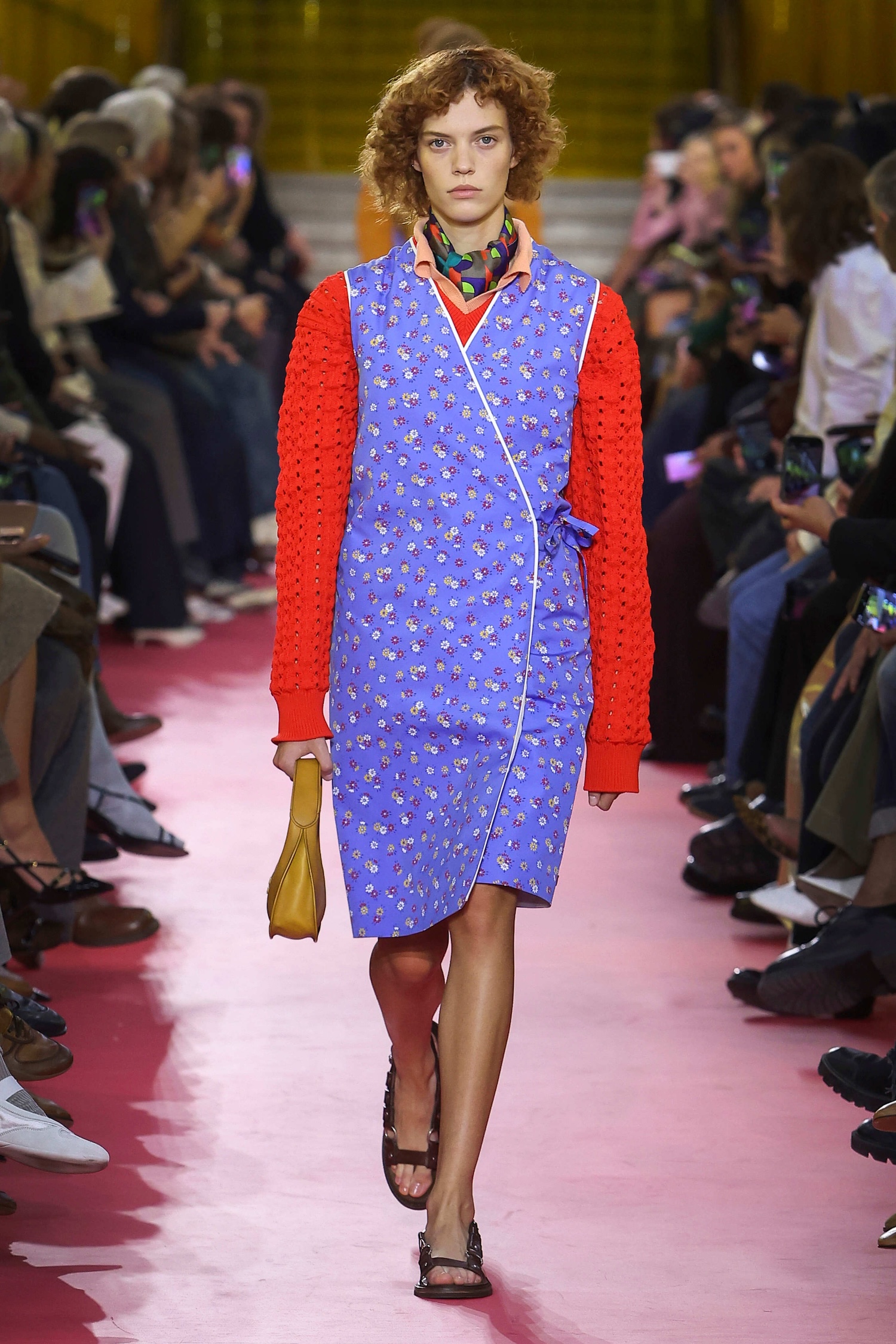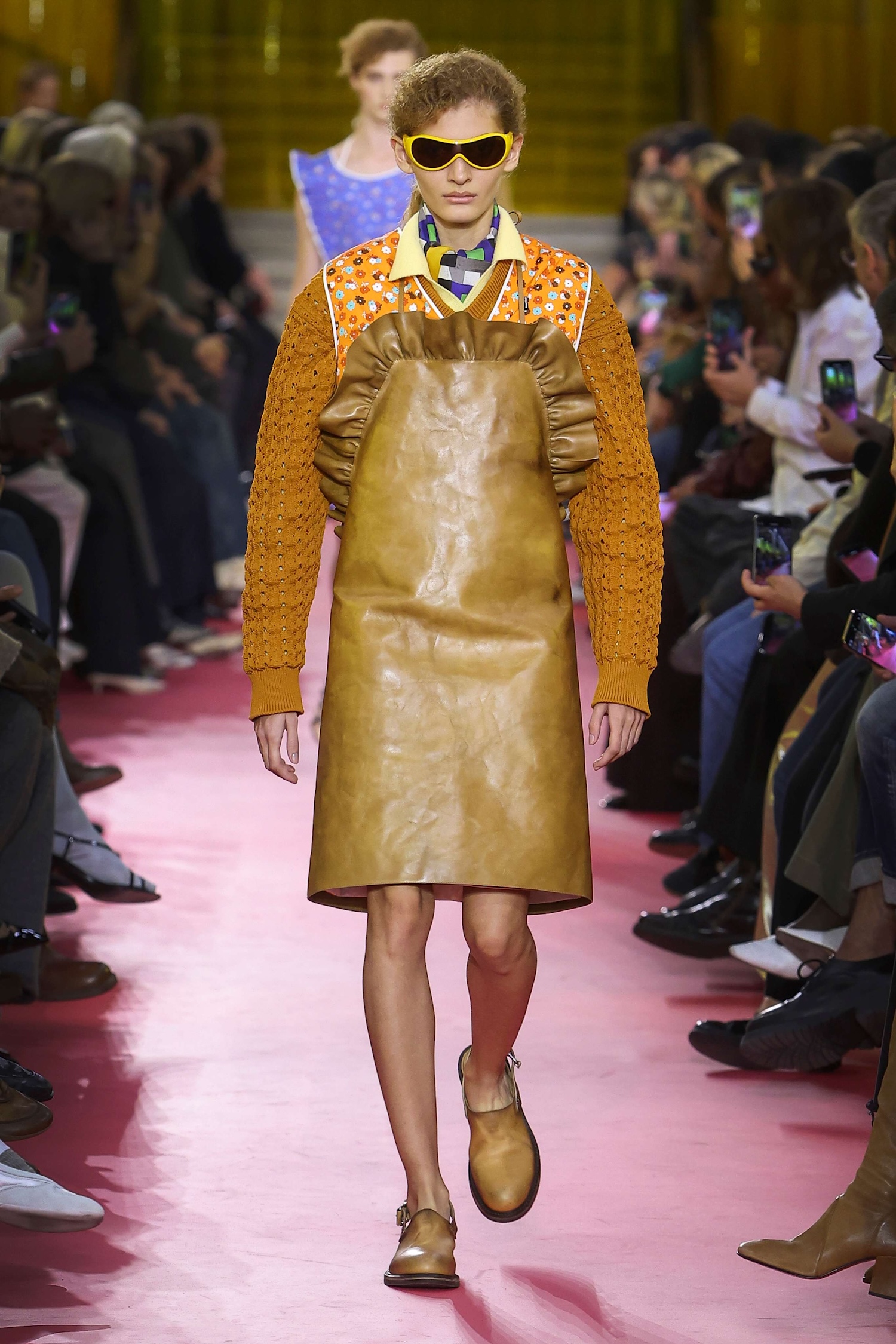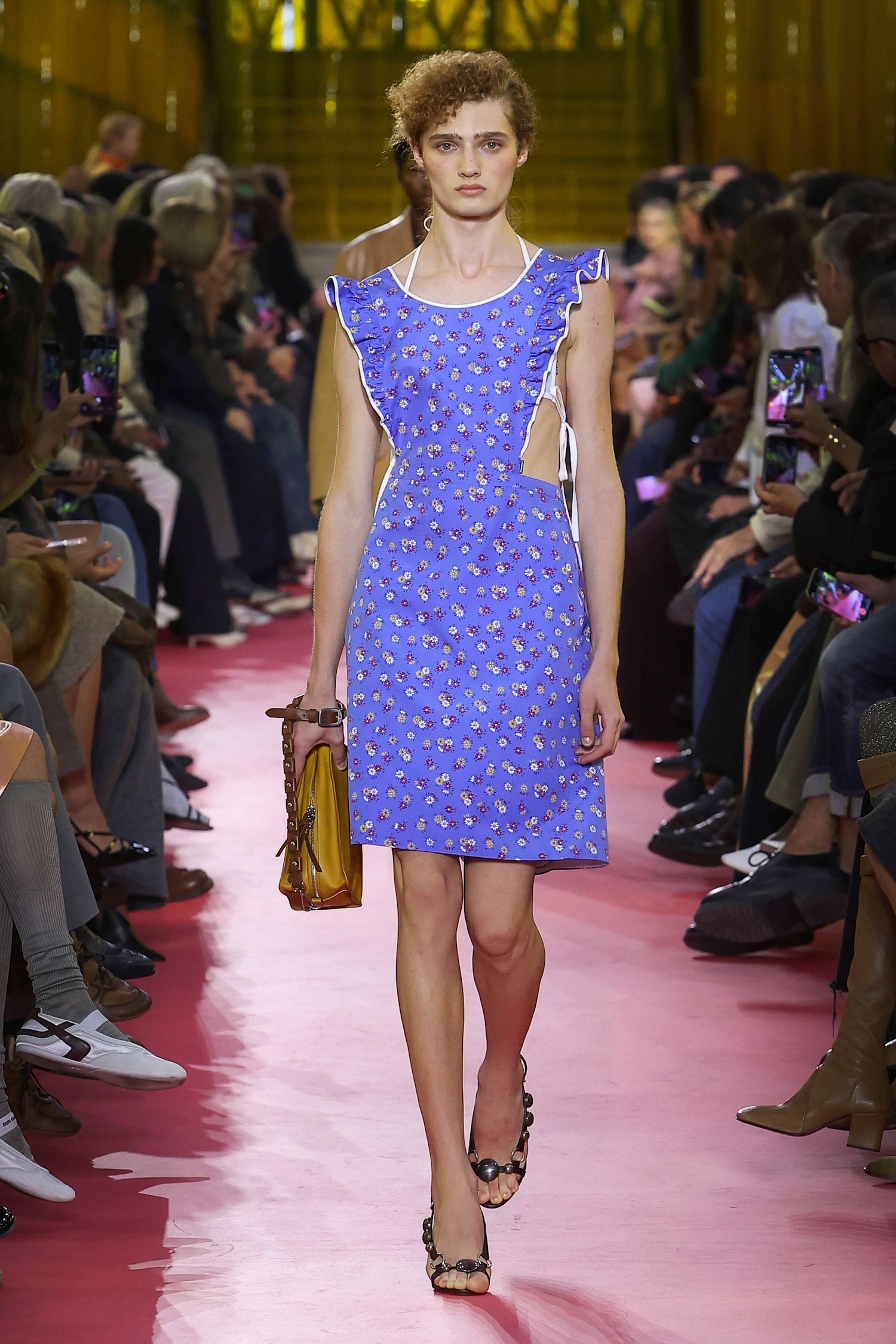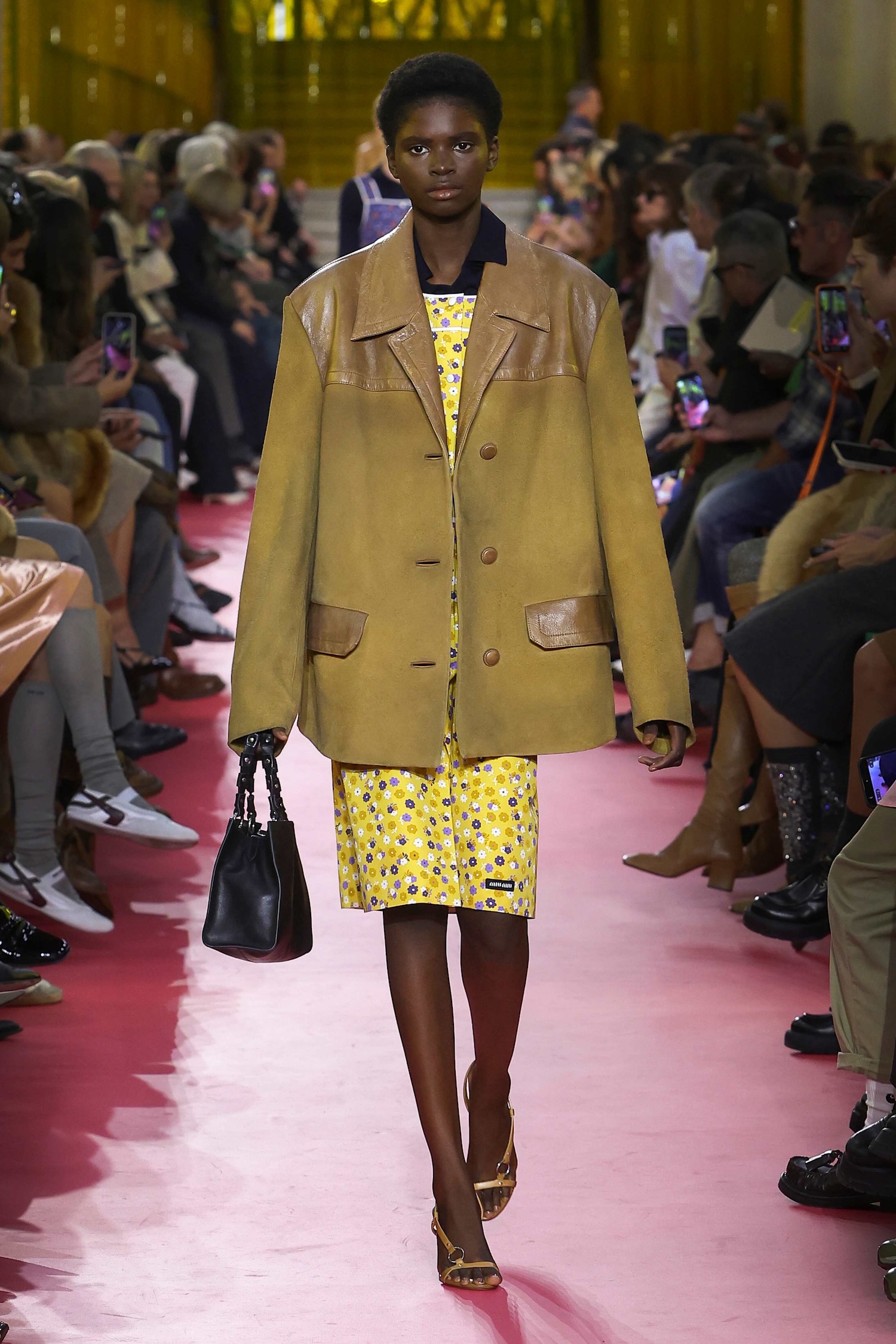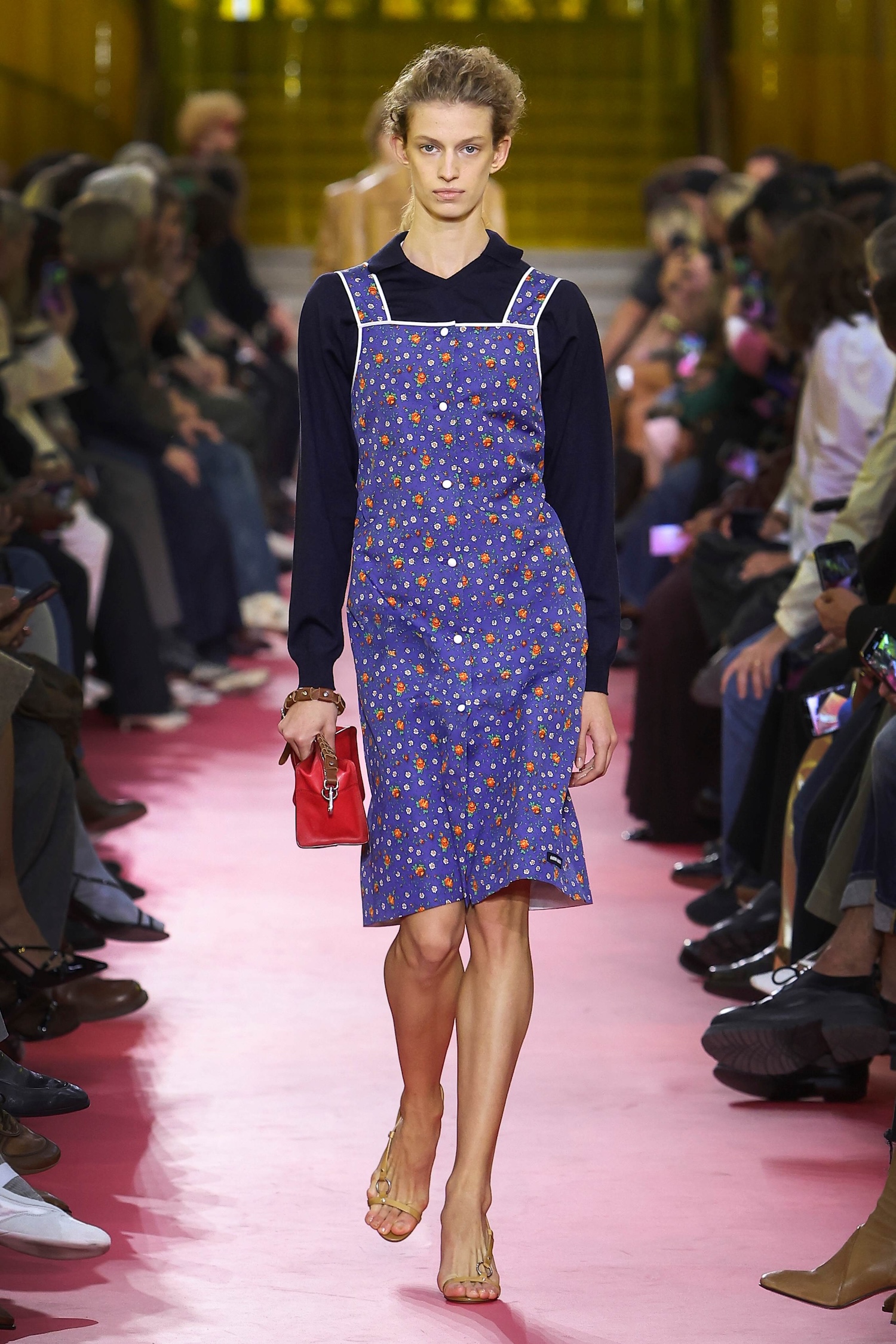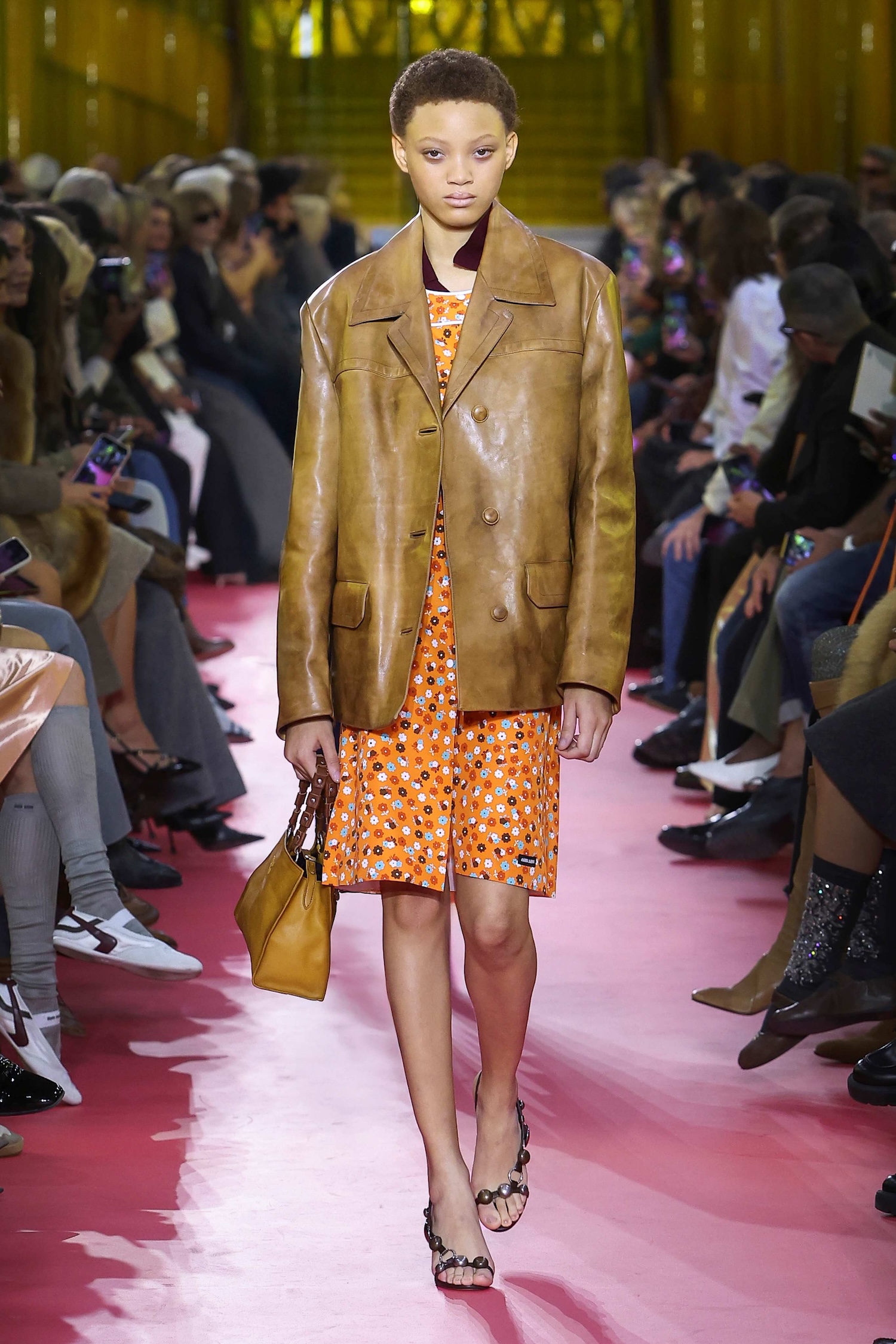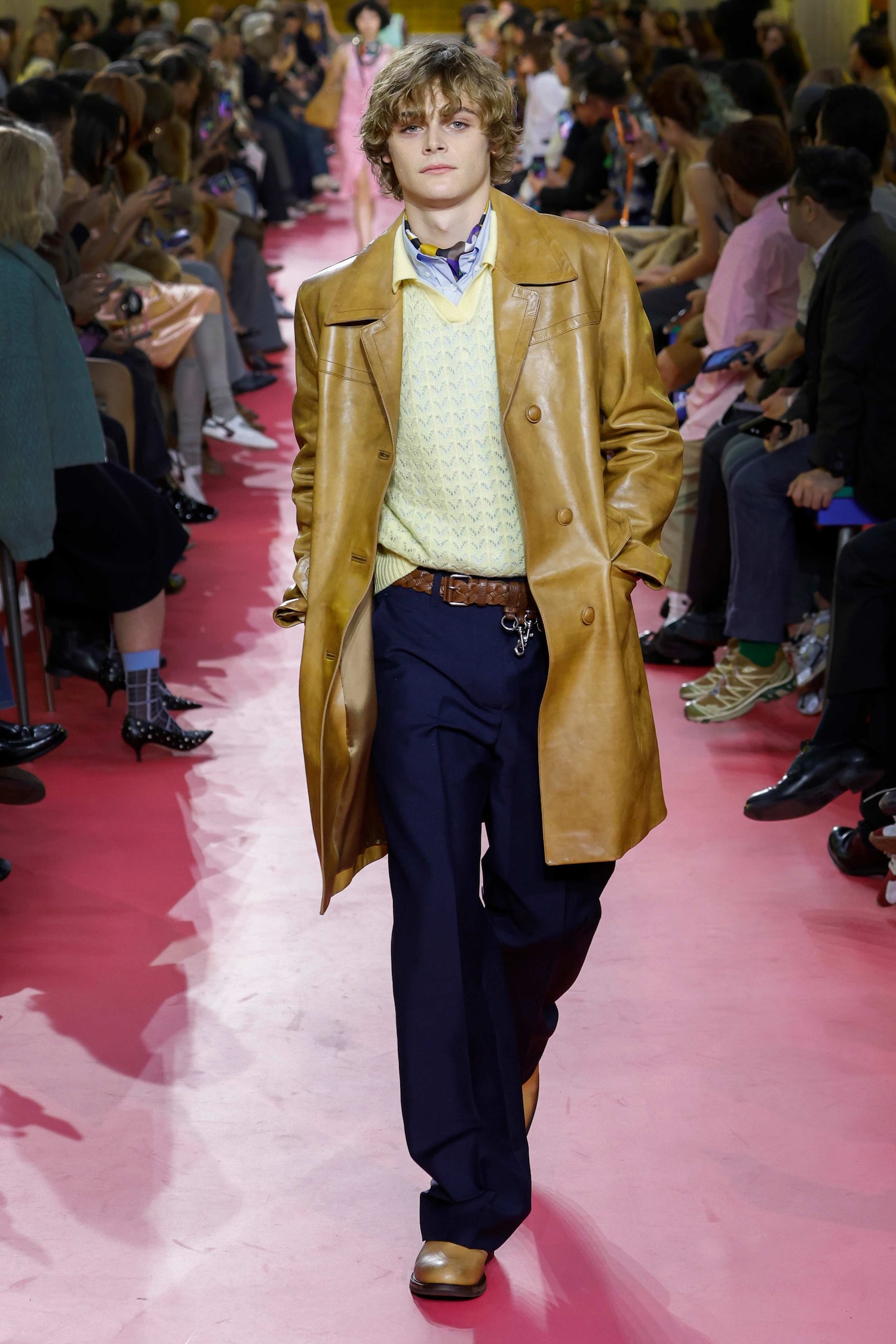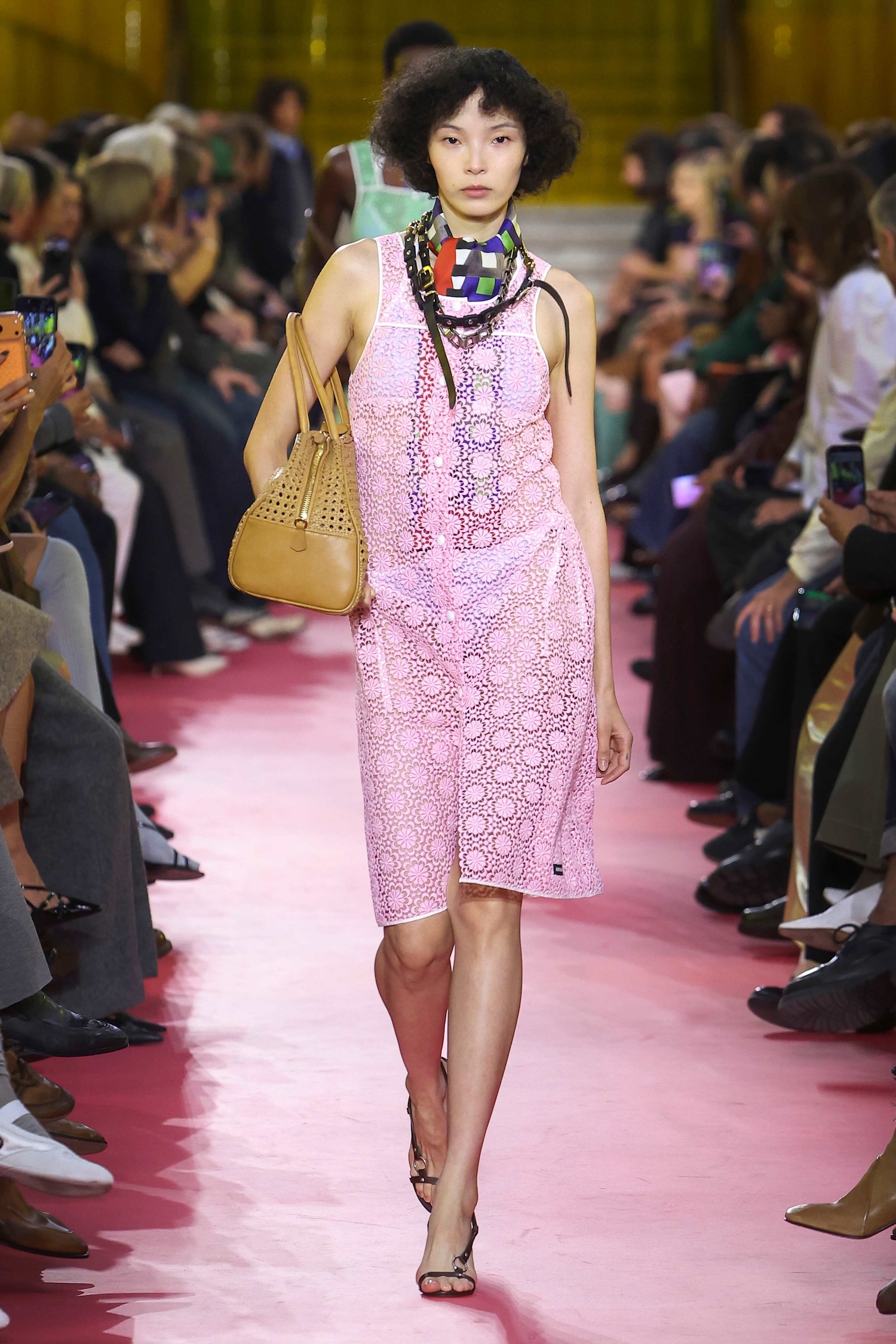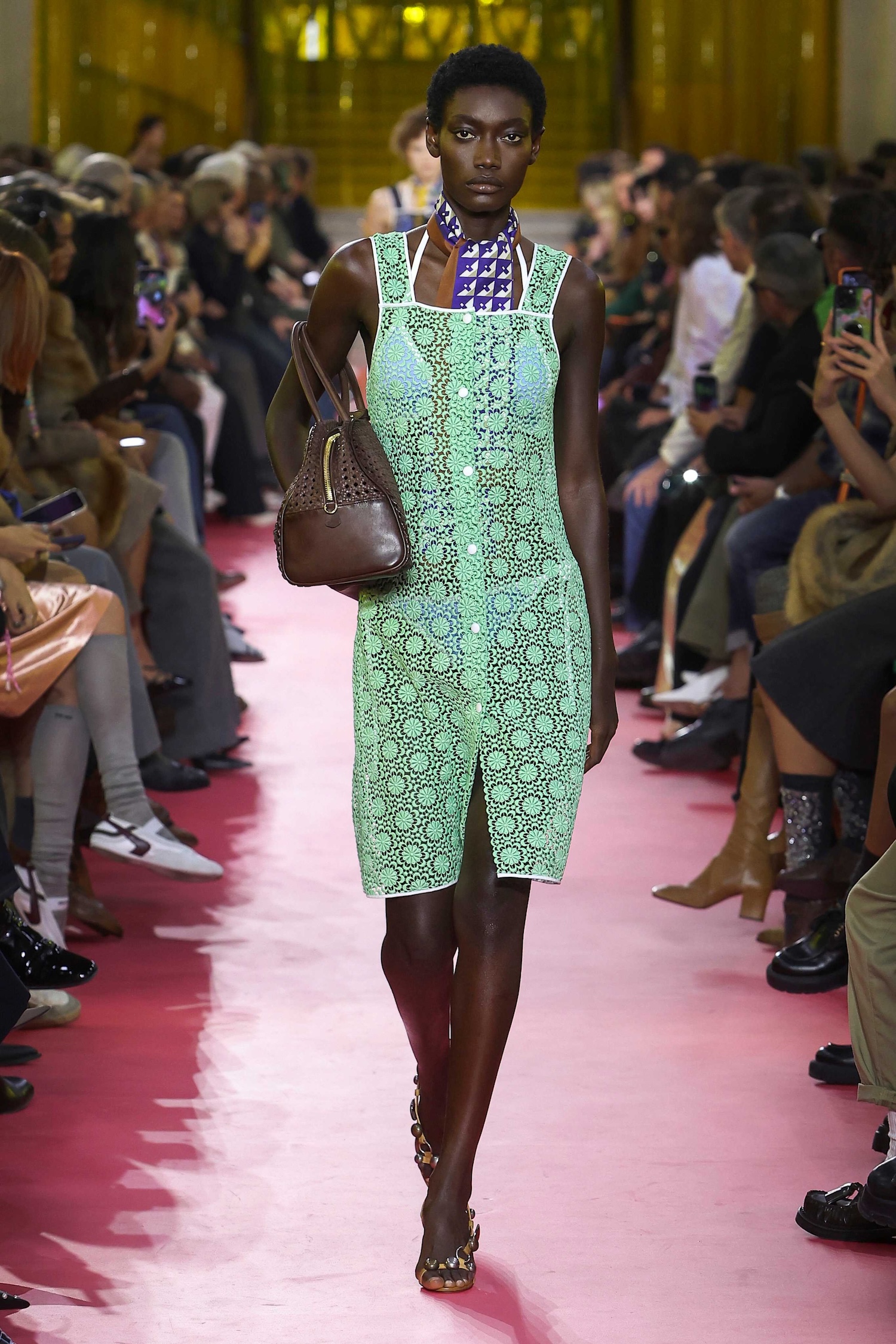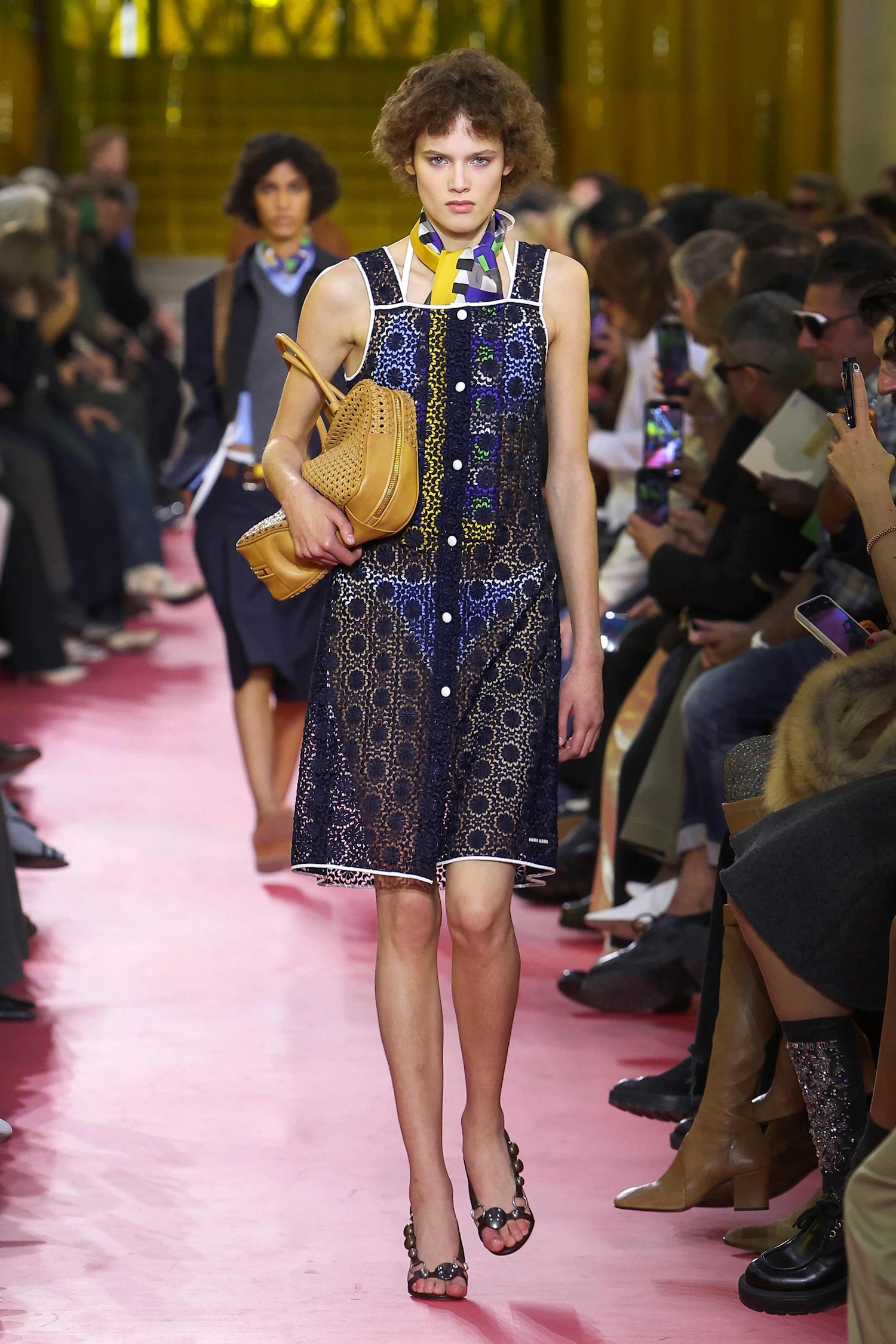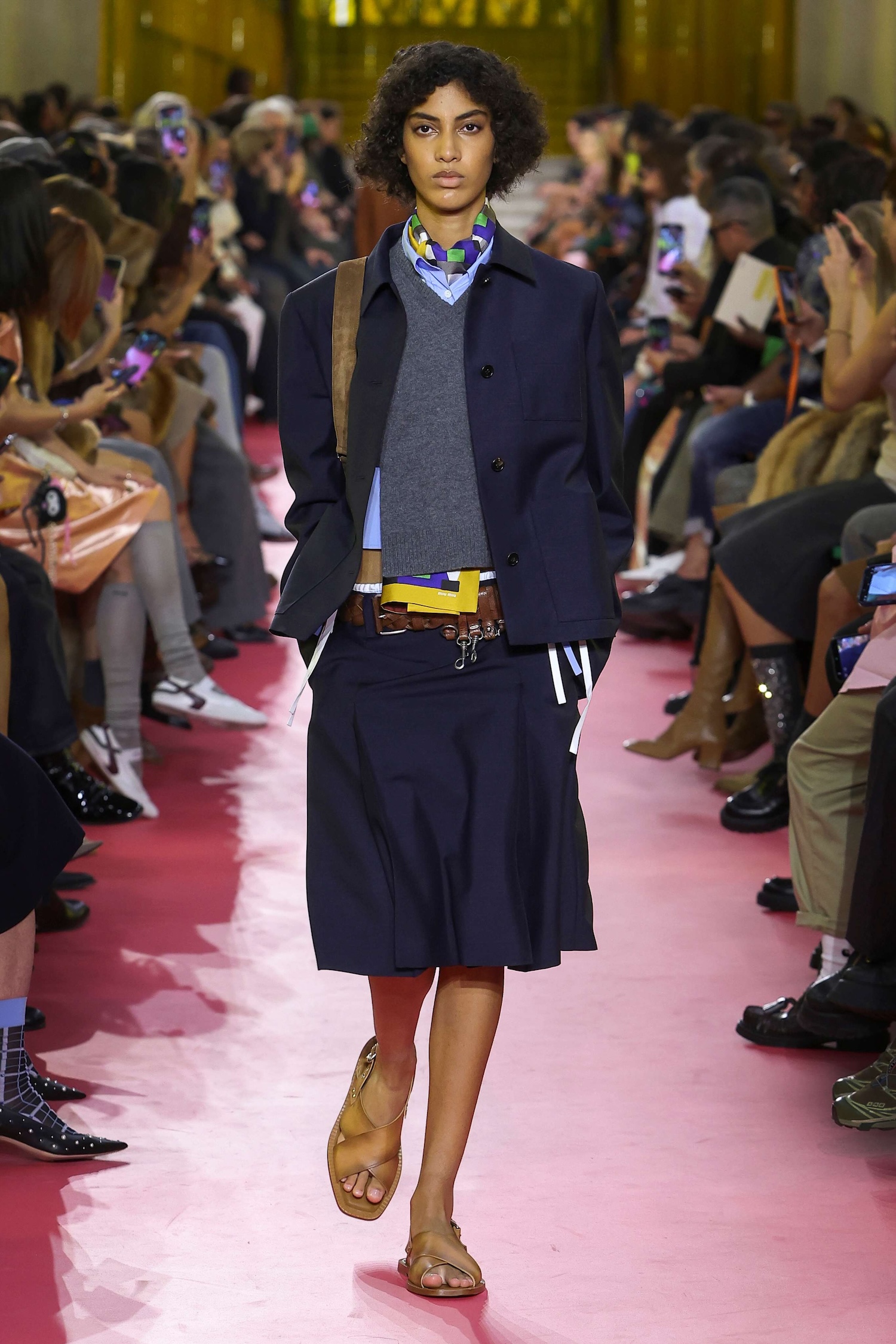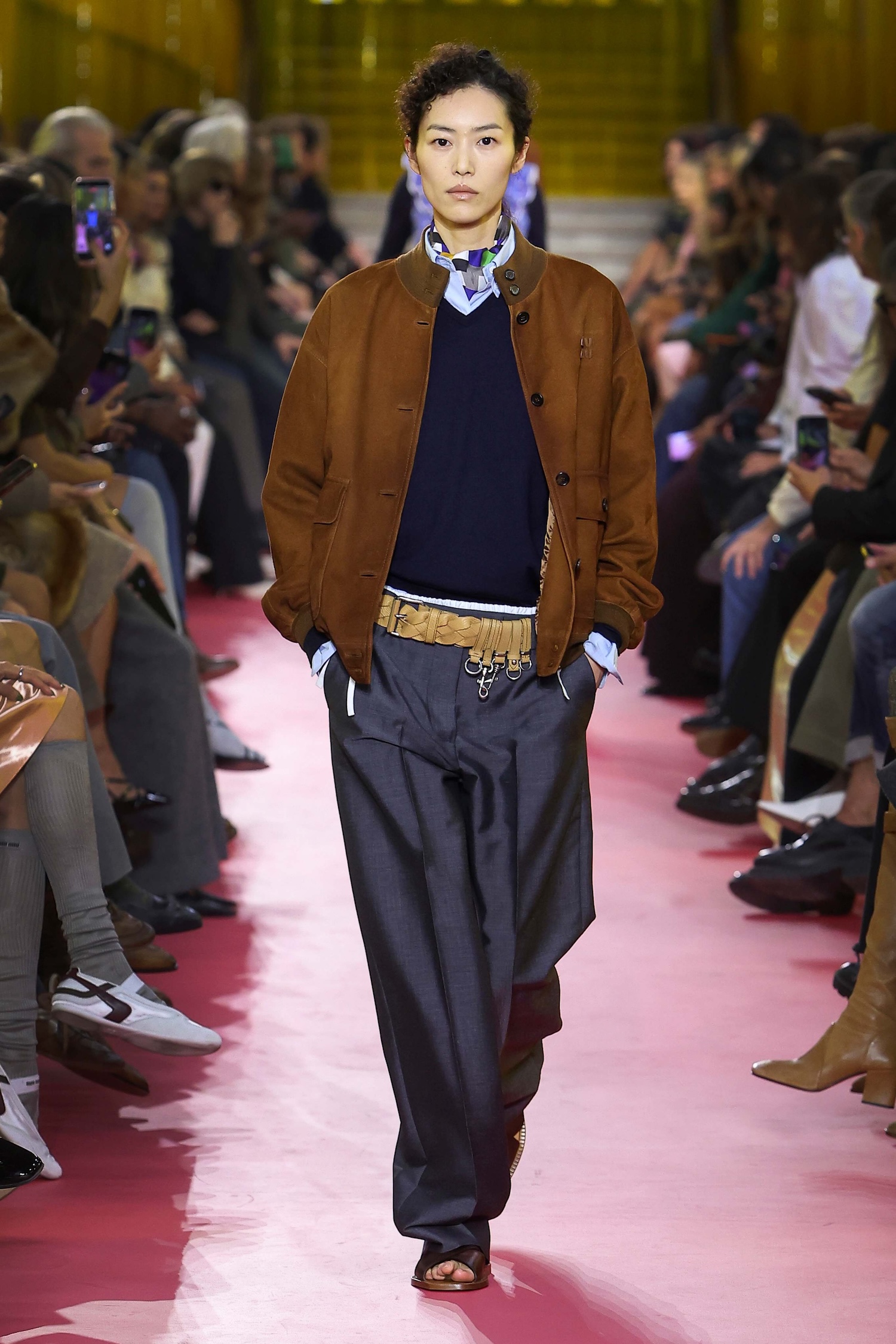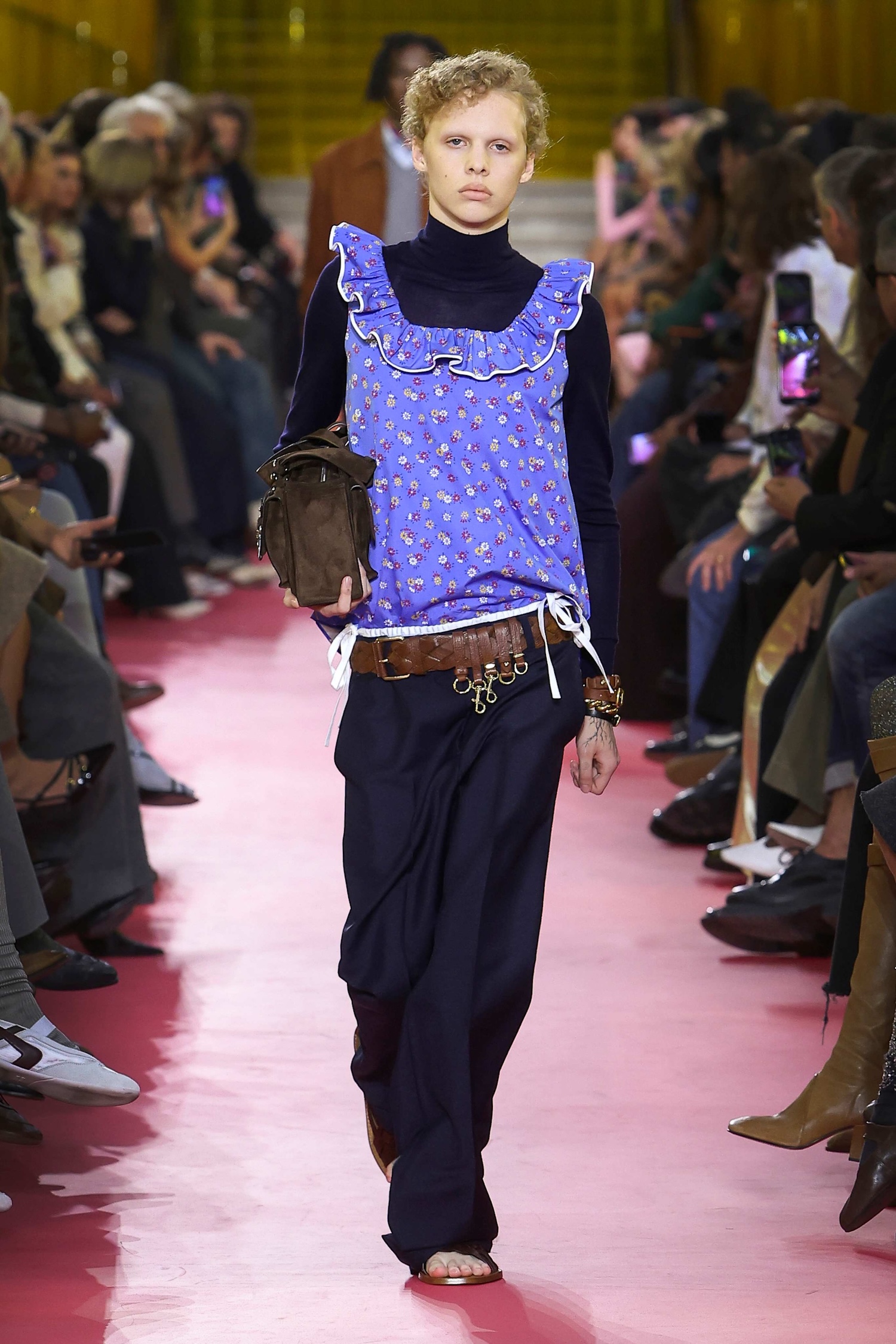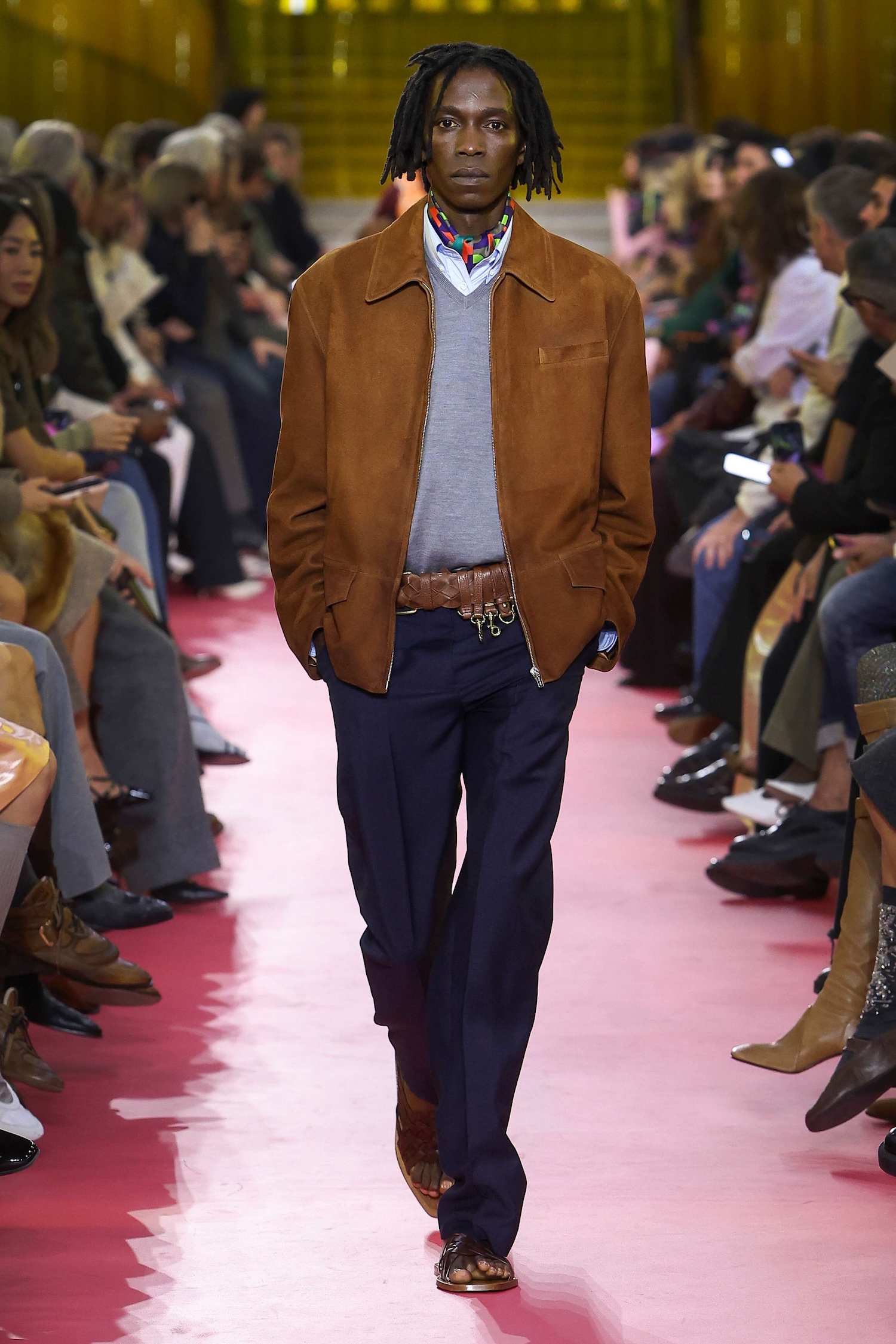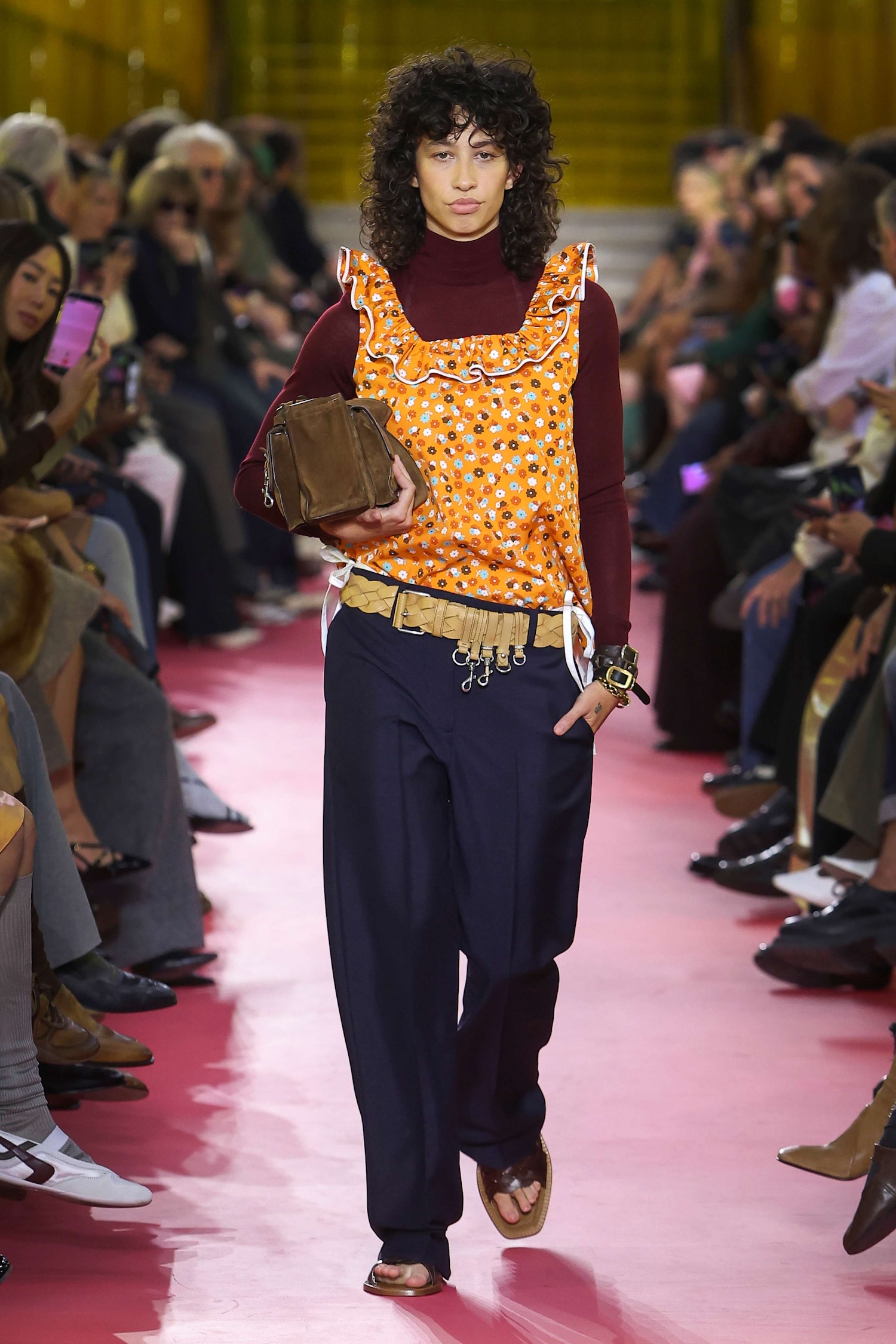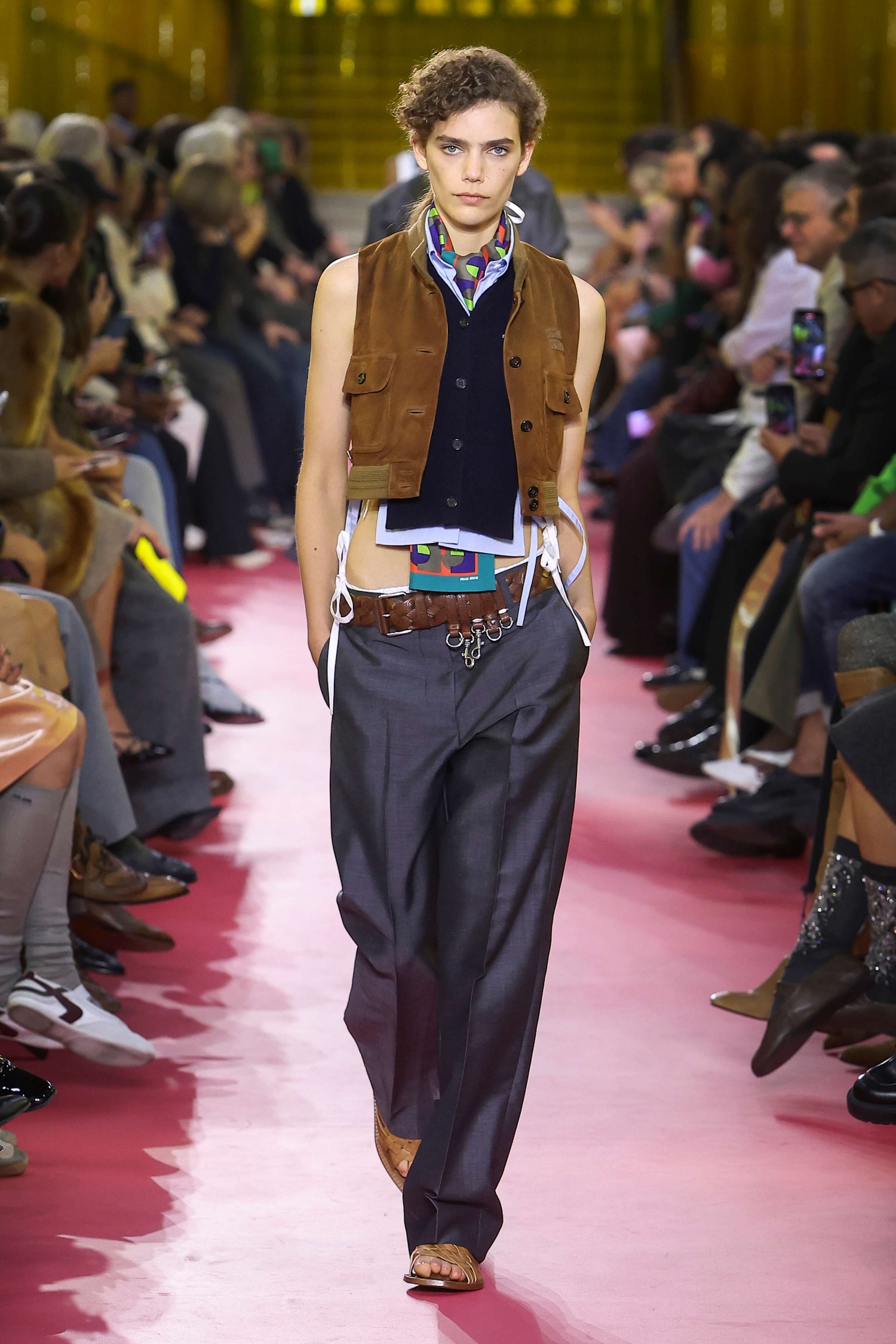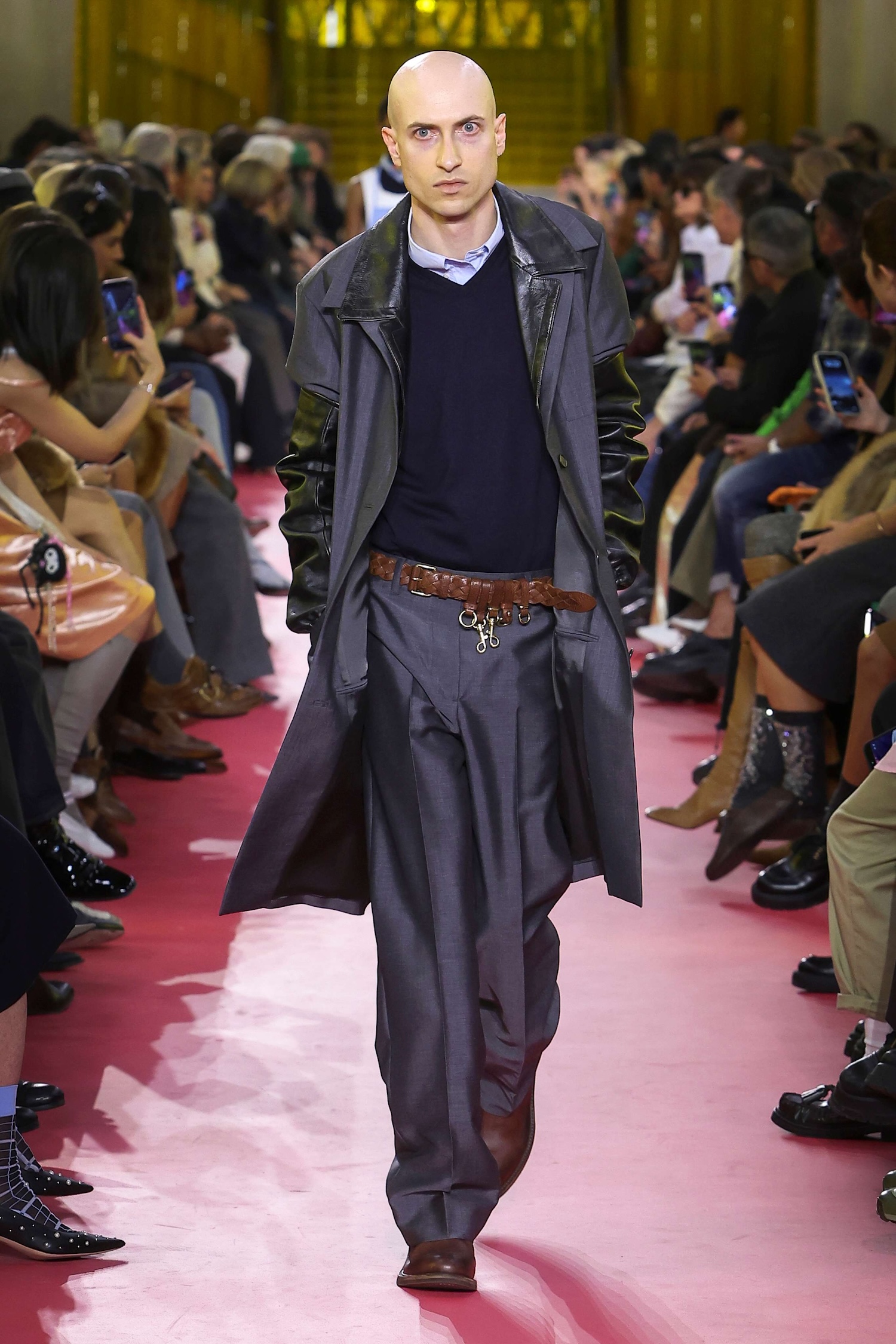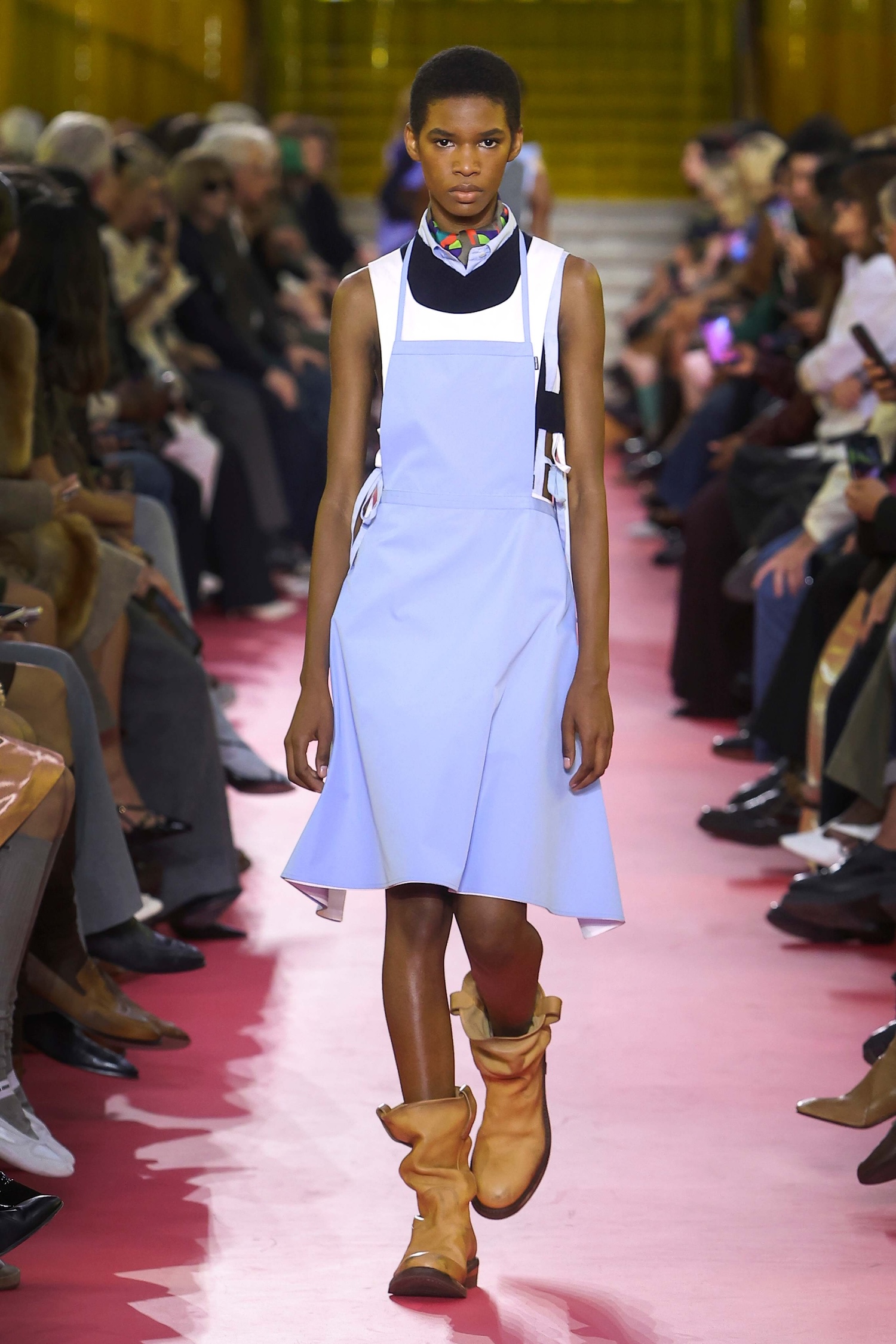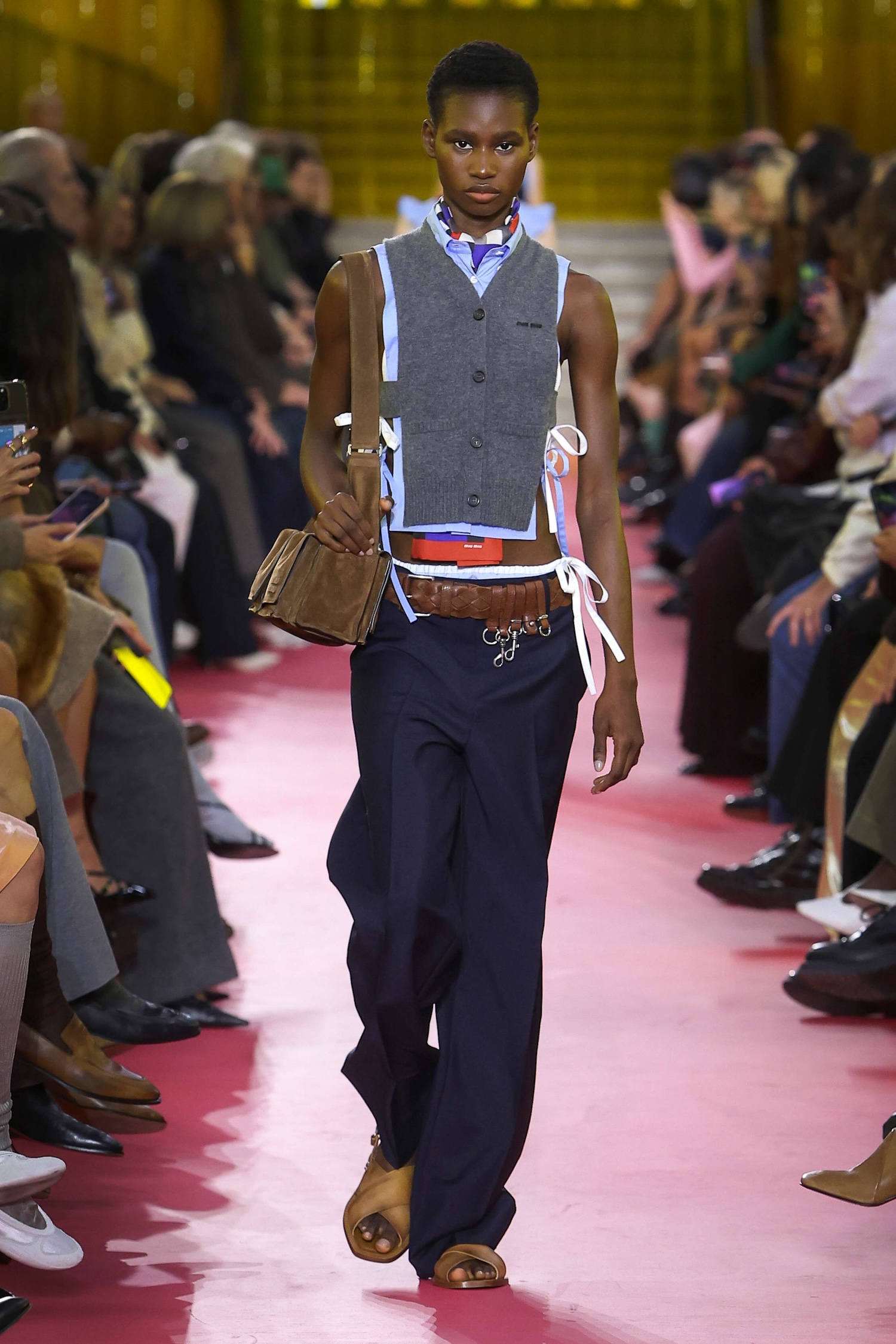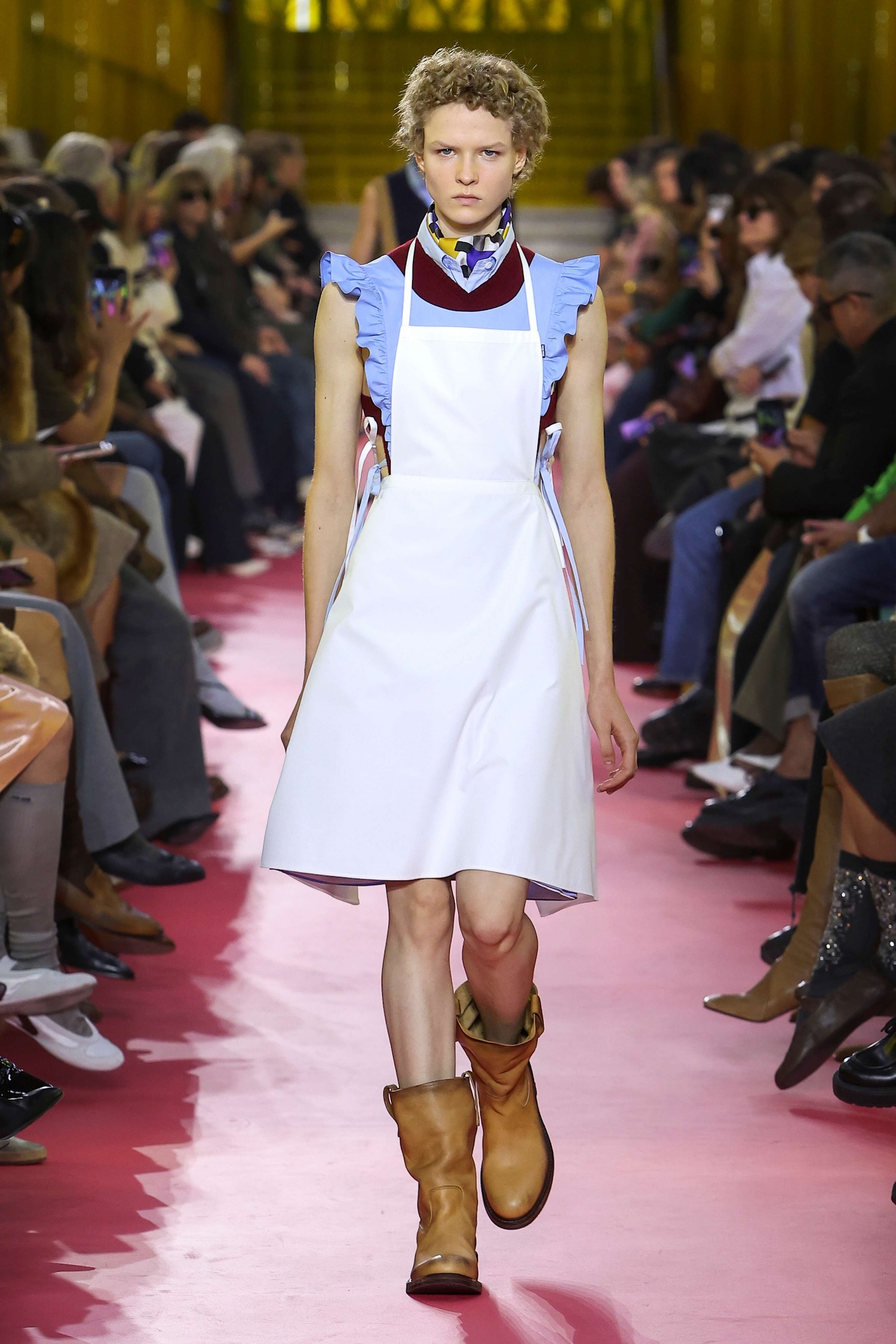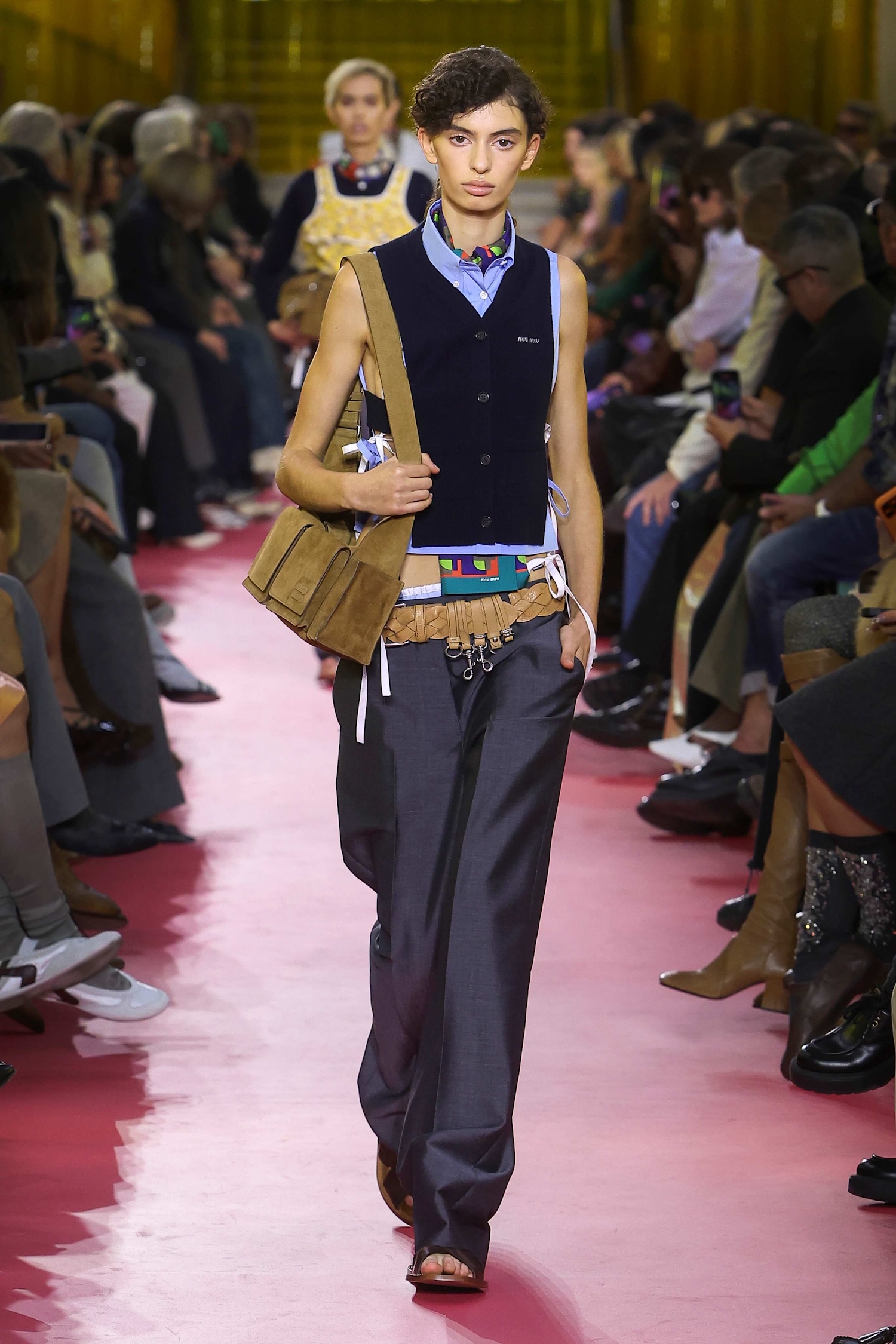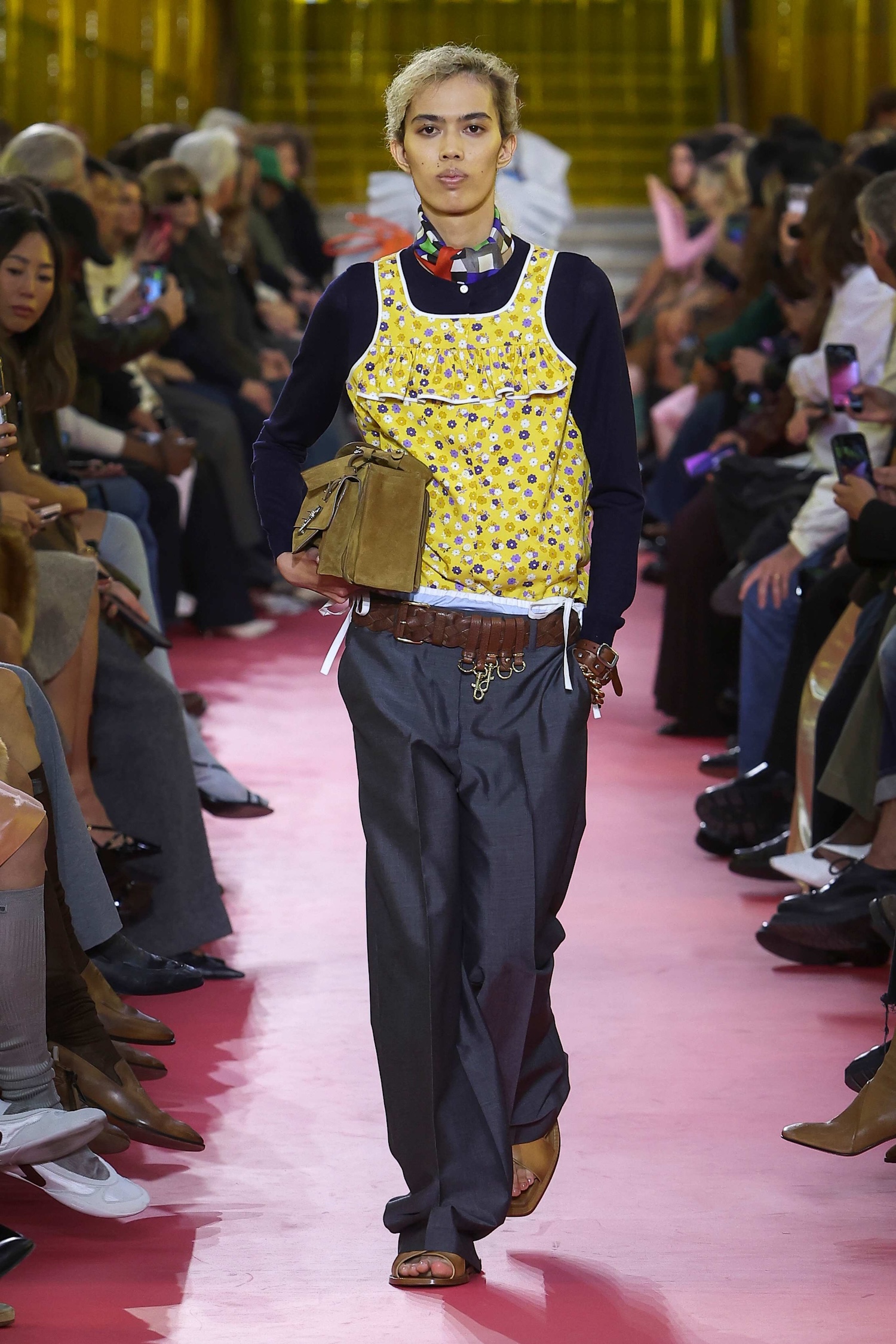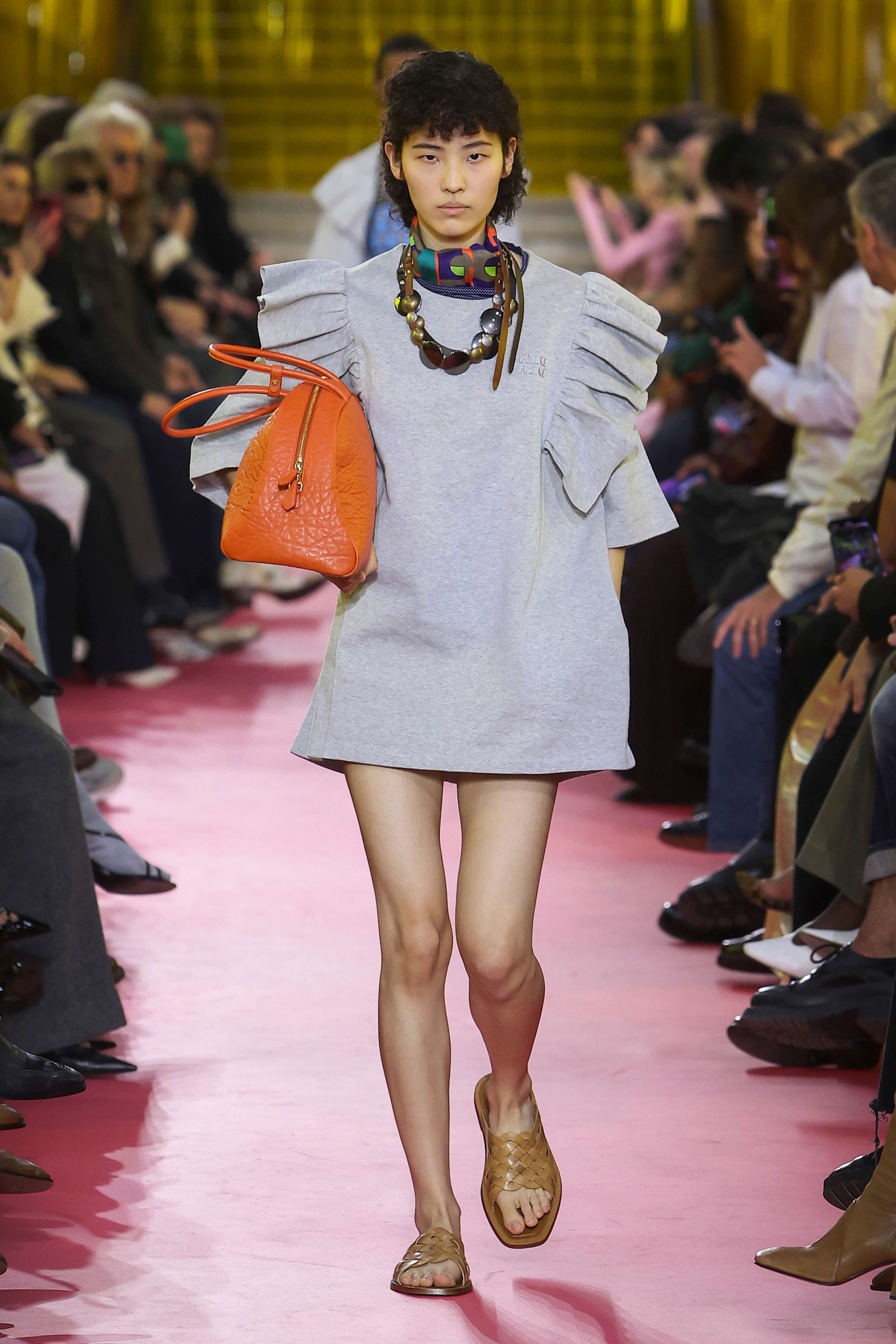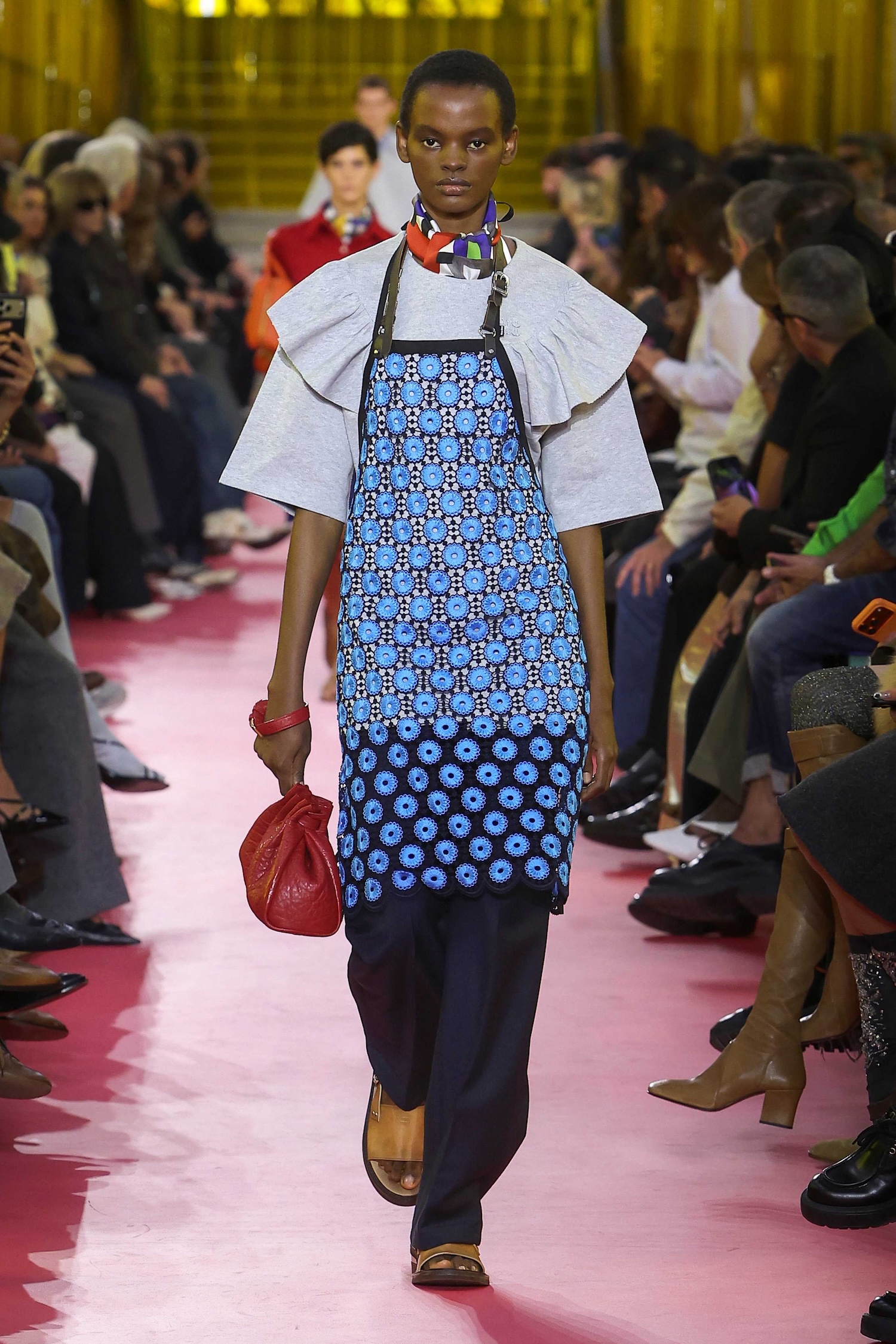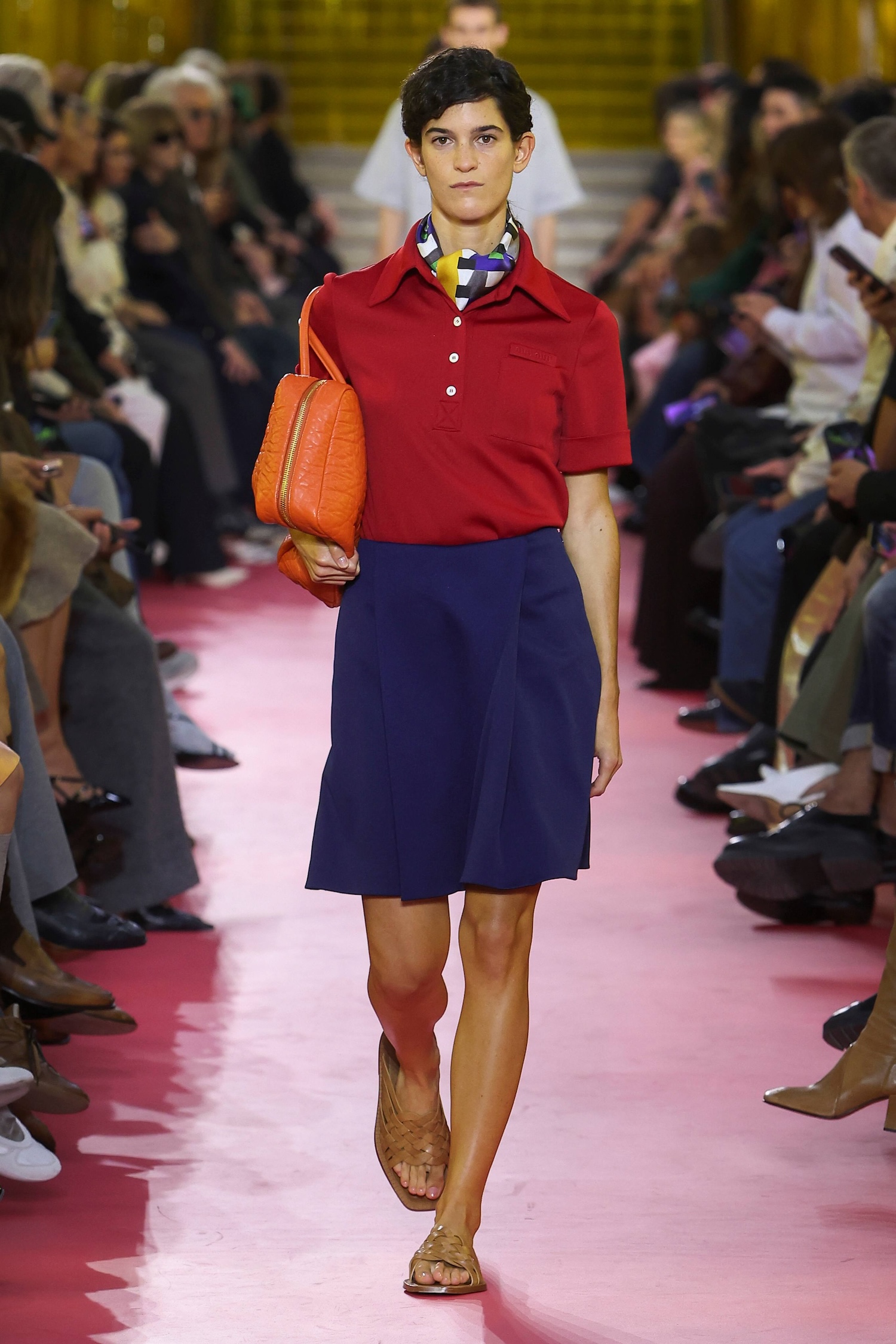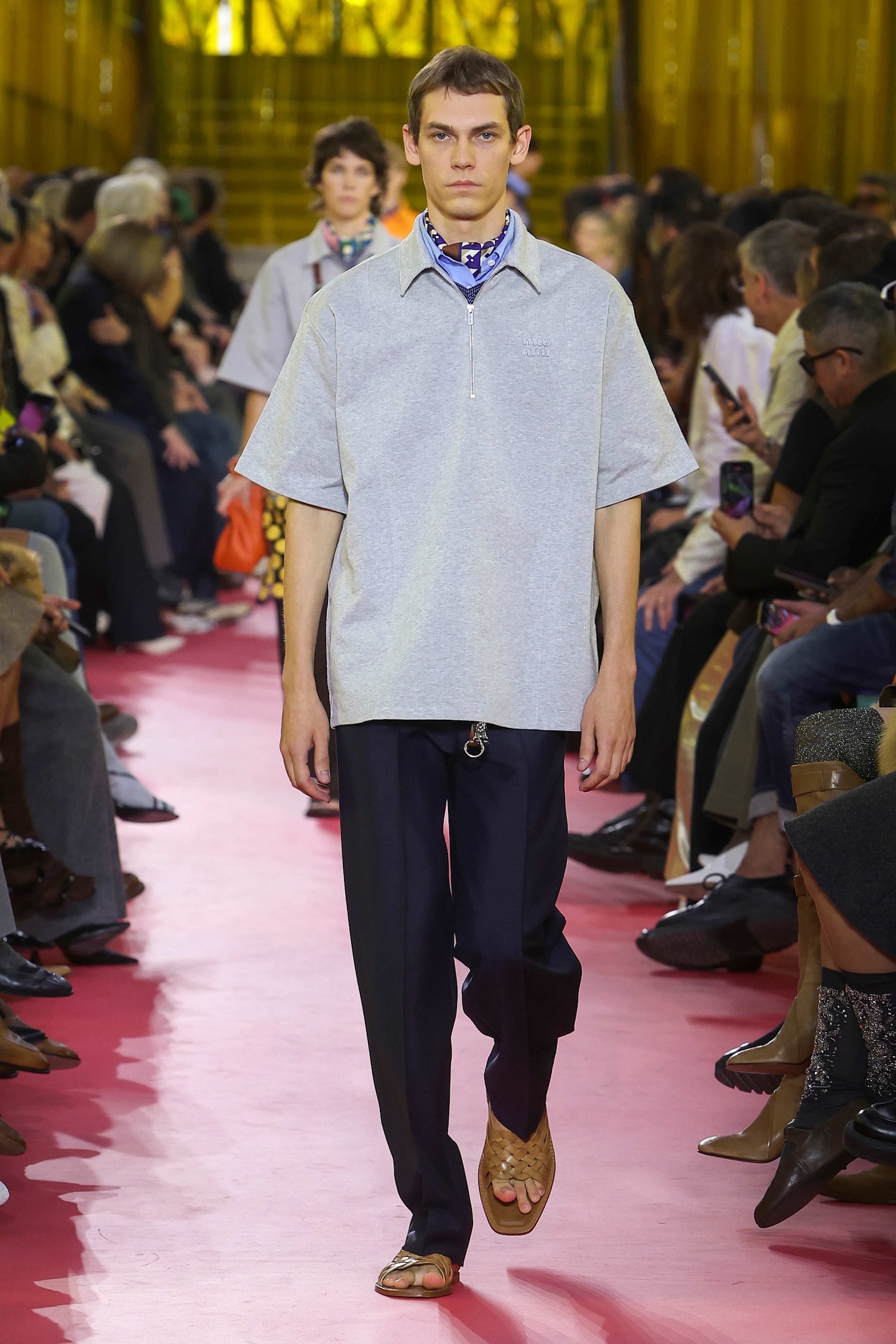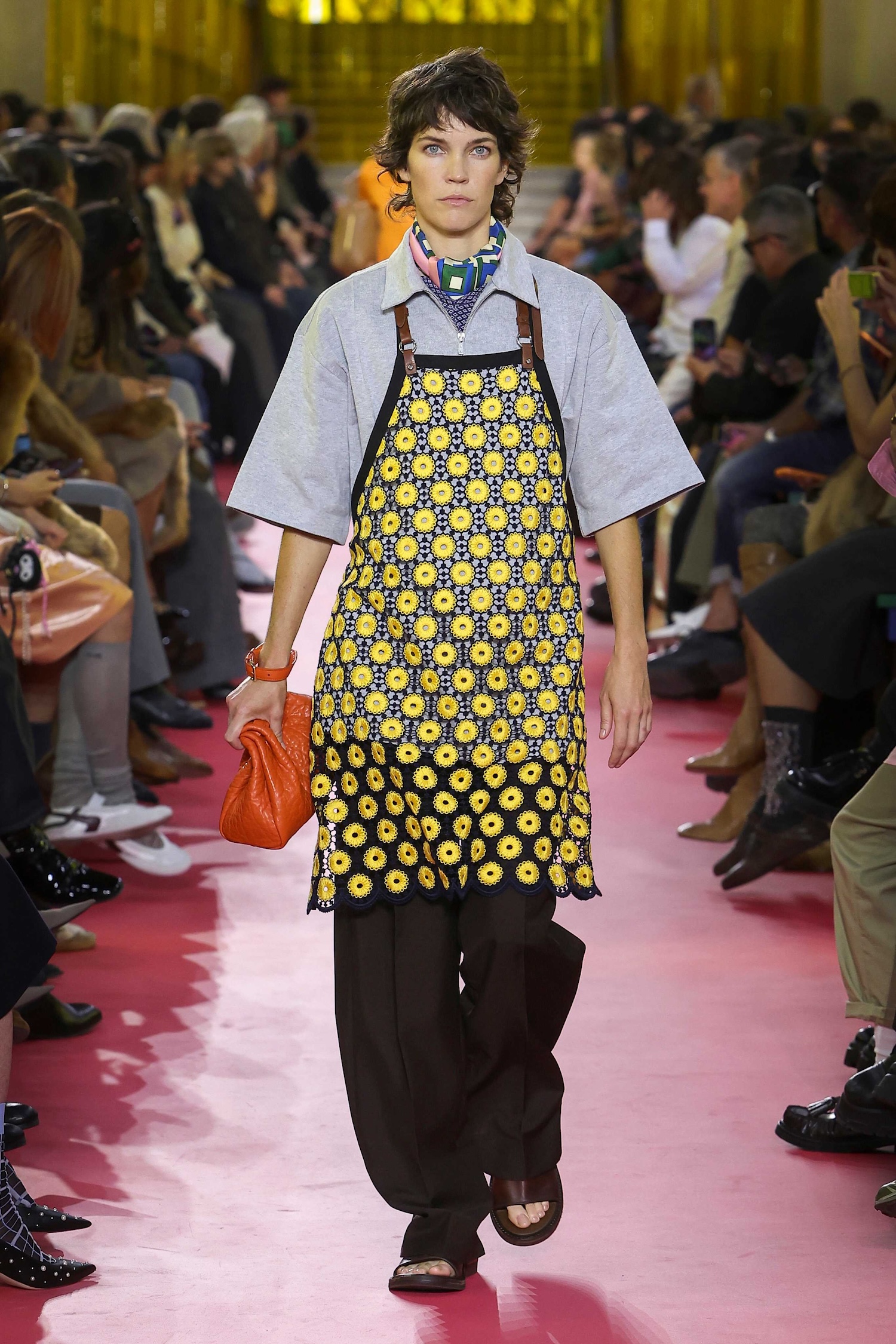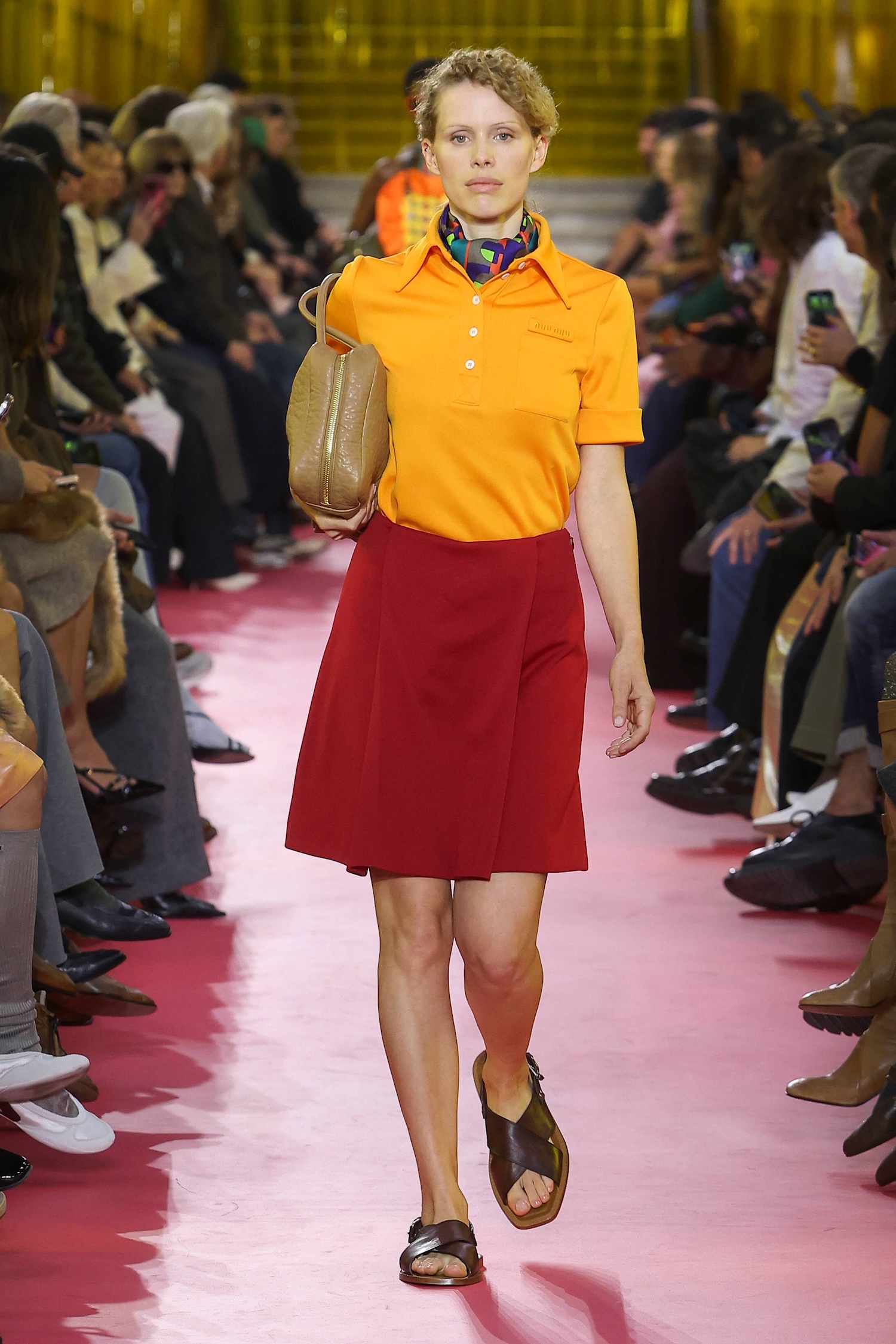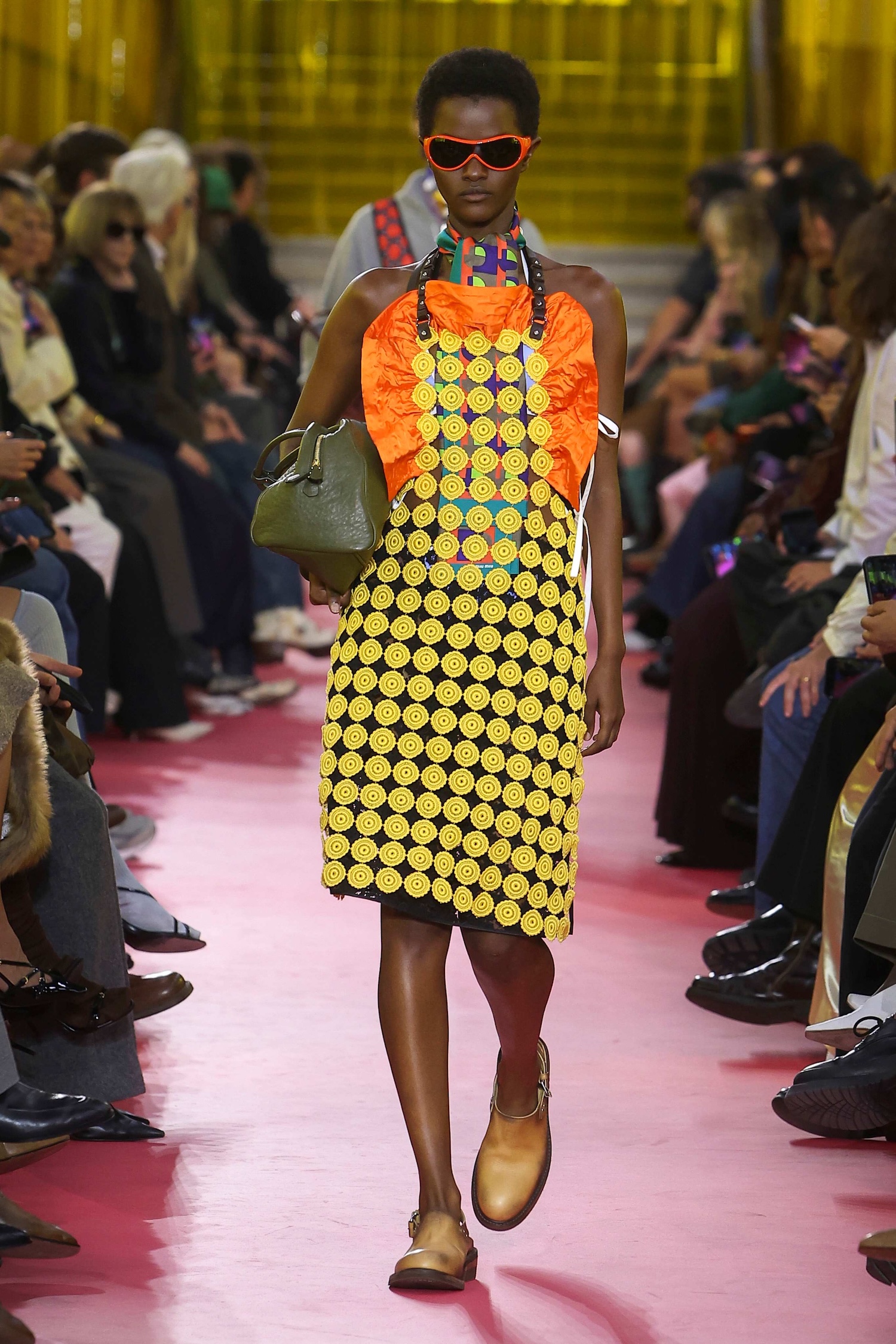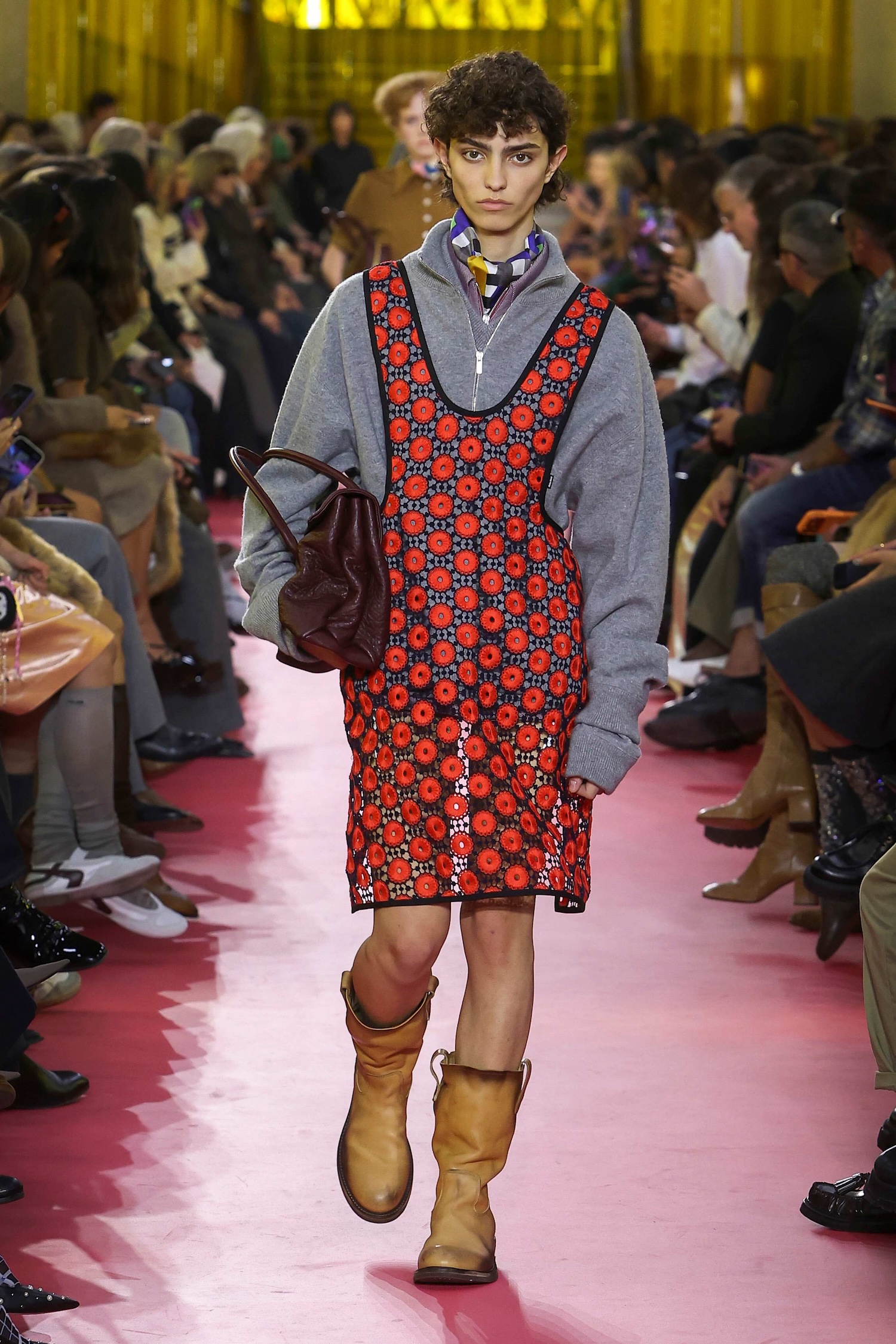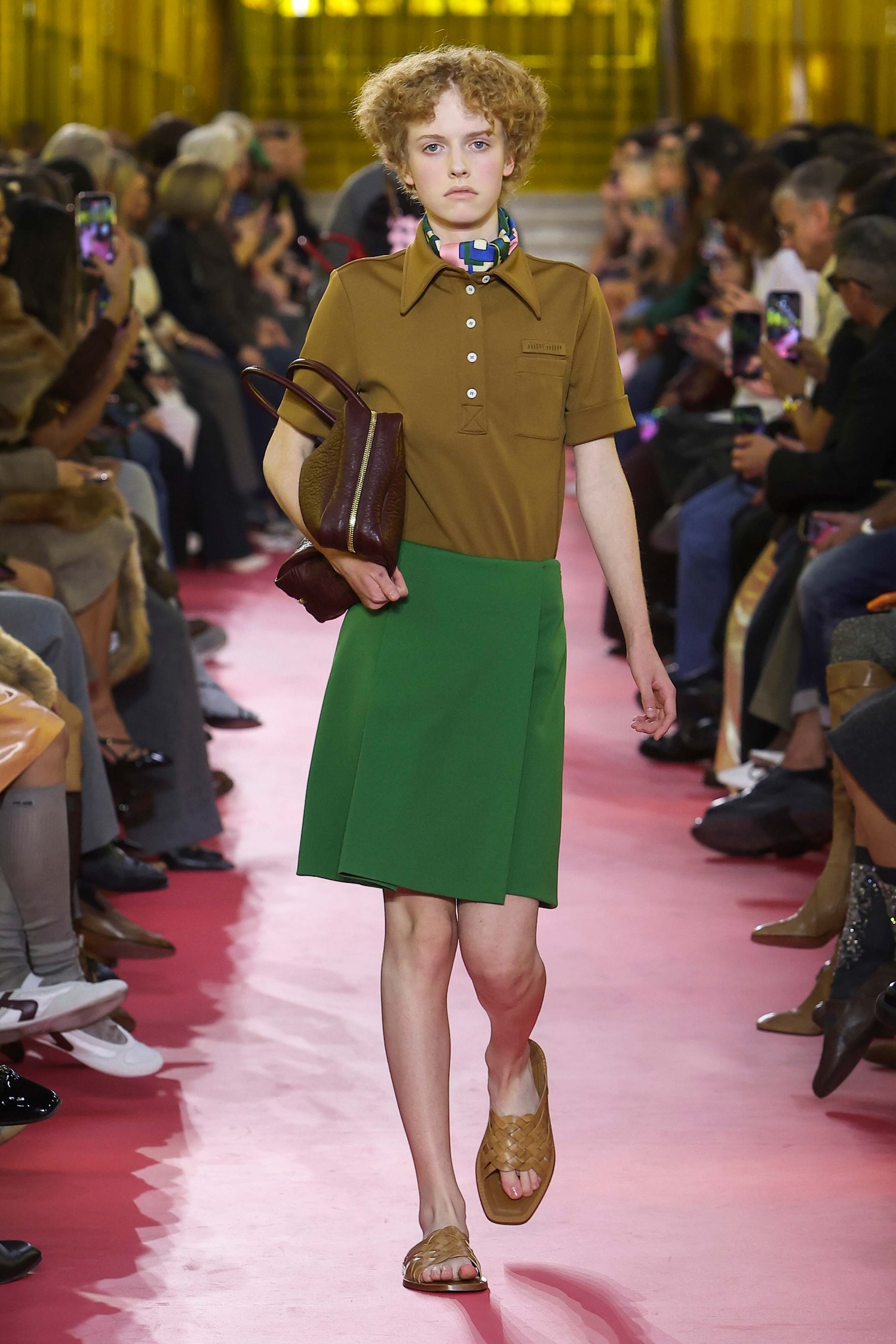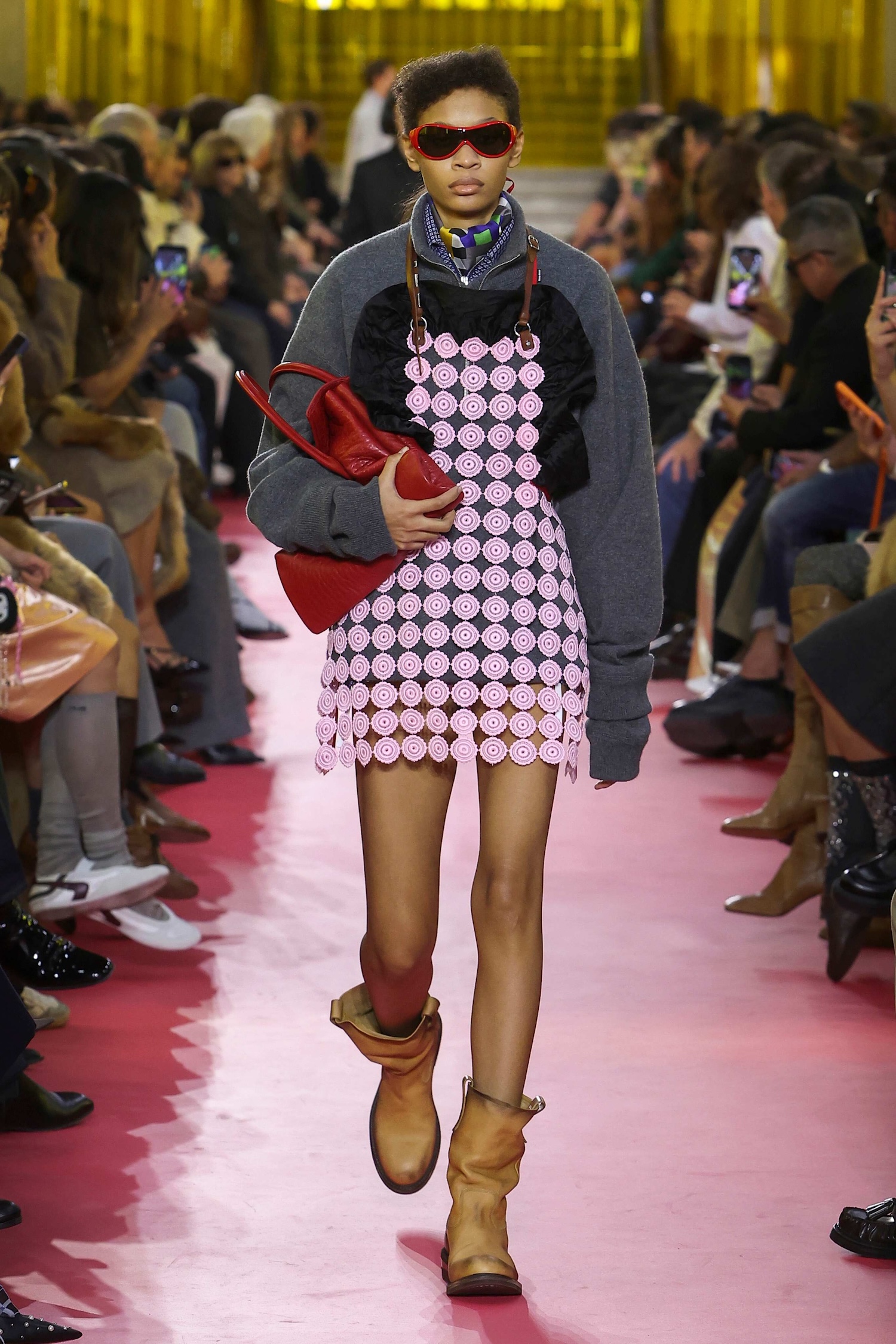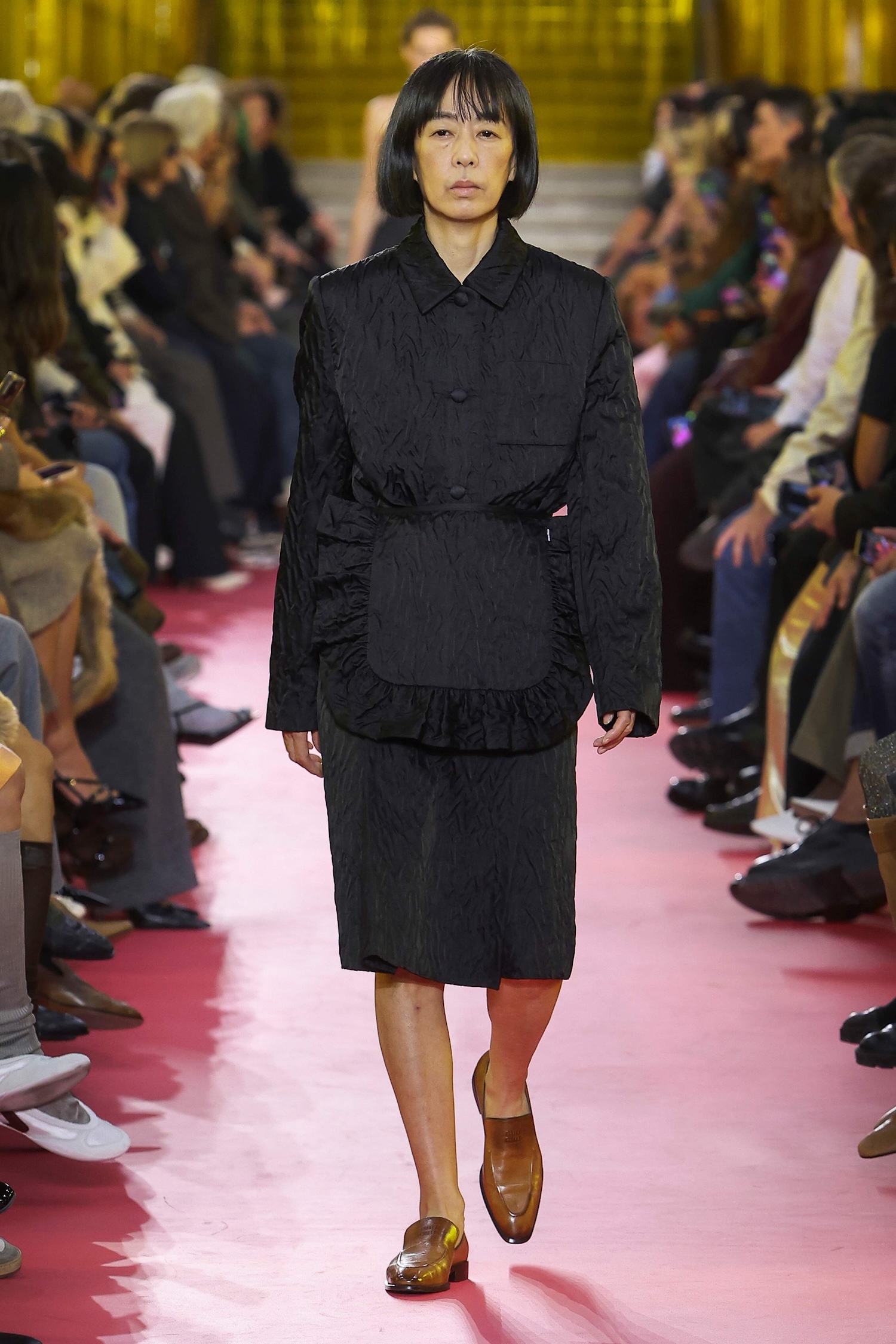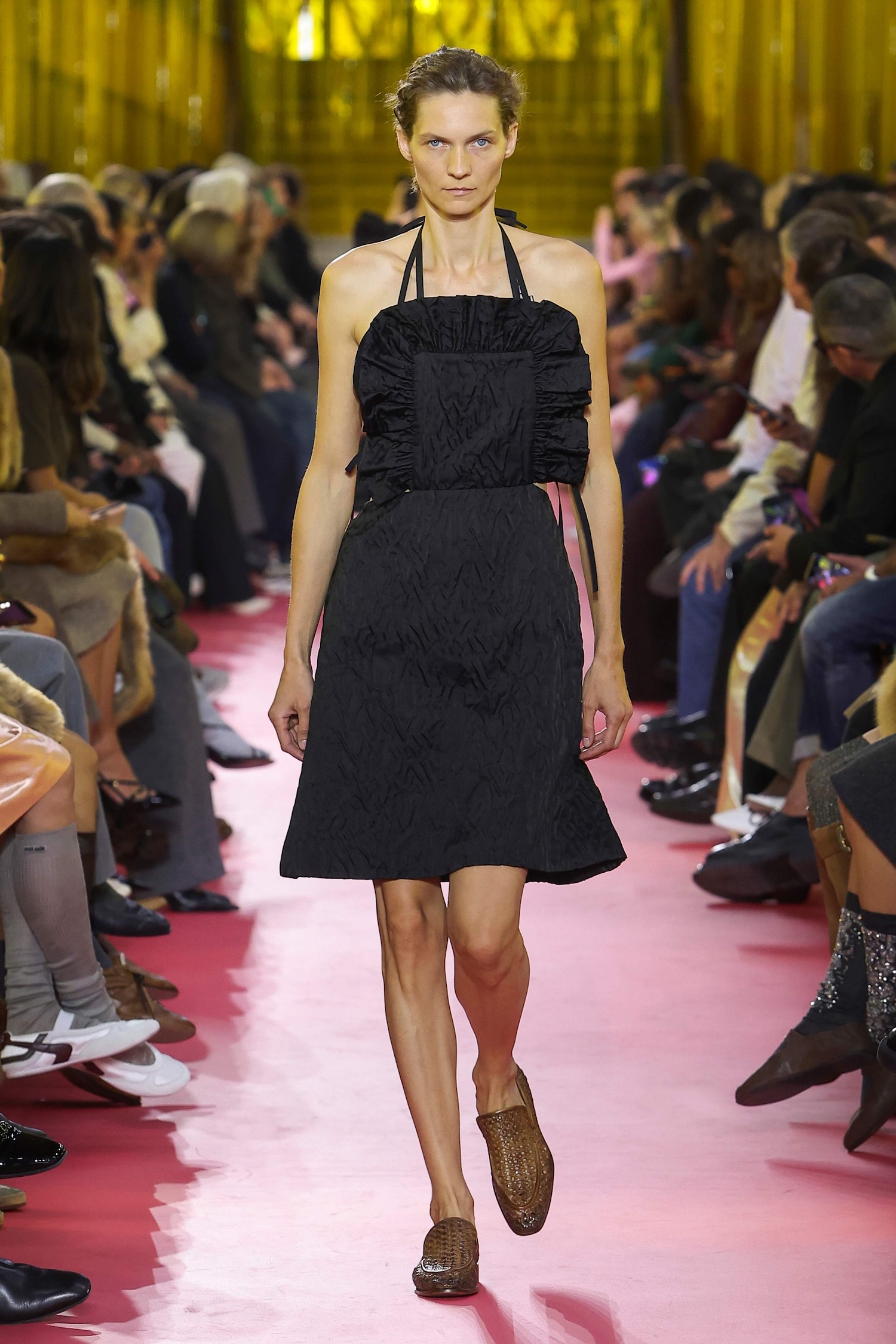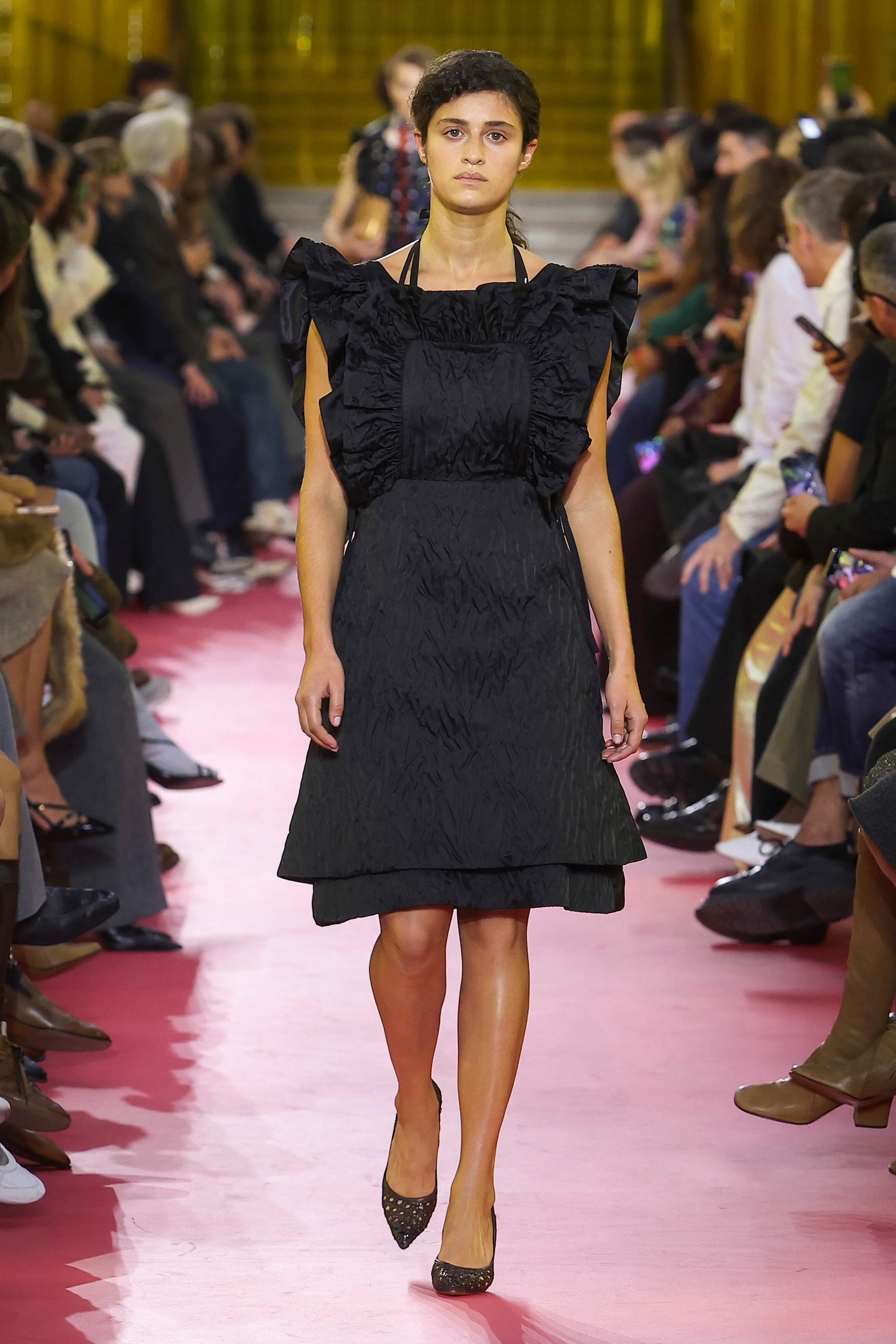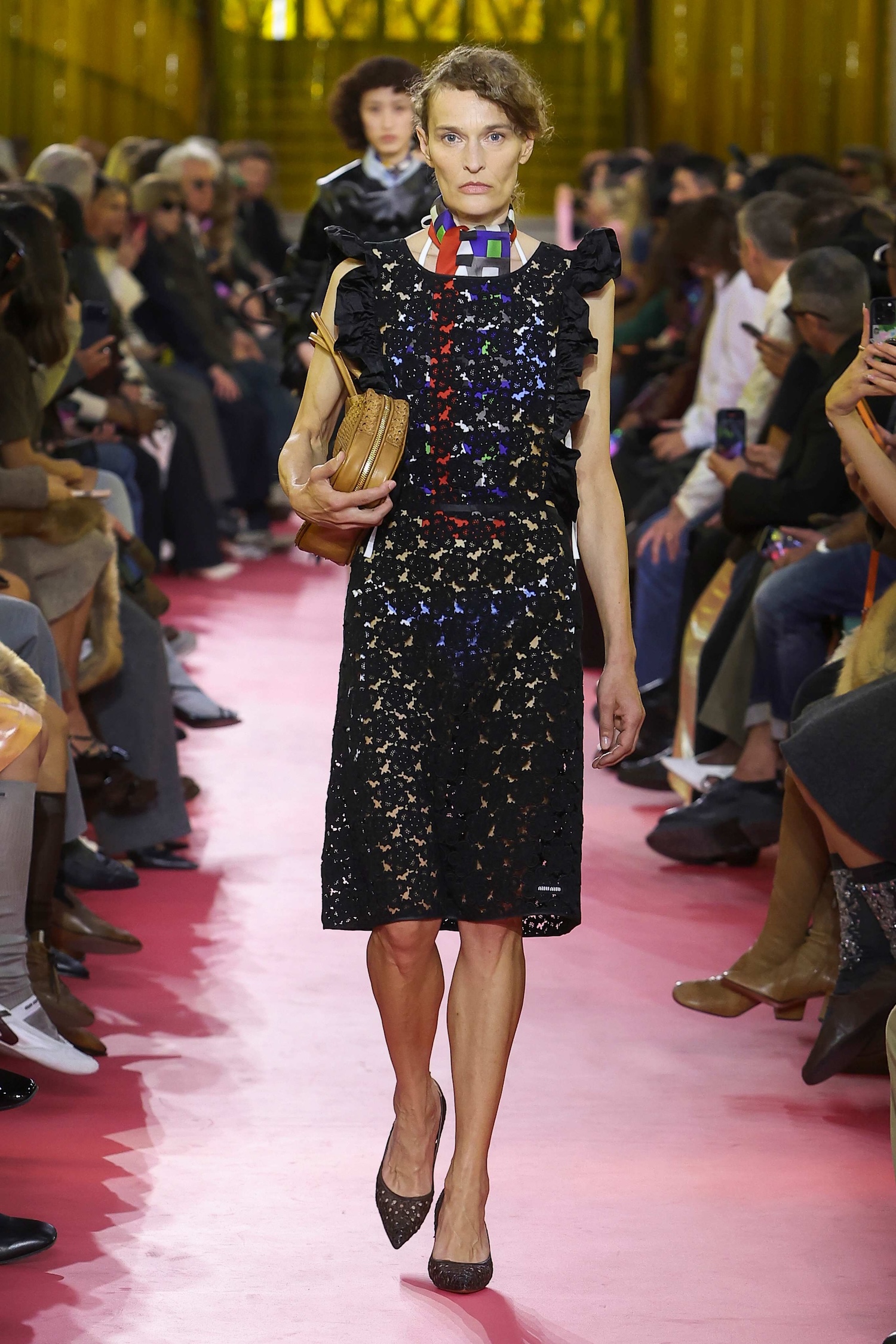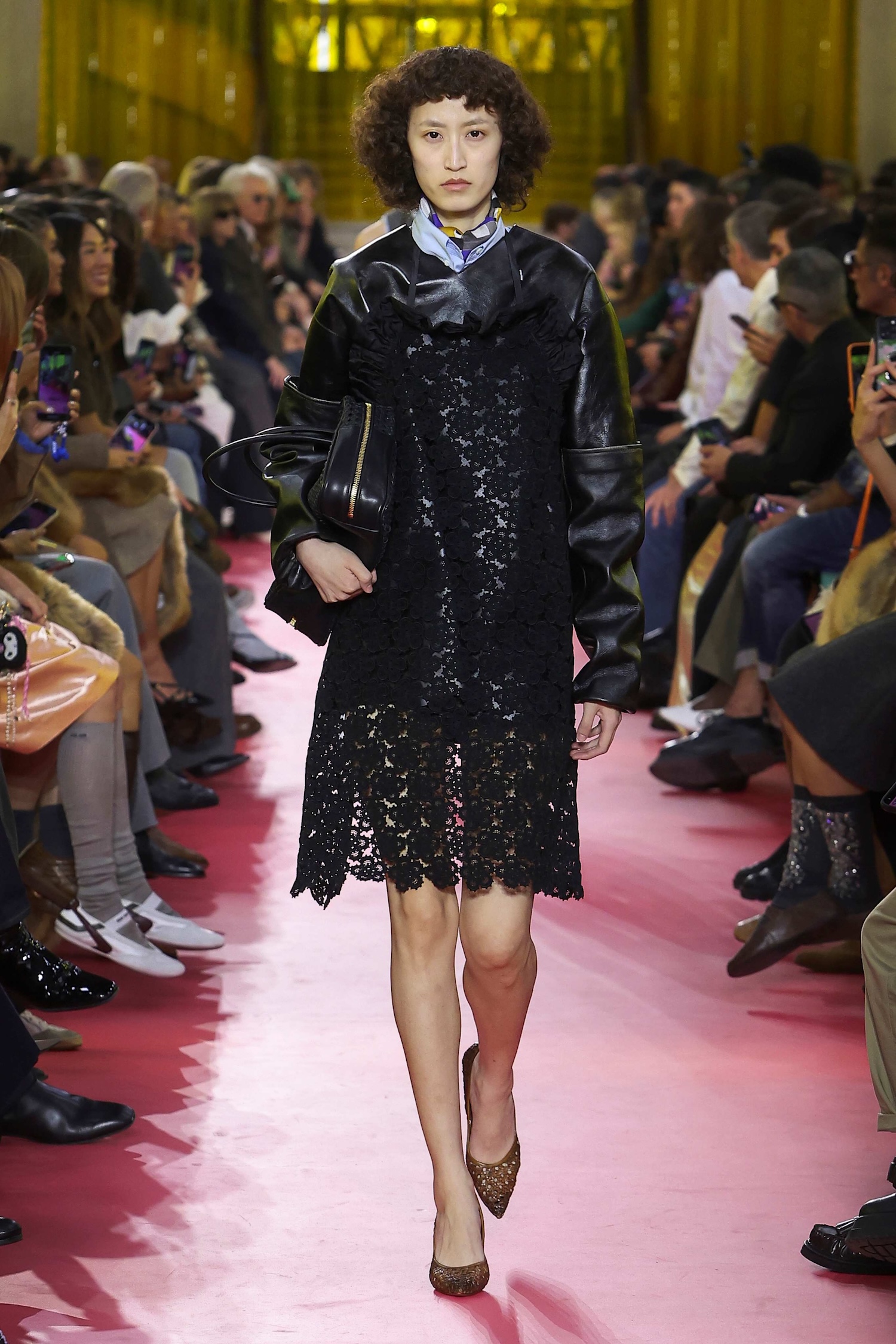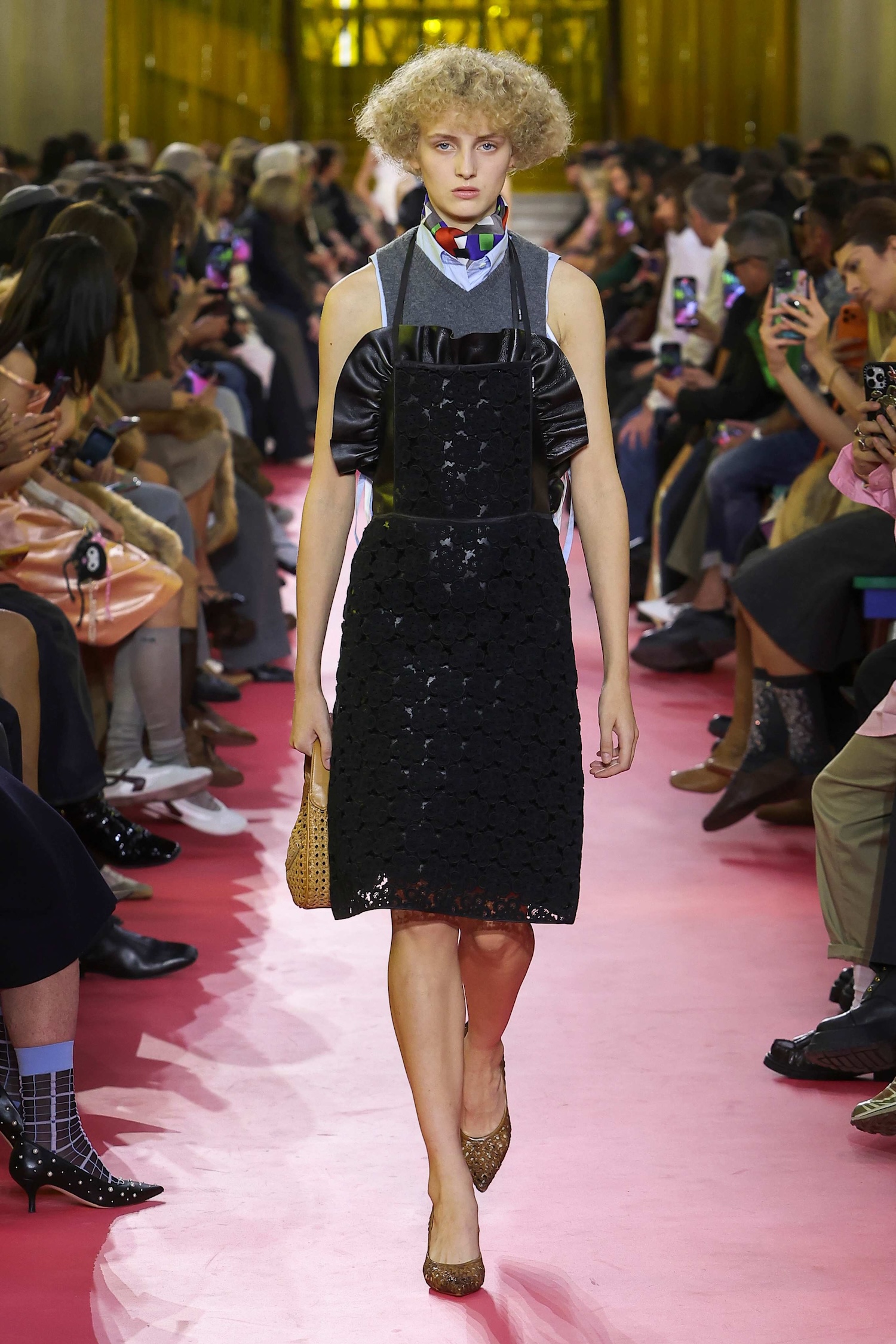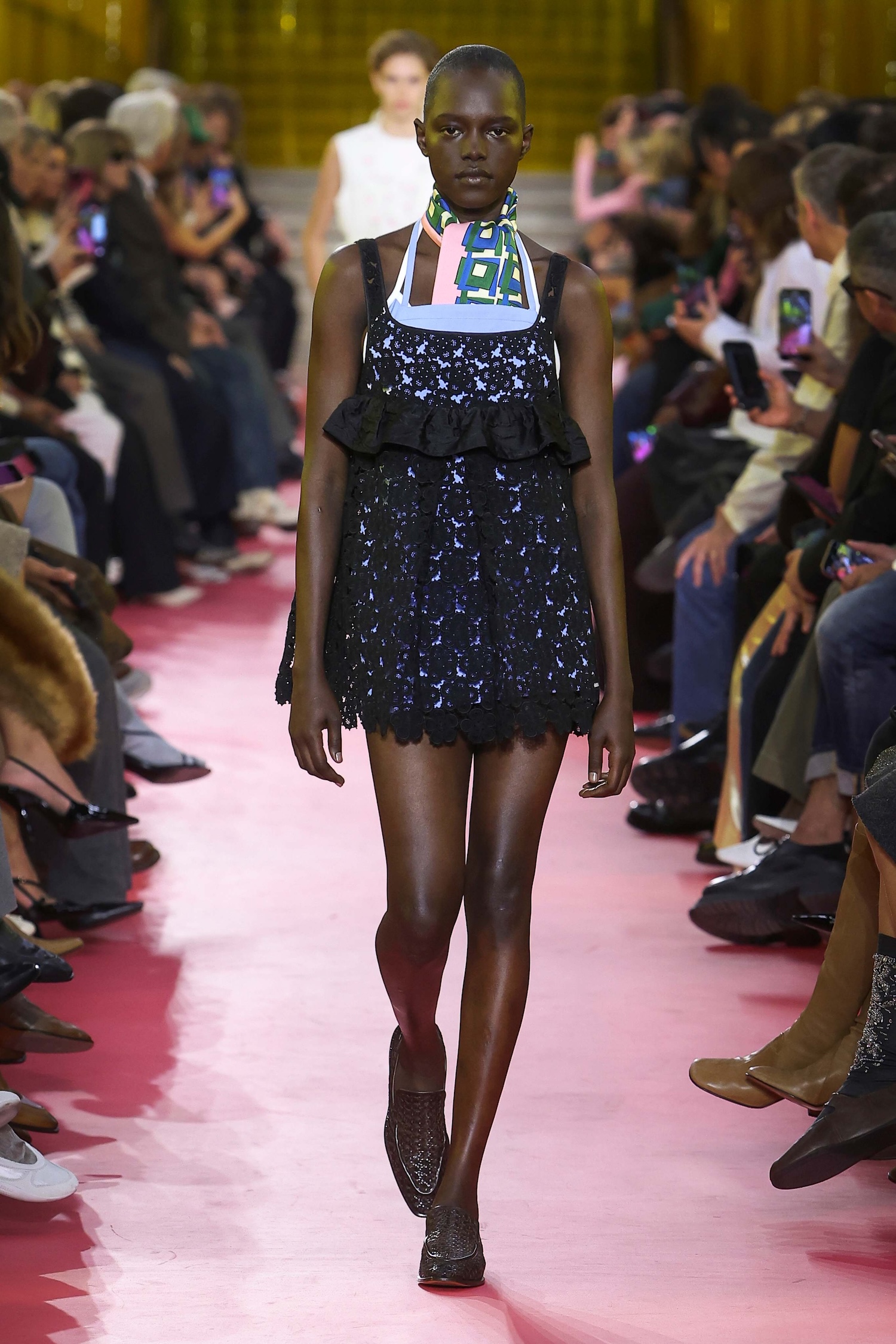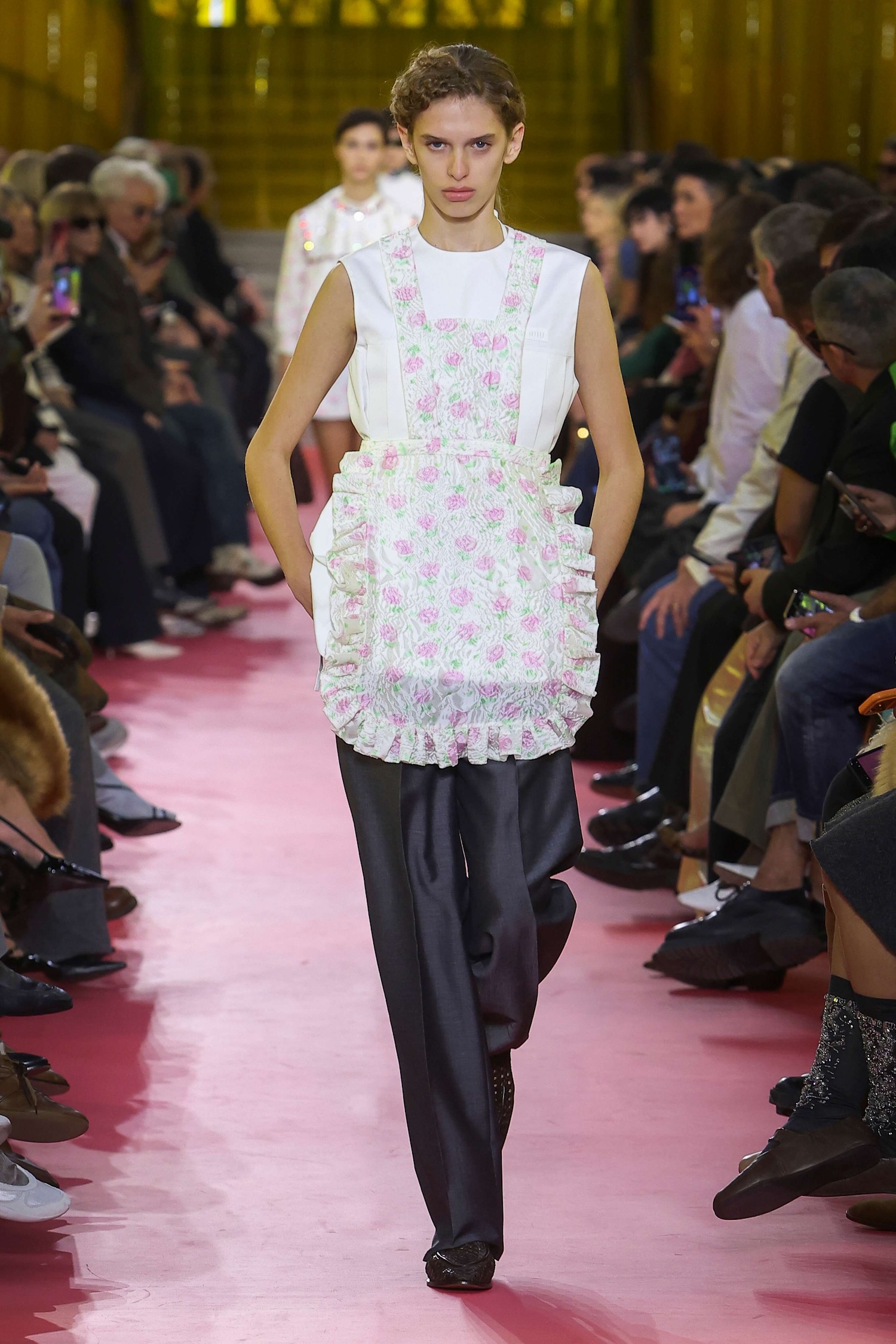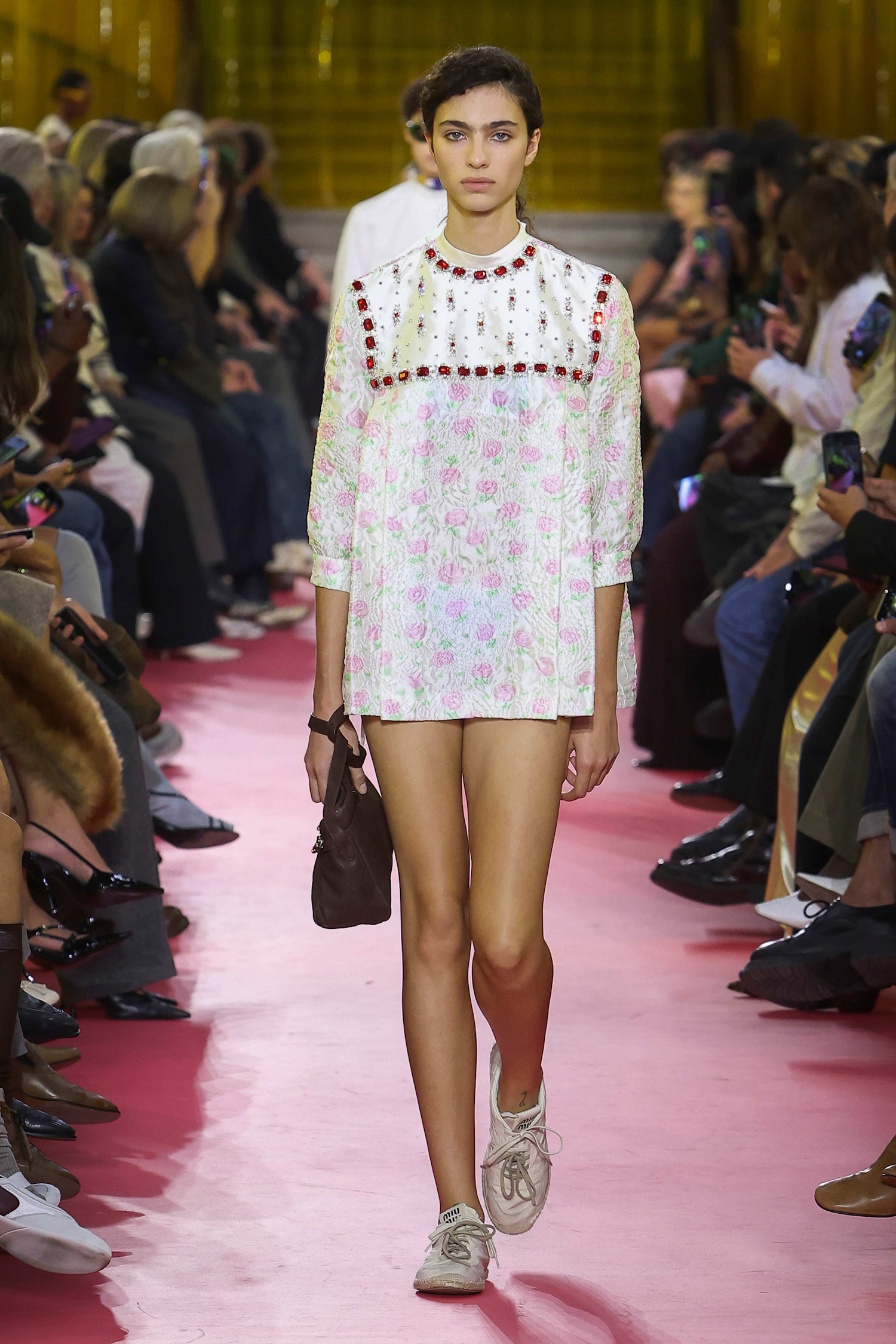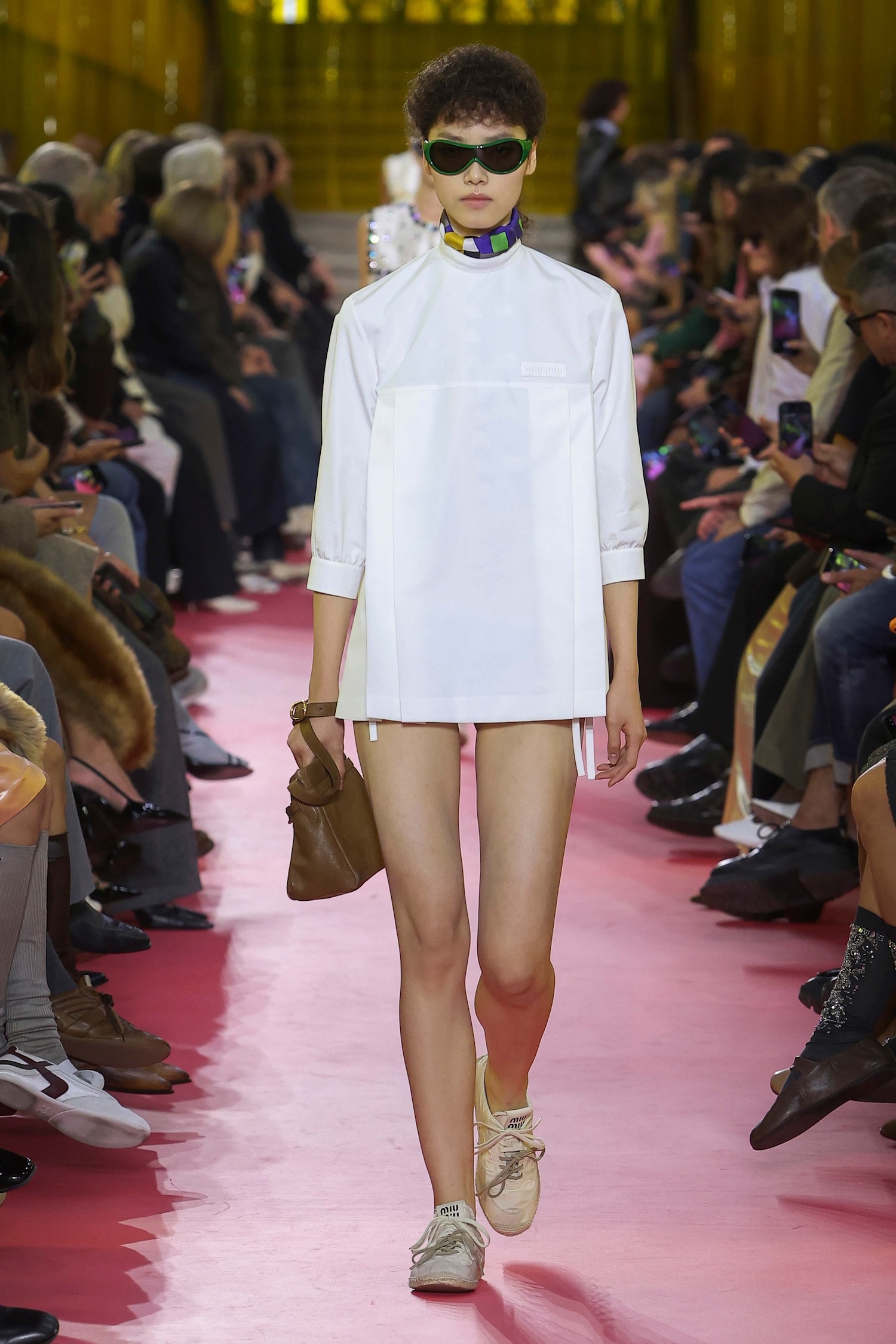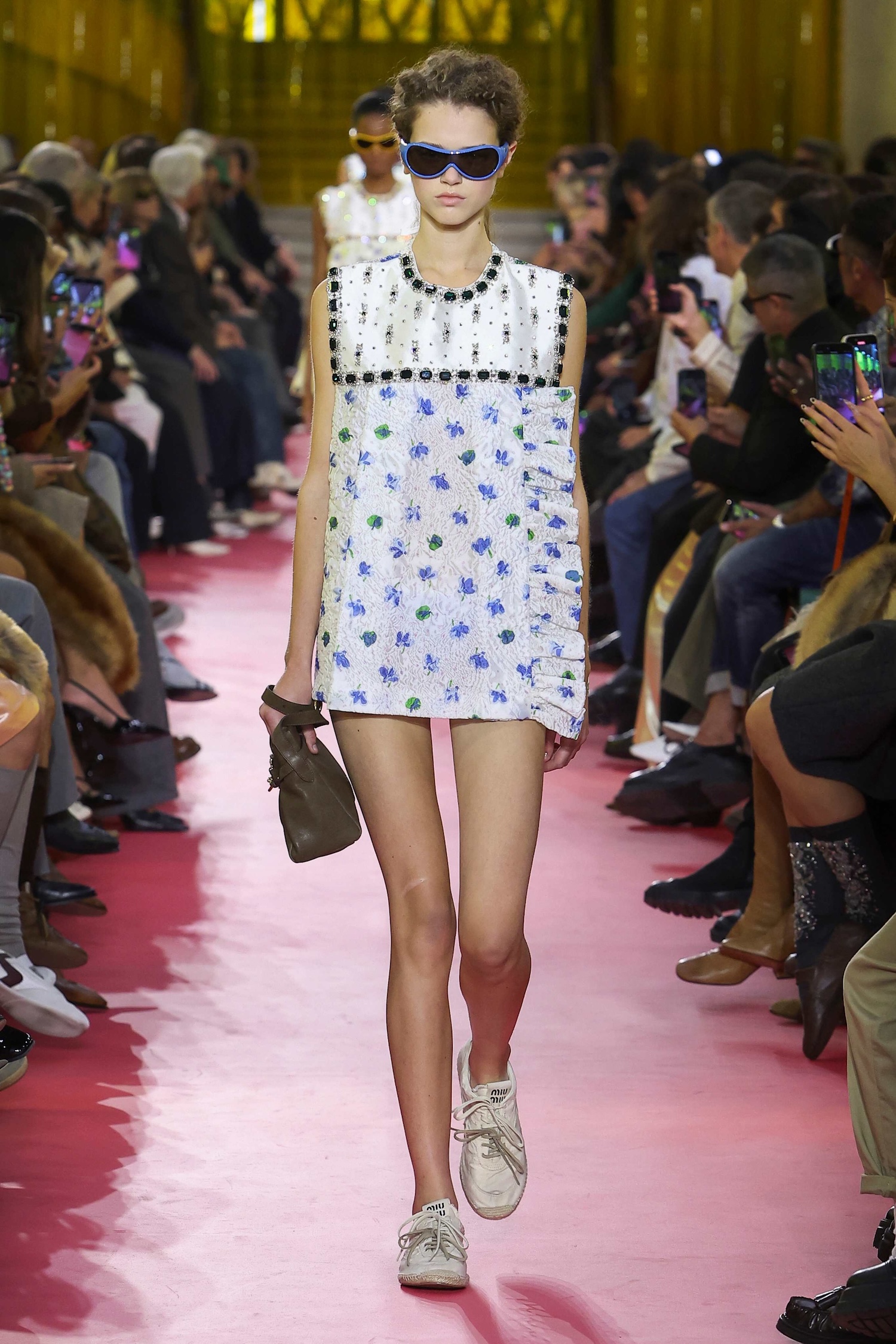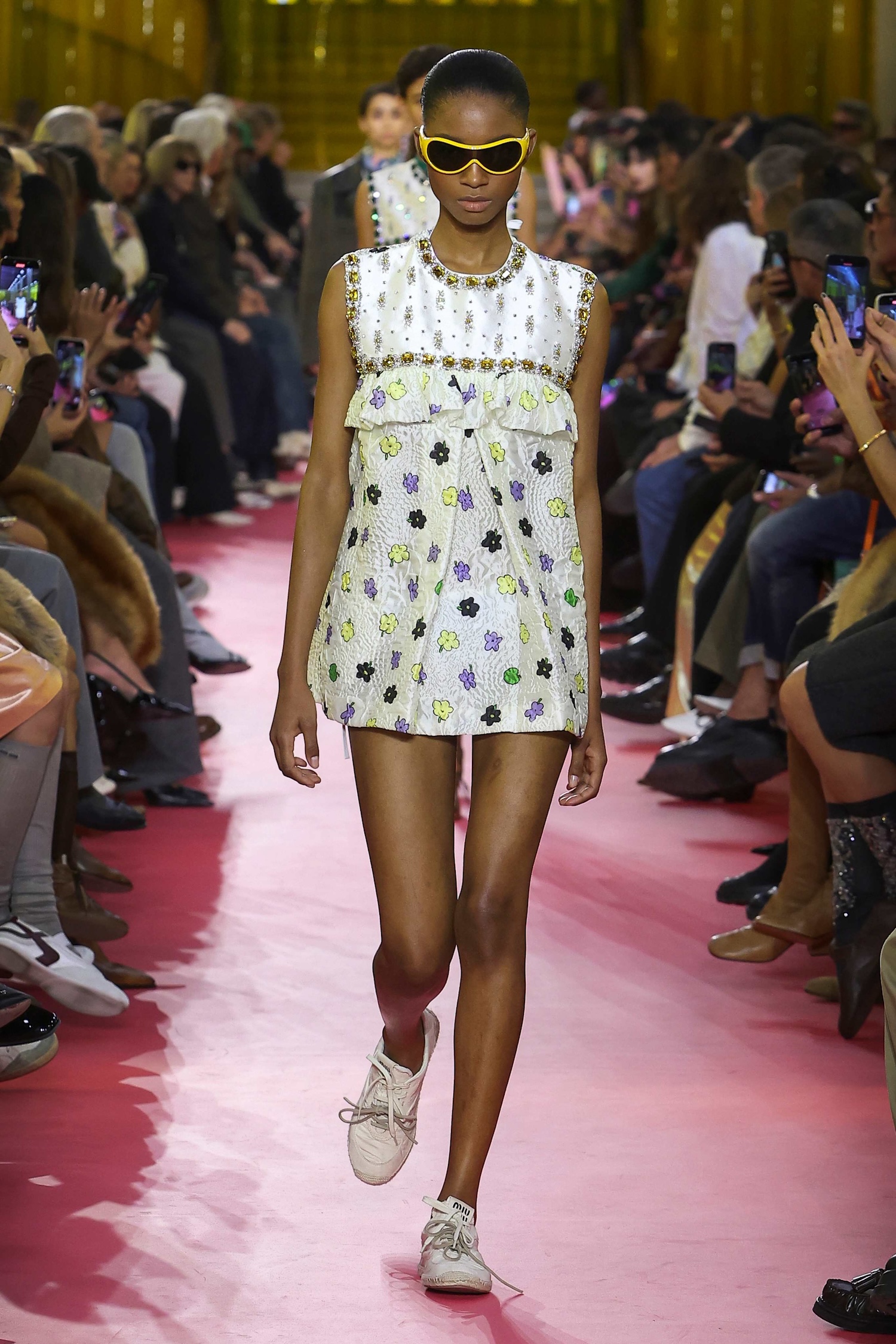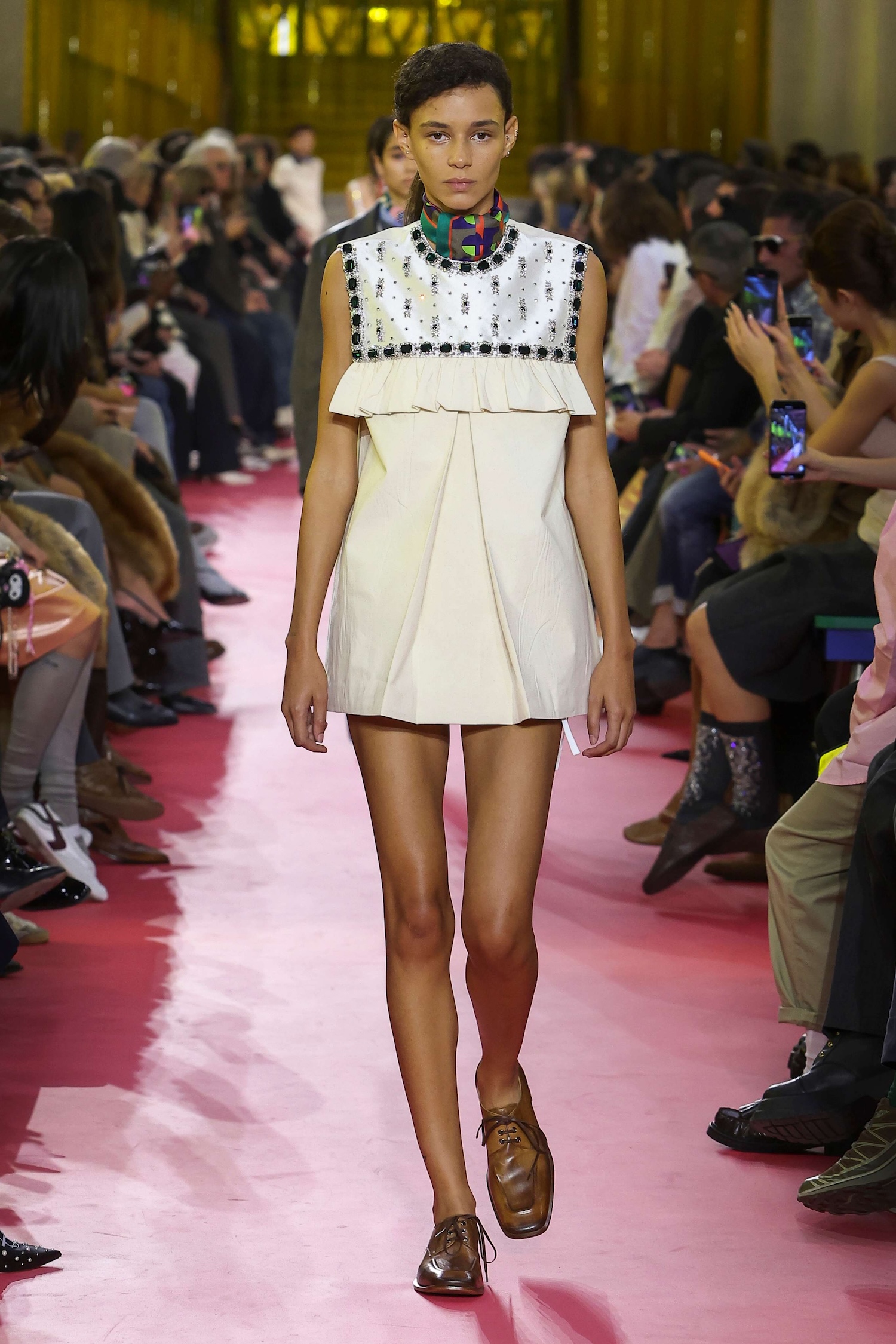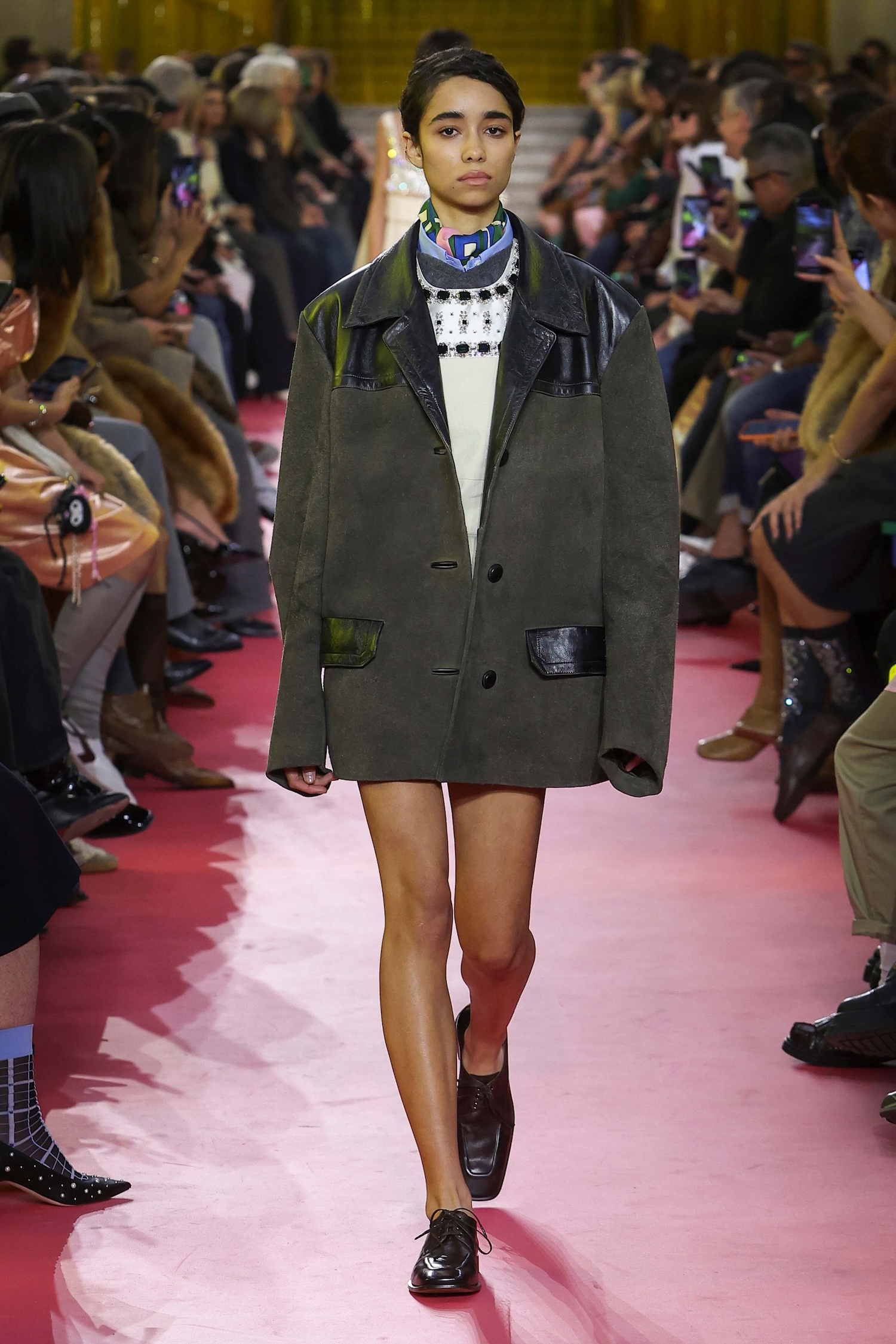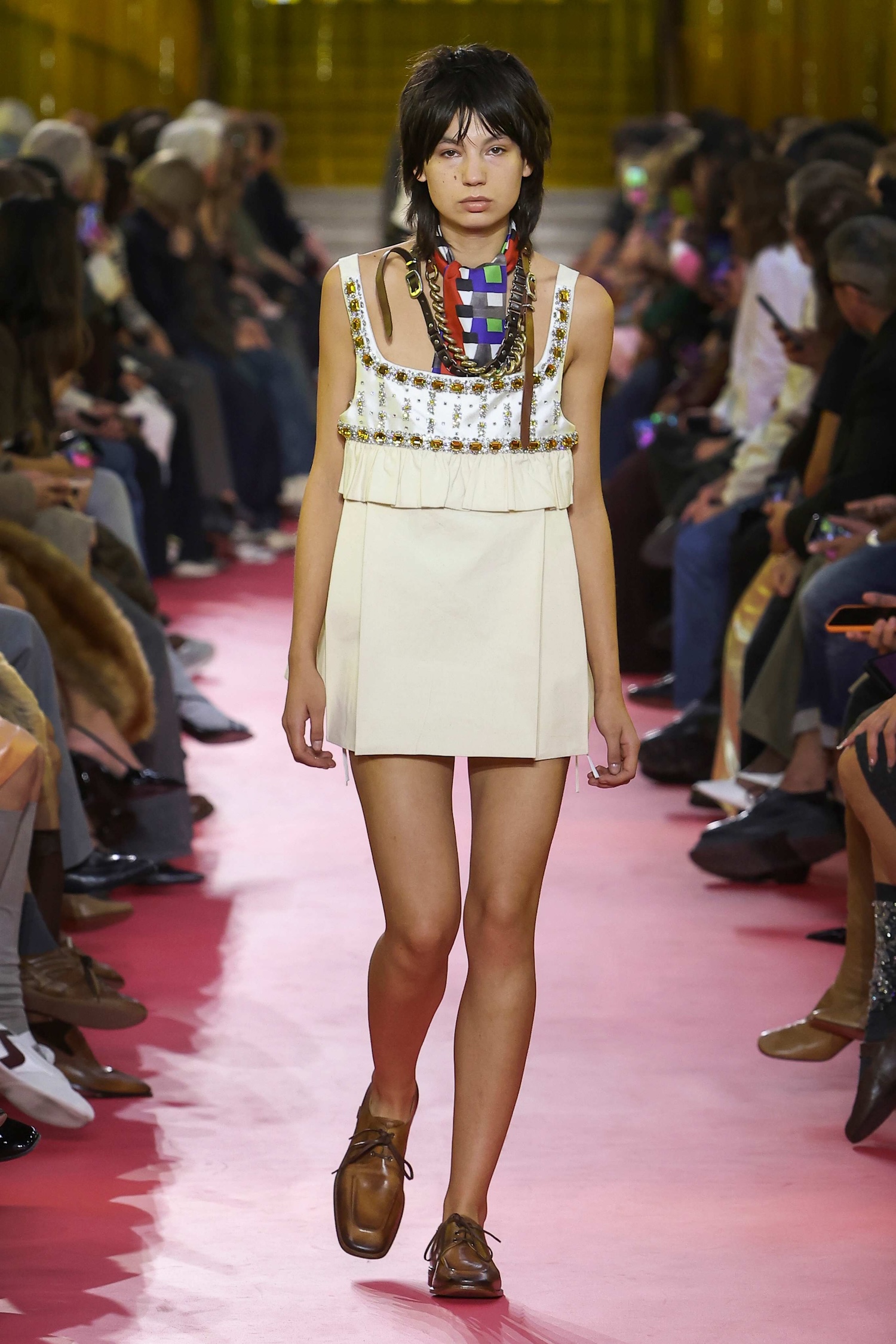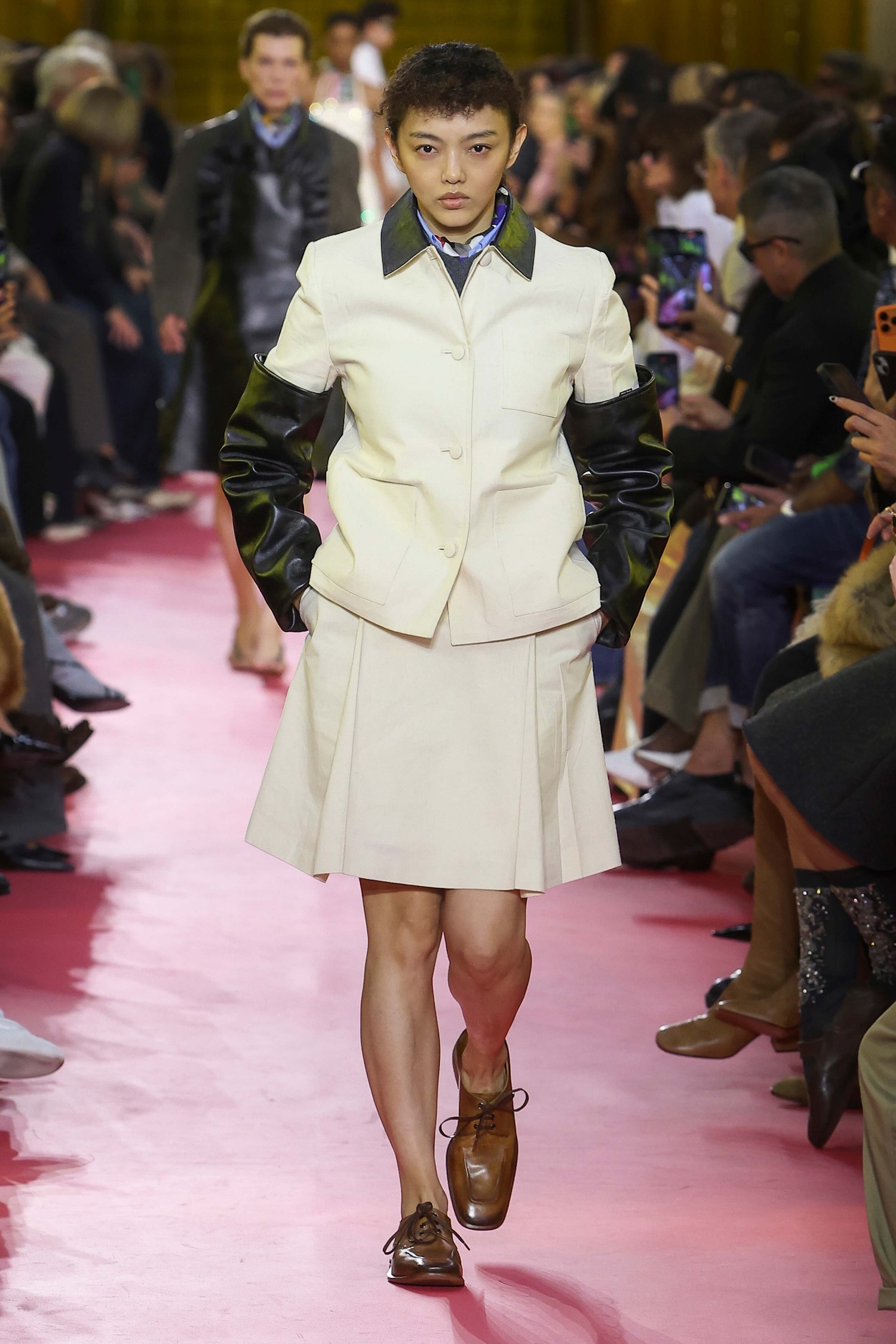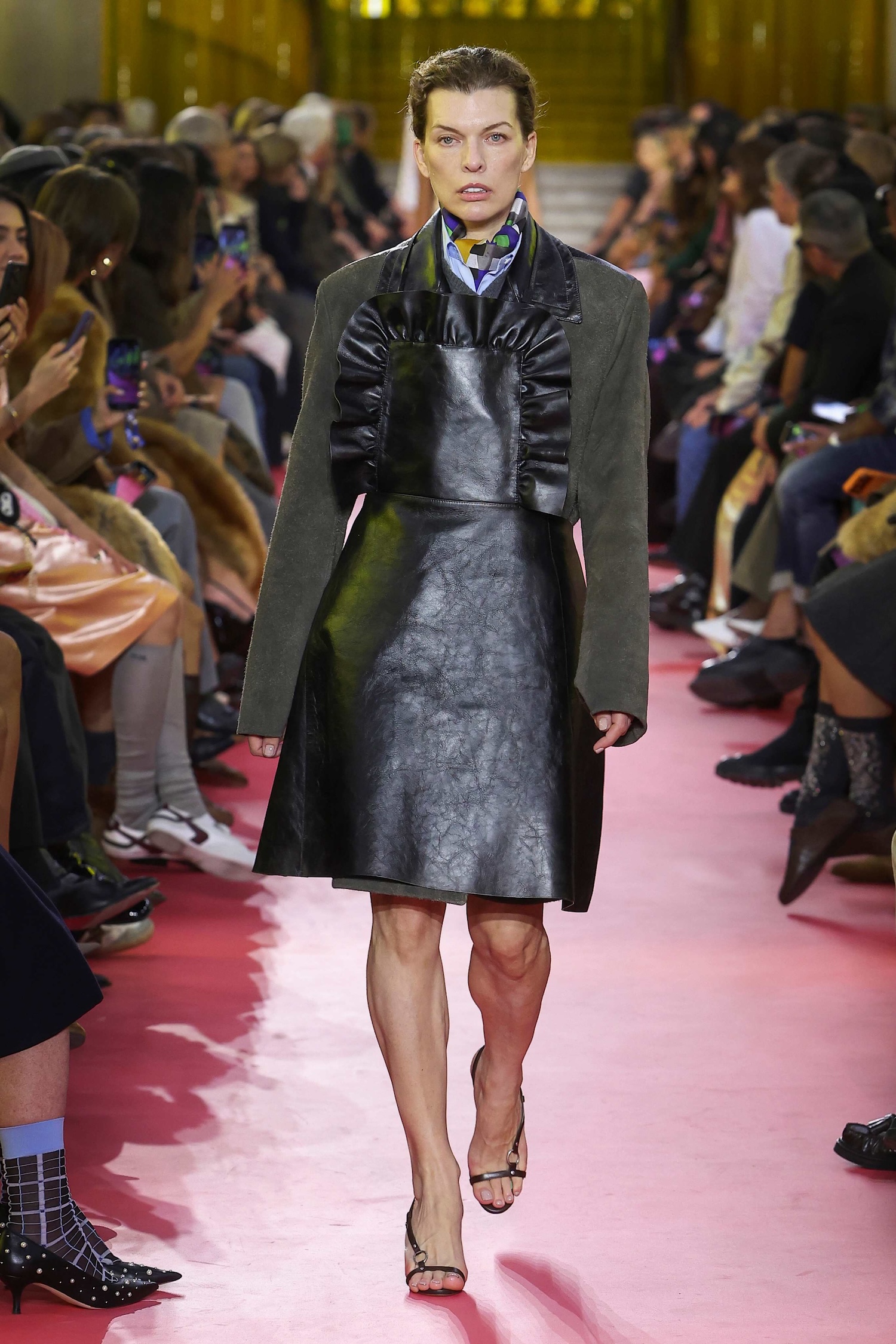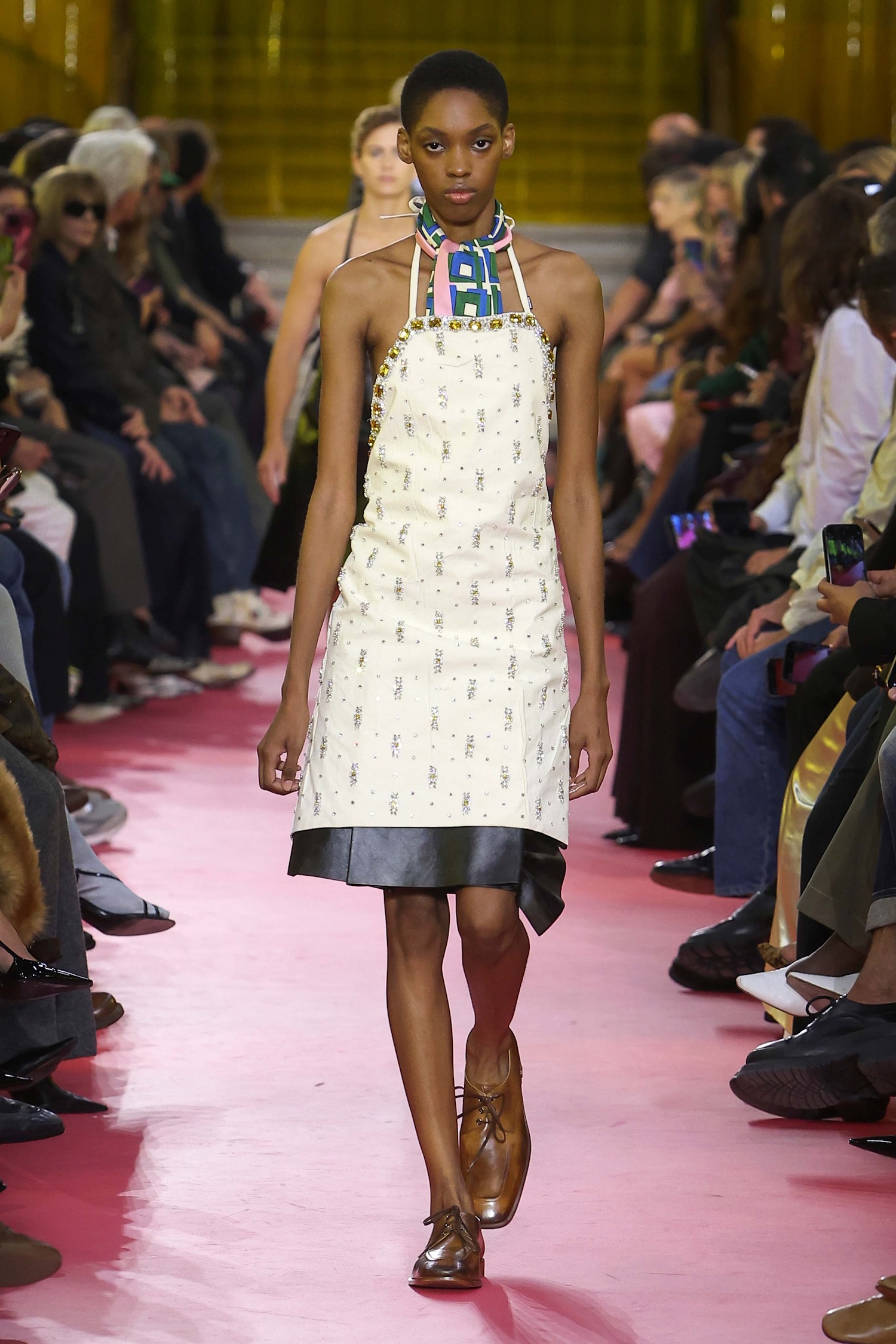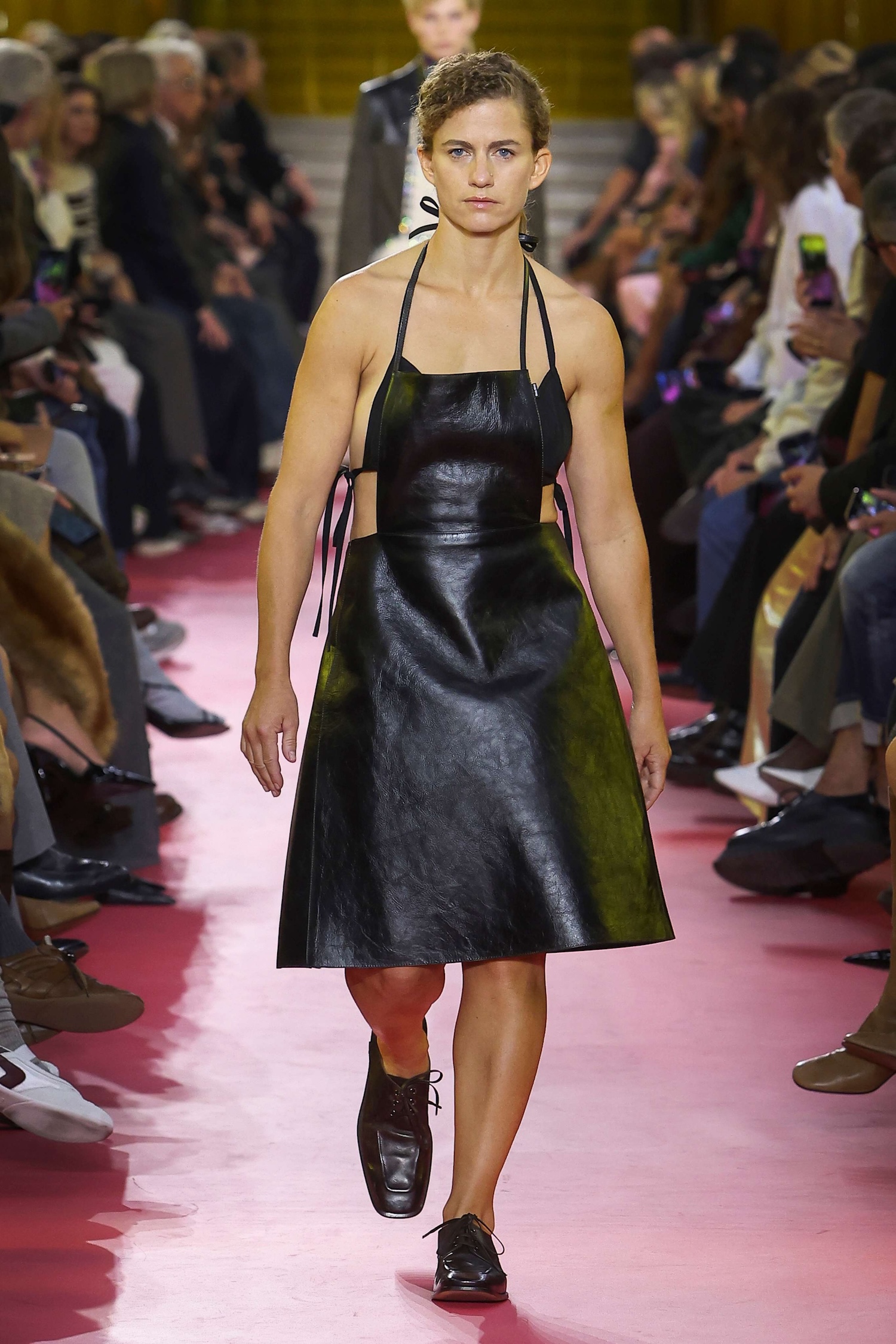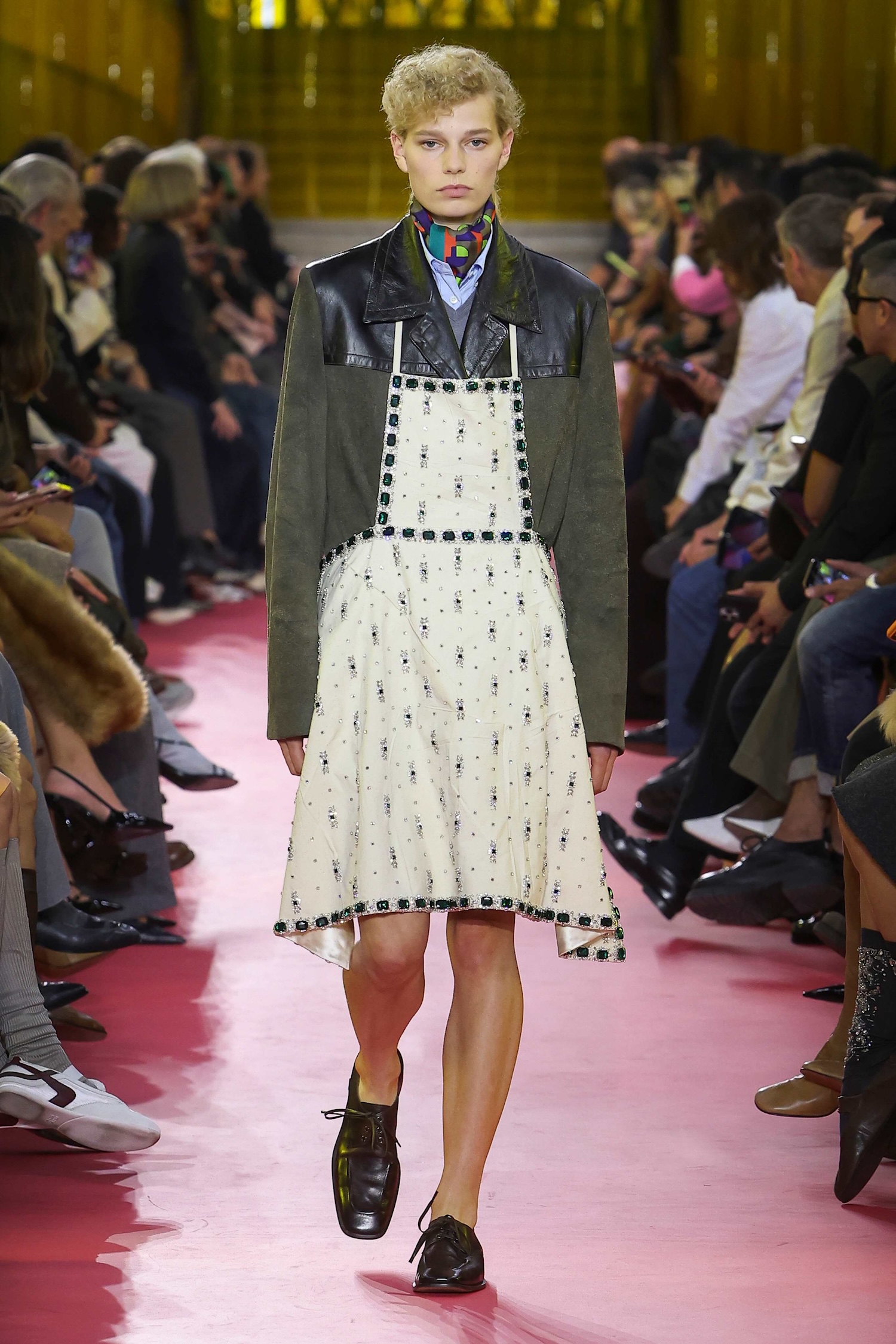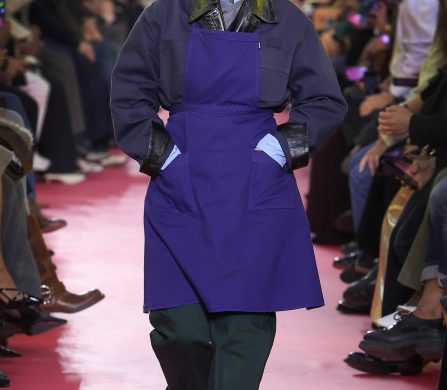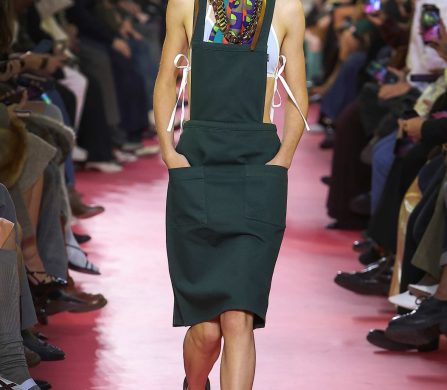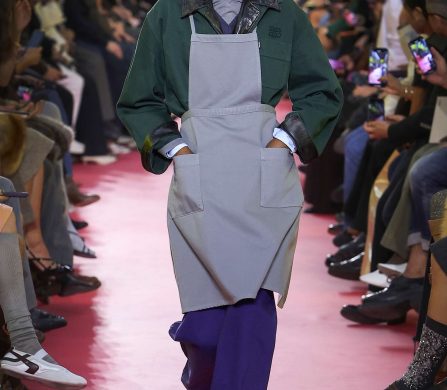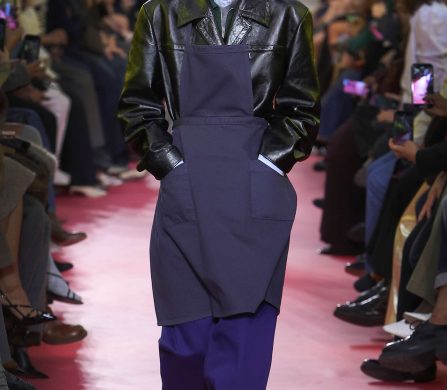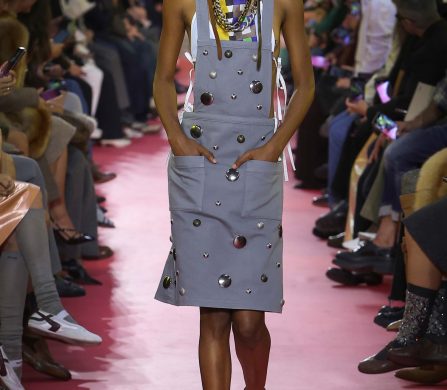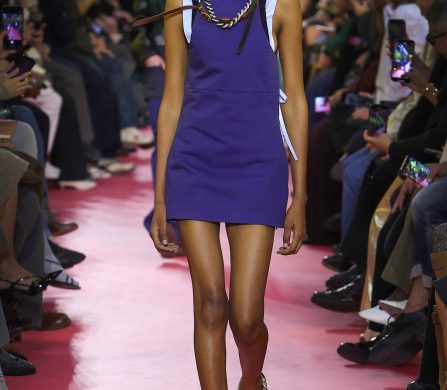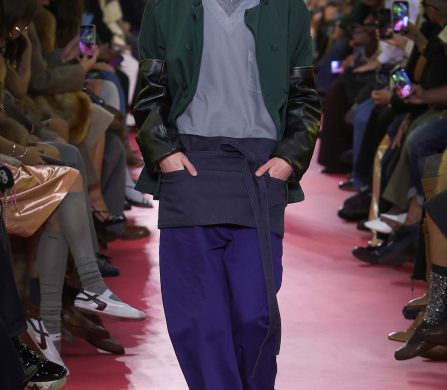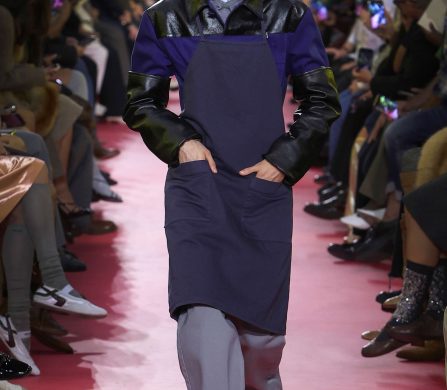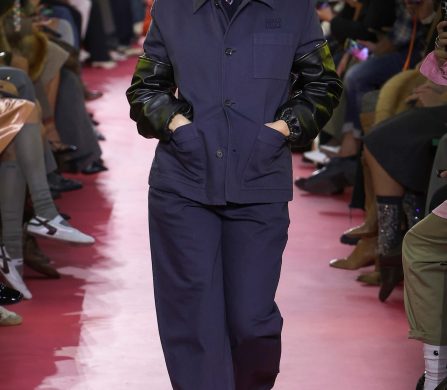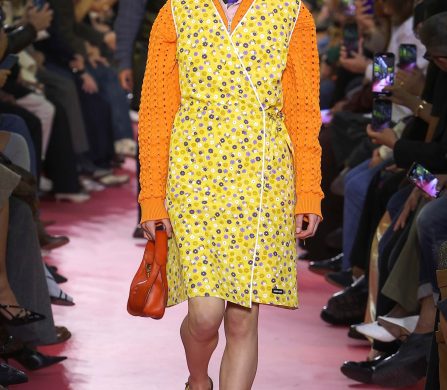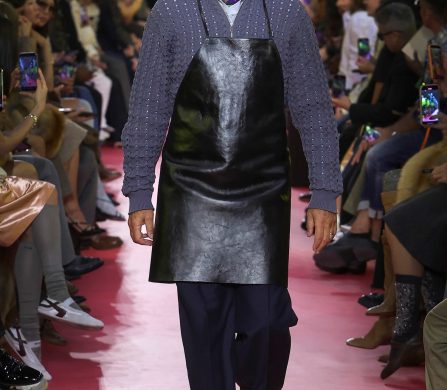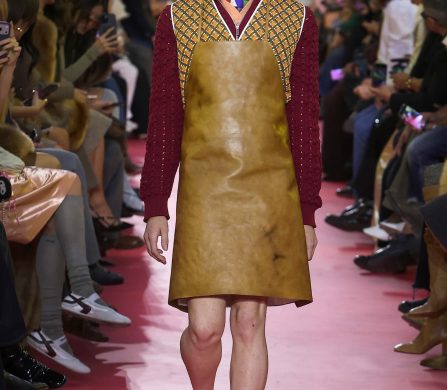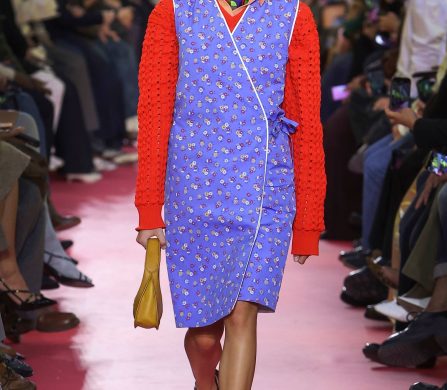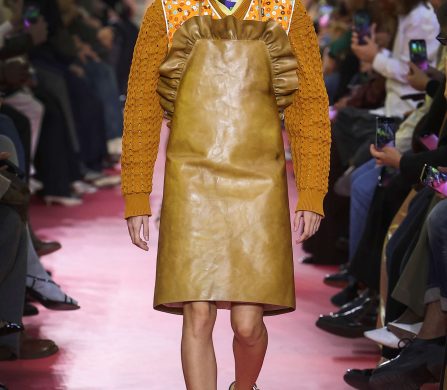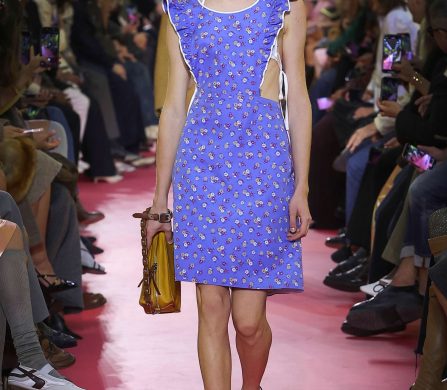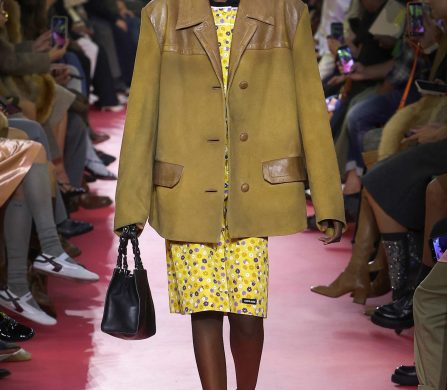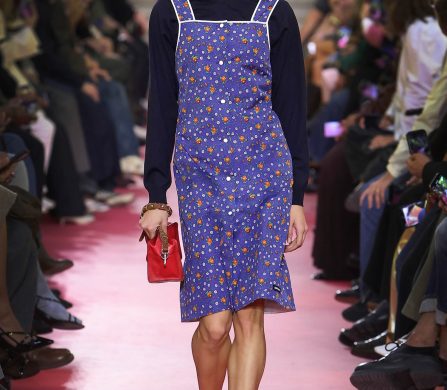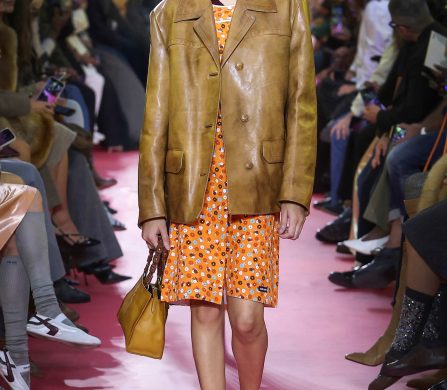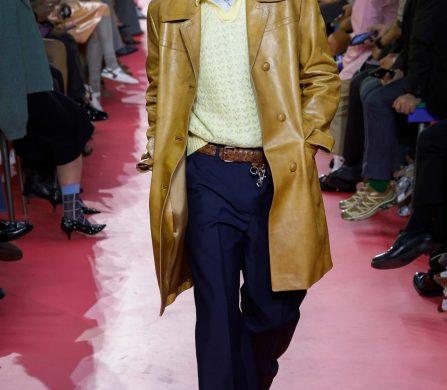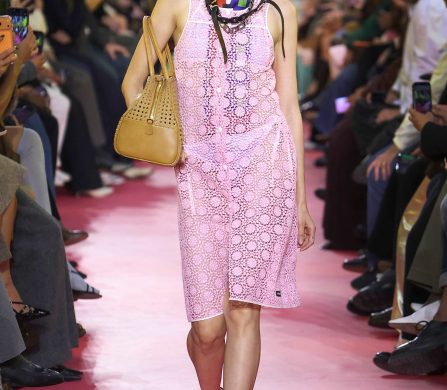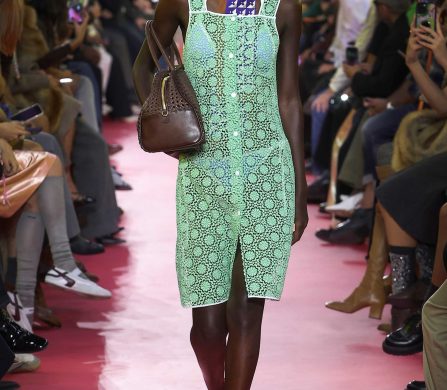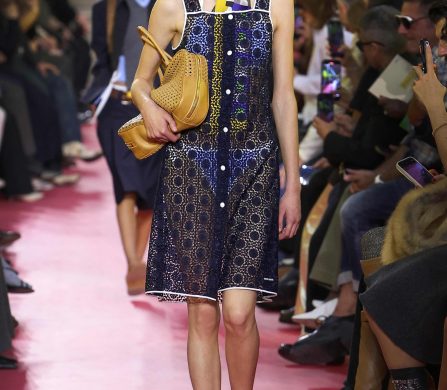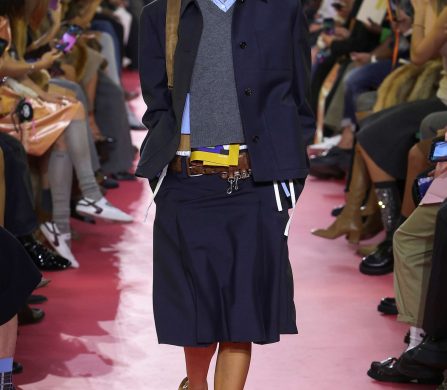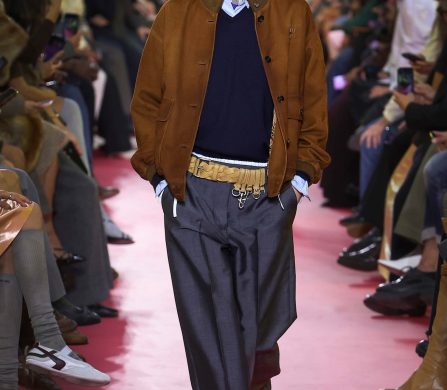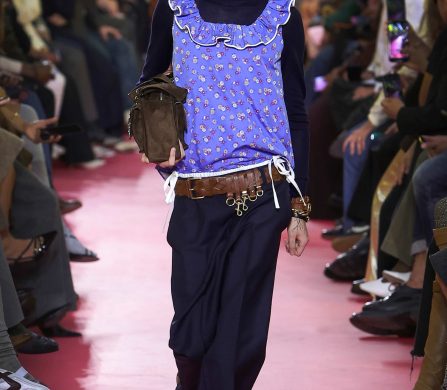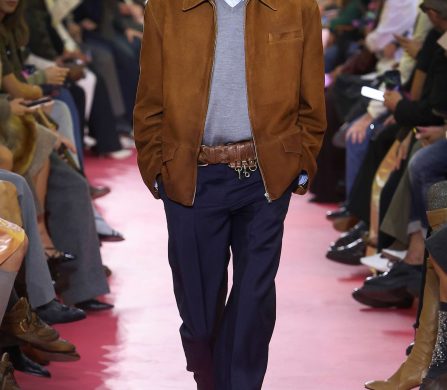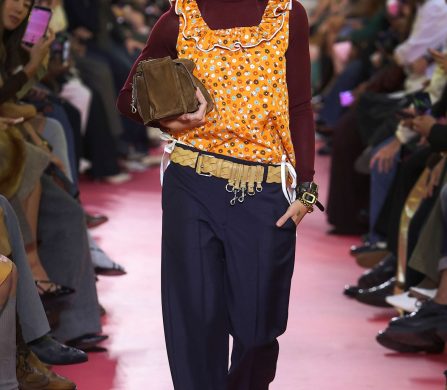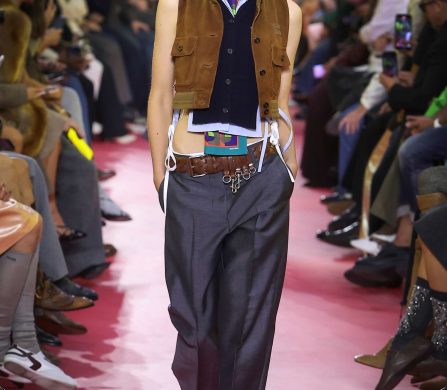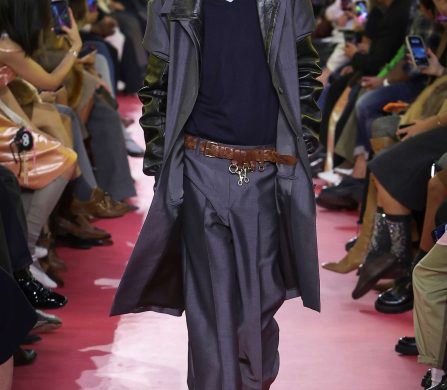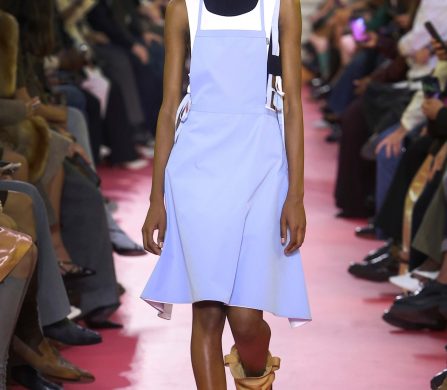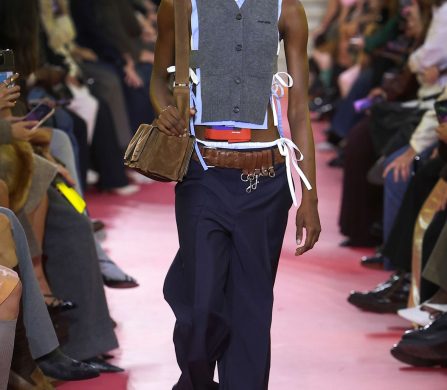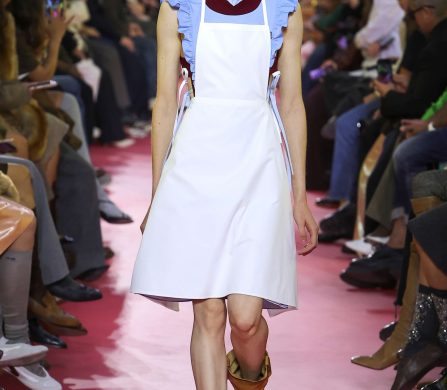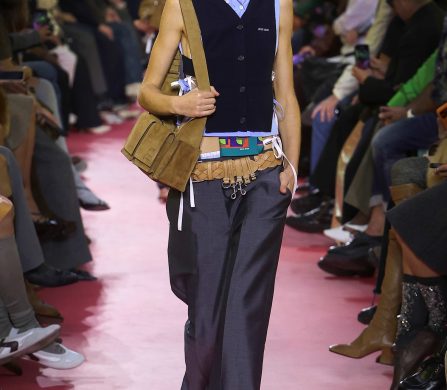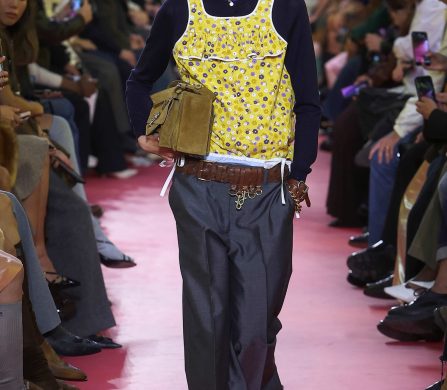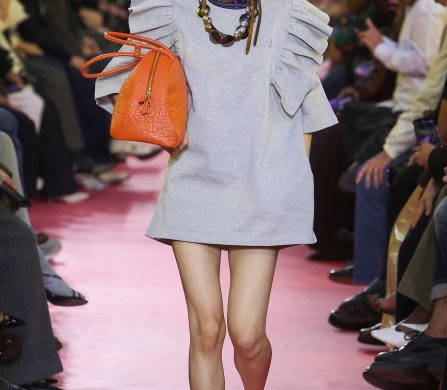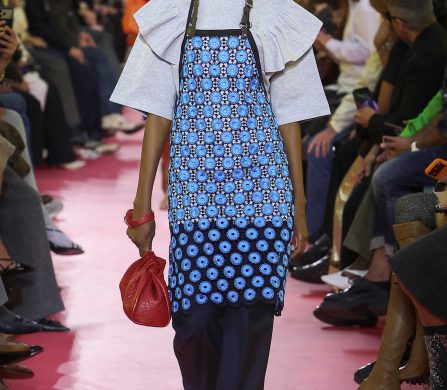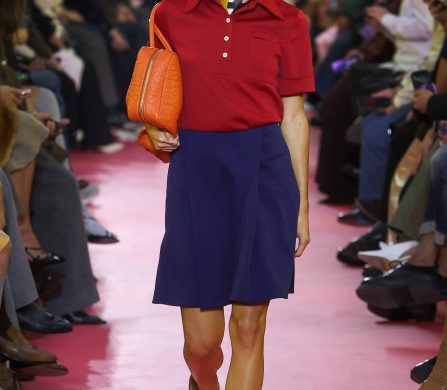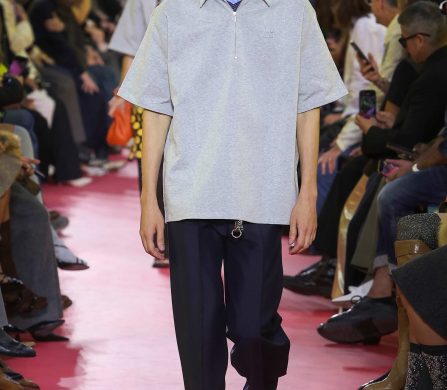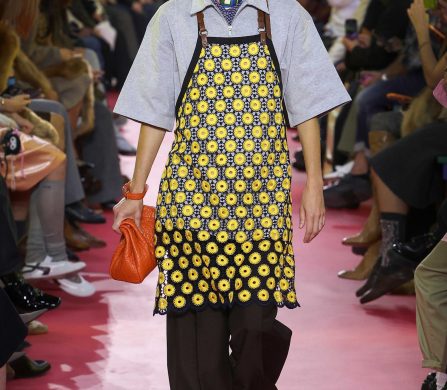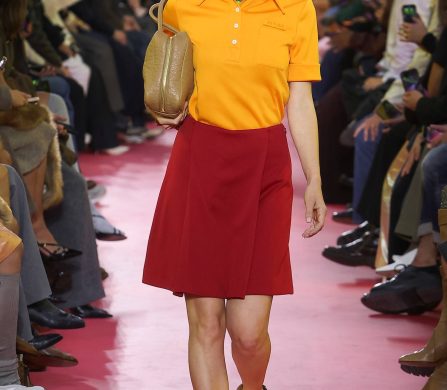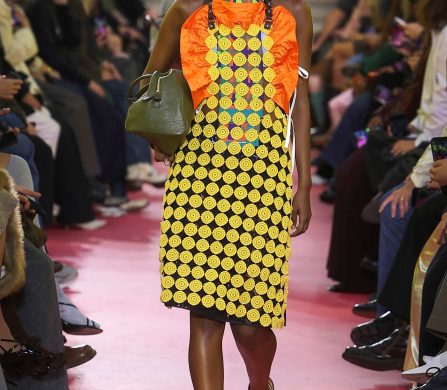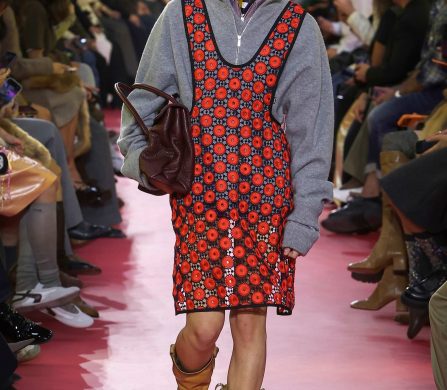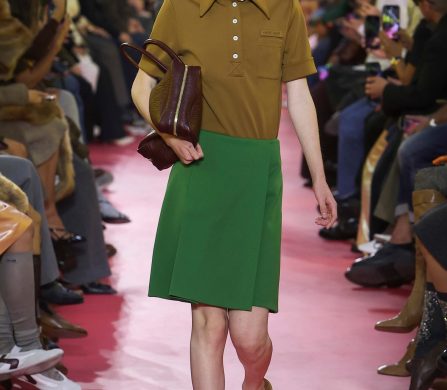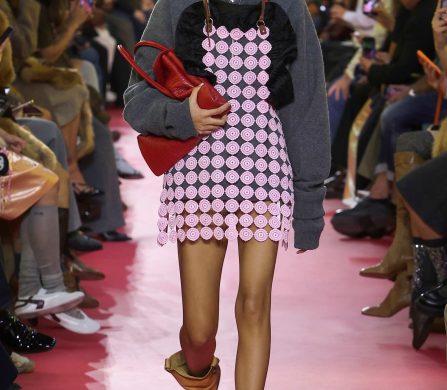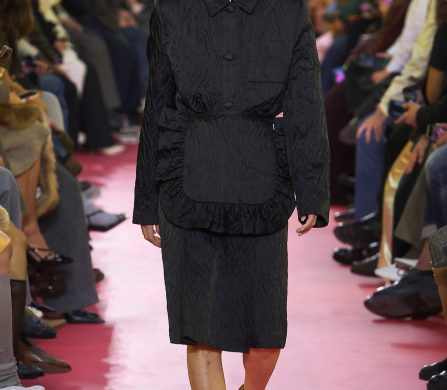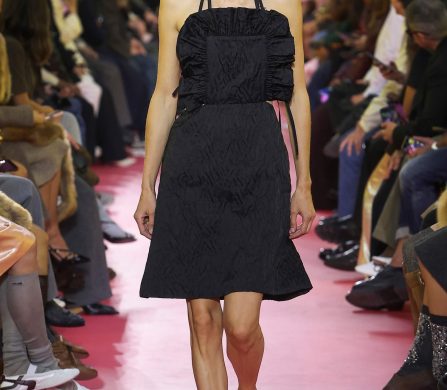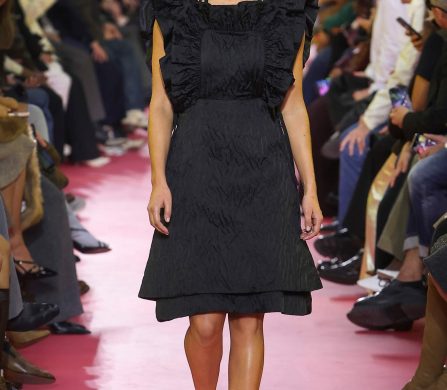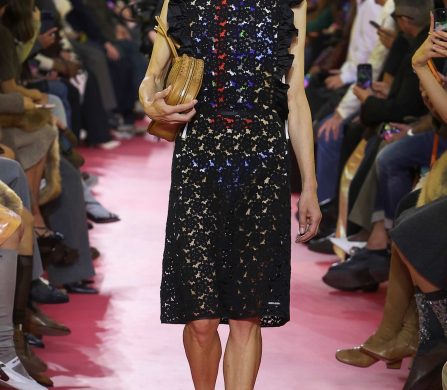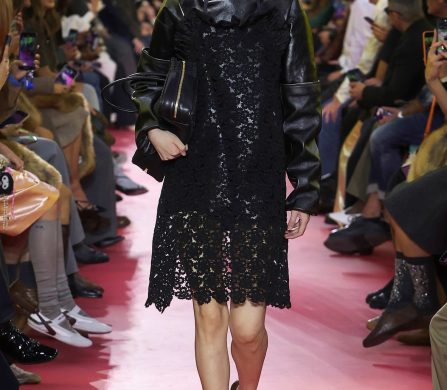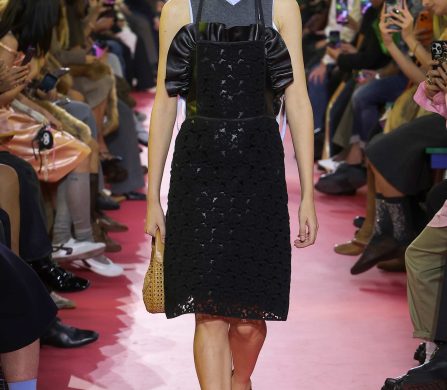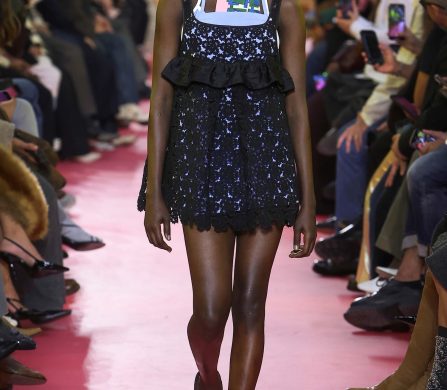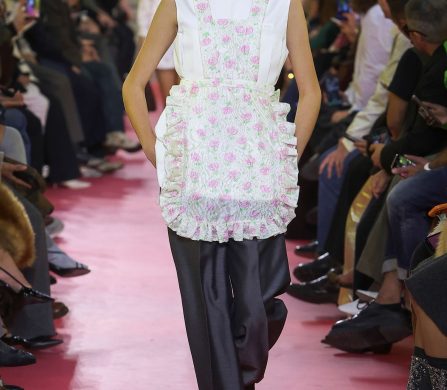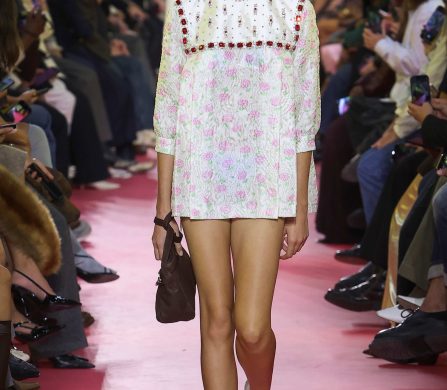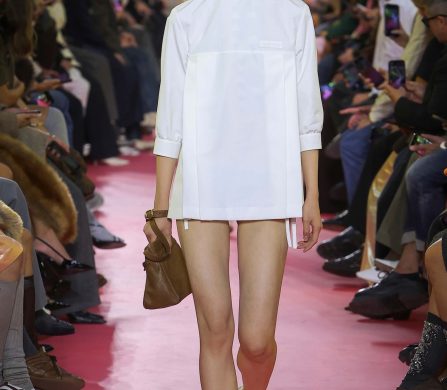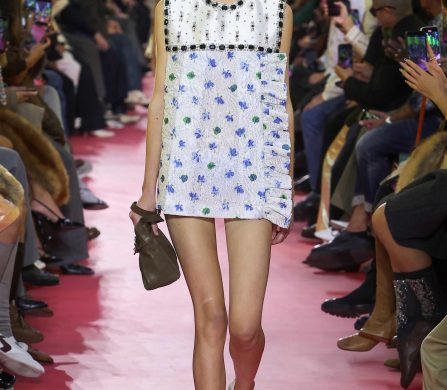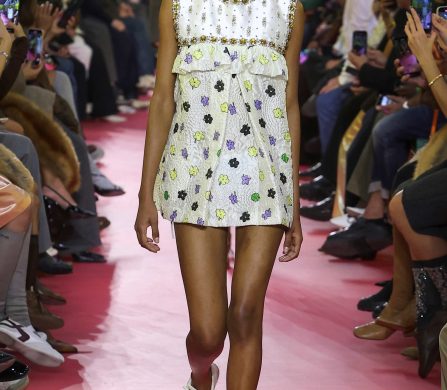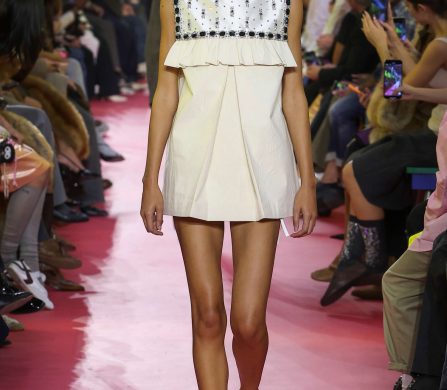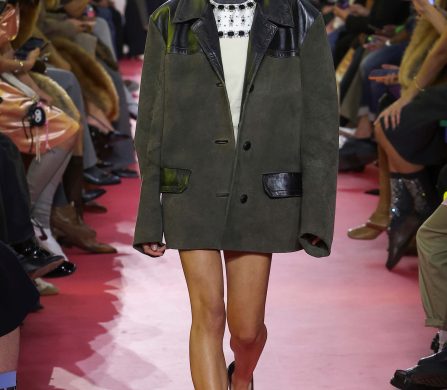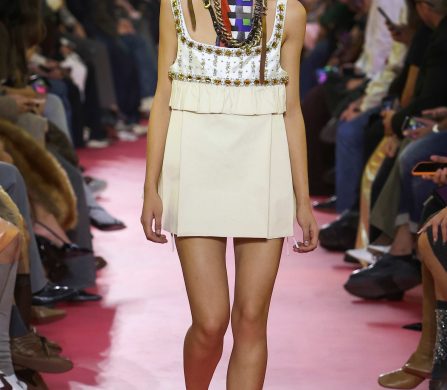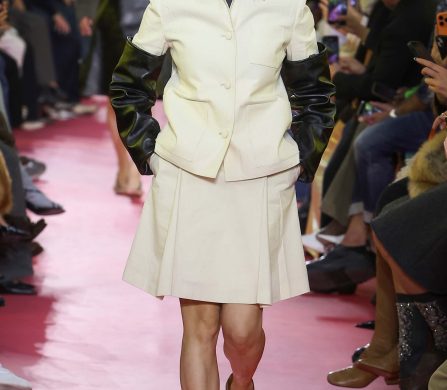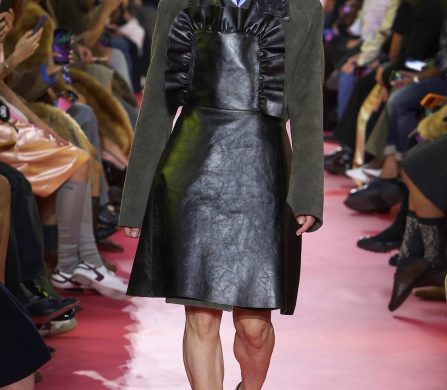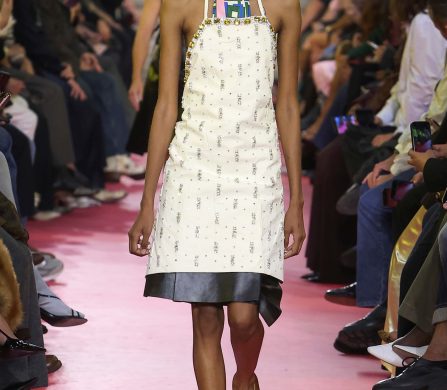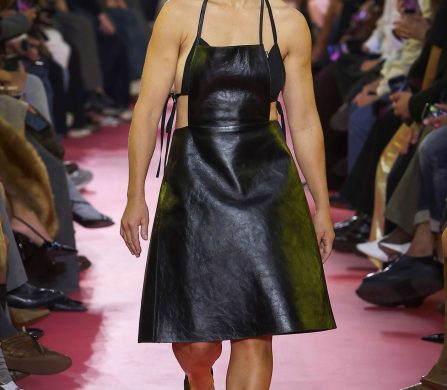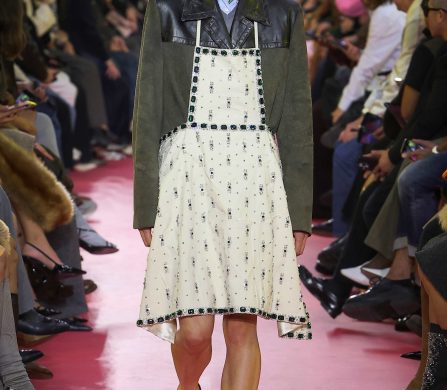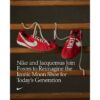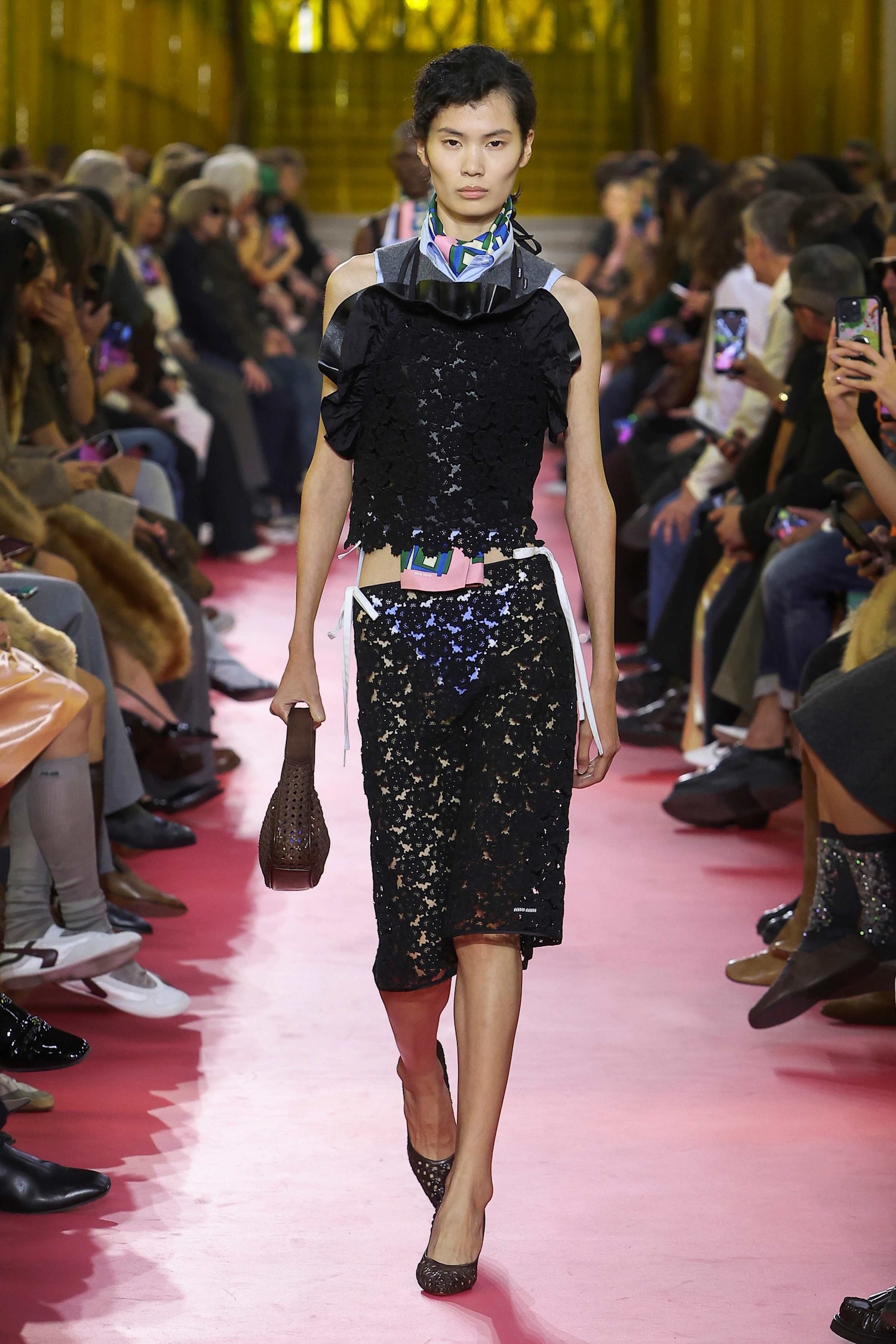
Rewrite 
When we talk about Miu Miu, we usually think of a wink, a flash of underwear, or a playful micro-skirt. But for Spring/Summer 2026, Miuccia Prada pulled us into a different, far more profound reality, transforming the monumental Palais d’Iéna not into a runway, but into a stark, almost clinical space lined with contrasting Formica tables – the universal aesthetic of a canteen or factory floor. The atmosphere felt serious, almost intellectual, making it the perfect playground for a collection dedicated to the dignity of women’s labour (often invisible, domestic, and essential).
Prada made a single garment her central, powerful argument: the apron. This piece, often relegated to the kitchen or the cleaner’s closet, was elevated into an emblem of agency and effort. It appeared on nearly every model, constantly shifting its meaning depending on its material.
We saw the utilitarian in rough drill cotton, raw canvas, and muscular black leather, which directly evoked the stark documentary photography of women in factories captured by figures like Dorothea Lange and Helga Paris. Yet, this toughness was deliberately subverted by Miu Miu’s core aesthetic: the aprons were rendered in delicate lace, shimmering silk cloqué, or adorned with flirtatious ruffles (“the most basic symbol of the feminine”) leaning into pieces that felt lovingly lifted from a European grandmother’s daily wardrobe. Others were instead bejewelled with crystals and studs, or worn unbuttoned and layered over string bras, embracing the dual reality of women’s labour – both physical and deeply tender.
The casting was equally subversive, including actors like Sandra Hüller (of ‘Anatomy of a Fall’), who opened the show in a utilitarian blue apron layered over a heavy-duty barn jacket and pooling trousers, and a delightfully eccentric Richard E. Grant, who modelled a heavy leather ‘butcher’ apron with the swagger of a kinky chef. Milla Jovovich also walked, sporting a ruffled black leather apron over a more rigid tailored jacket.
But really, aprons were layered over everything: over work boots and pooling trousers, or tied open to expose the defiant flash of undergarments – a final, Miu Miu signature that suggested workwear, too, can be fiercely provocative.
Handbags, including new bowling bag shapes and updated Beau bags, were constructed from robust, practical leather, perfectly matched by sturdy shoes and braided belts that spoke to the enduring nature of the workwear theme.
From the bejewelled surfaces of evening aprons to the robust utility of the new leather handbags, the collection hammered home a singular, necessary truth: the invisible effort of women is not only worthy of respect, but it is, in the hands of Prada, undeniably chic.
Discover the collection here.
photography. courtesy of Miu Miu
words. Gennaro Costanzo
The post miu miu ss26 | at work appeared first on Schön! Magazine.
in HTML format, including tags, to make it appealing and easy to read for Japanese-speaking readers aged 20 to 40 interested in fashion. Organize the content with appropriate headings and subheadings (h1, h2, h3, h4, h5, h6), translating all text, including headings, into Japanese. Retain any existing
tags from

When we talk about Miu Miu, we usually think of a wink, a flash of underwear, or a playful micro-skirt. But for Spring/Summer 2026, Miuccia Prada pulled us into a different, far more profound reality, transforming the monumental Palais d’Iéna not into a runway, but into a stark, almost clinical space lined with contrasting Formica tables – the universal aesthetic of a canteen or factory floor. The atmosphere felt serious, almost intellectual, making it the perfect playground for a collection dedicated to the dignity of women’s labour (often invisible, domestic, and essential).
Prada made a single garment her central, powerful argument: the apron. This piece, often relegated to the kitchen or the cleaner’s closet, was elevated into an emblem of agency and effort. It appeared on nearly every model, constantly shifting its meaning depending on its material.
We saw the utilitarian in rough drill cotton, raw canvas, and muscular black leather, which directly evoked the stark documentary photography of women in factories captured by figures like Dorothea Lange and Helga Paris. Yet, this toughness was deliberately subverted by Miu Miu’s core aesthetic: the aprons were rendered in delicate lace, shimmering silk cloqué, or adorned with flirtatious ruffles (“the most basic symbol of the feminine”) leaning into pieces that felt lovingly lifted from a European grandmother’s daily wardrobe. Others were instead bejewelled with crystals and studs, or worn unbuttoned and layered over string bras, embracing the dual reality of women’s labour – both physical and deeply tender.
The casting was equally subversive, including actors like Sandra Hüller (of ‘Anatomy of a Fall’), who opened the show in a utilitarian blue apron layered over a heavy-duty barn jacket and pooling trousers, and a delightfully eccentric Richard E. Grant, who modelled a heavy leather ‘butcher’ apron with the swagger of a kinky chef. Milla Jovovich also walked, sporting a ruffled black leather apron over a more rigid tailored jacket.
But really, aprons were layered over everything: over work boots and pooling trousers, or tied open to expose the defiant flash of undergarments – a final, Miu Miu signature that suggested workwear, too, can be fiercely provocative.
Handbags, including new bowling bag shapes and updated Beau bags, were constructed from robust, practical leather, perfectly matched by sturdy shoes and braided belts that spoke to the enduring nature of the workwear theme.
From the bejewelled surfaces of evening aprons to the robust utility of the new leather handbags, the collection hammered home a singular, necessary truth: the invisible effort of women is not only worthy of respect, but it is, in the hands of Prada, undeniably chic.
Discover the collection here.
photography. courtesy of Miu Miu
words. Gennaro Costanzo
The post miu miu ss26 | at work appeared first on Schön! Magazine.
and integrate them seamlessly into the new content without adding new tags. Ensure the new content is fashion-related, written entirely in Japanese, and approximately 1500 words. Conclude with a “結論” section and a well-formatted “よくある質問” section. Avoid including an introduction or a note explaining the process.
